Rocks & Minerals & Fossils
As I assume is made abundantly clear by the website name, background, cursor, icons, etc., any amaetur sleuth can deduce that I am a geologist.
The purpose of this page is twofold. One, it benefits me as a "formal" catalogue of my collection. For each of my specimens I can assign them an ID and record both its general and unique traits. Two, it benefits me again as a really good excuse to prove how awesome my rocks are.
Like the gallery, specimen thumbnails have been compressed so that the page loads more quickly. As usual each specimen can be clicked on to view a larger size along with the associated "data". Photo quality varies as the priority was to get every specimen written down and uploaded. In the future I intend to work on a proper setup to replace them with better ones.
Last-Updated: 20/08/25
Count: 73
Minerals
Count: 26
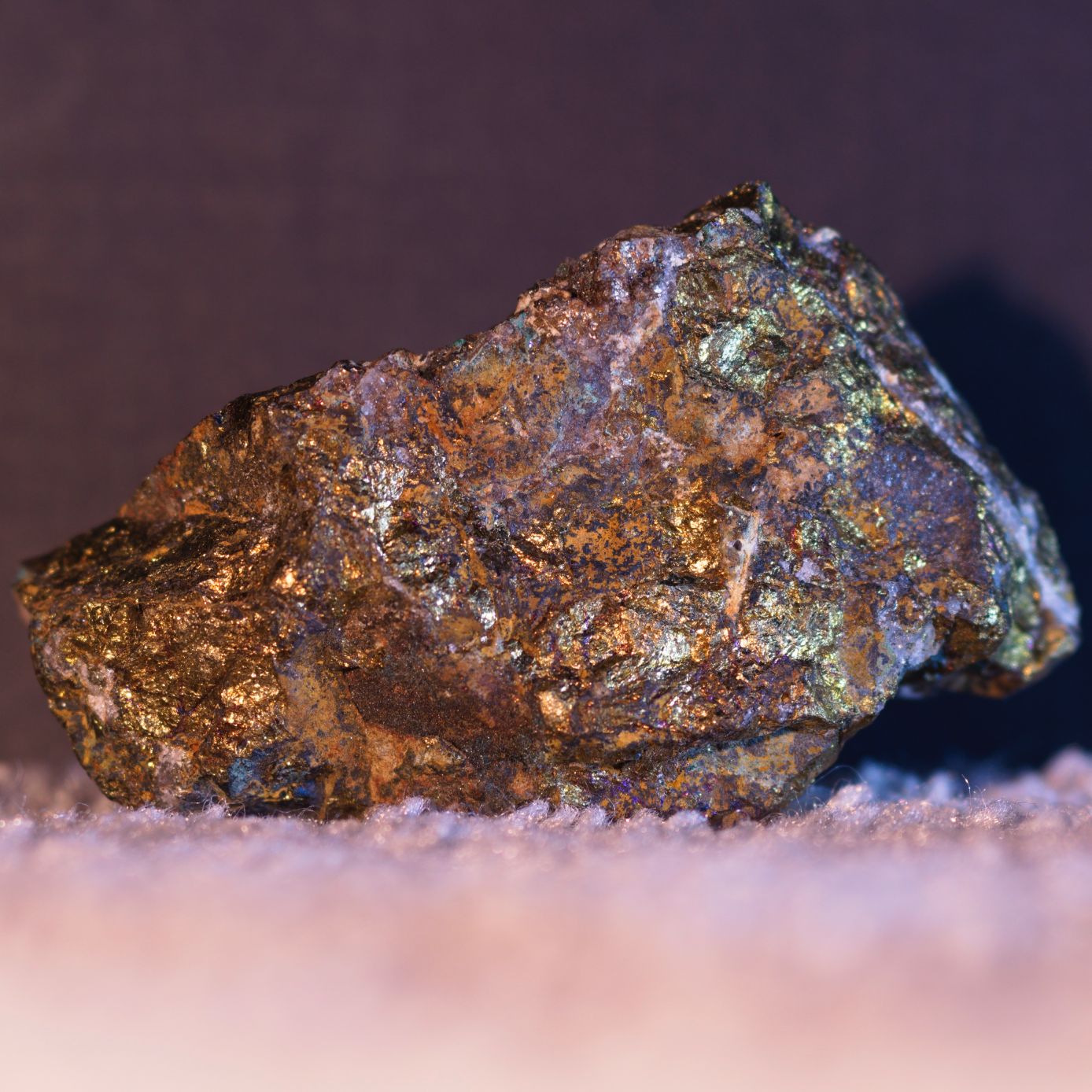
Specimen Qualities
- ID: #71
- Species: Chalcopyrite
- Weight: Unknown
- Locality: Unkown
- Age: Unknown
General Qualities
- Class: Sulphide
- Hardness: 3.5-4
- Habit: Varies
- Cleavage: Indistinct
- Fracture: Irregular to uneven
- Colour: Brass yellow, with areas of iridescence
- Streak: Greenish black
- Lustre: Metallic
- Specific Gravity: 4.1-4.3
- Other: Magnetic when heated
Notes
Becoming a geologist has absolutely ruined any kooky rock/crystal/fossil/gem gift shop I visit.
Now I have to scrutinise every single specimen inside to figure out what is actually genuine and reasonably priced. This chalcopyrite was probably priced £3 higher than it should've been, but that was a lot fairer than the baked amethyst geodes with a price tag of £600.
The most ridiculous thing in there were these horribly preserved and prepared trilobites (a lot of remaining matrix, highly chipped specimens, etc.) priced at £8.80. For comparison, my specimen (ID #5) cost £3.
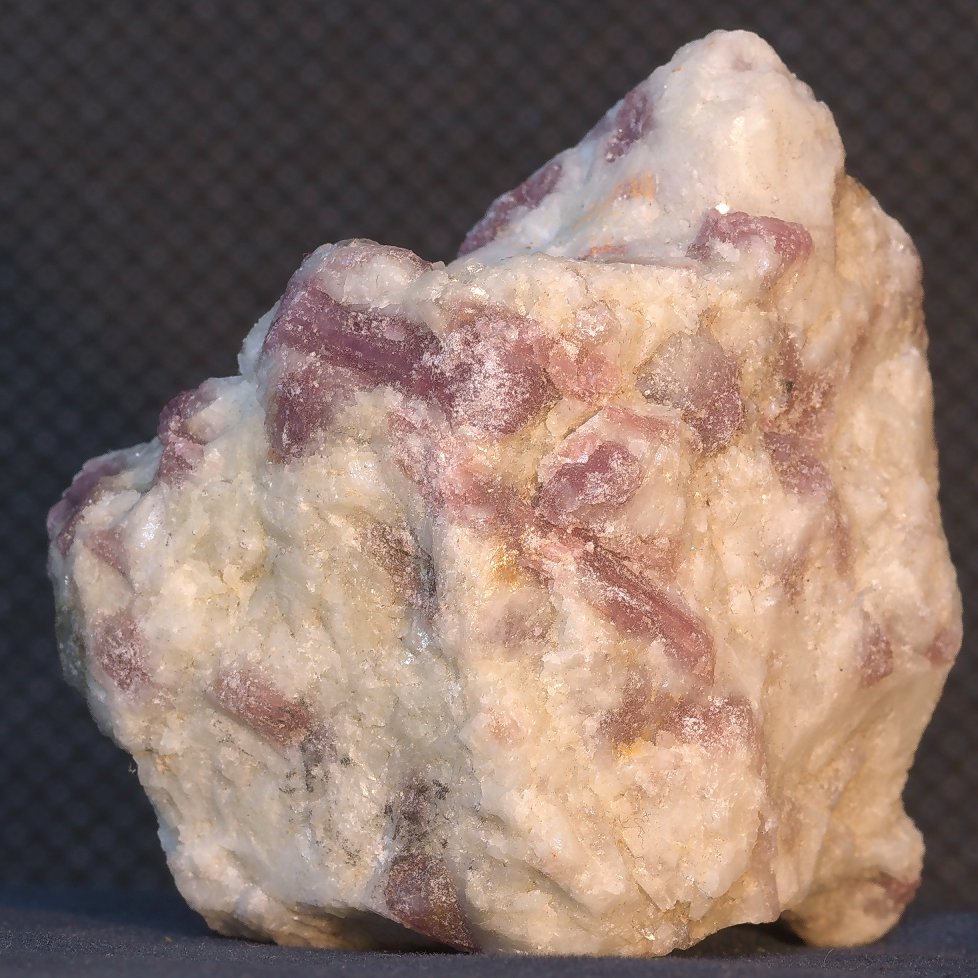
Specimen Qualities
- ID: #33
- Species: Tourmaline
- Weight: Unknown
- Locality: Unkown
- Age: Unknown
General Qualities
- Class: Silicate
- Hardness: 7.0-7.5
- Habit: Parallel and elongated
- Cleavage: None
- Fracture: Conchoidal
- Colour: Commonly black but can range to many colours
- Streak: White
- Lustre: Vitreous
- Specific Gravity: 3.06
- Other: N/A
Notes
Tourmaline was sometimes called the "Ceylonese Magnet" due to its ability to attract and repel hot ashes due to its pyroelectric properties.
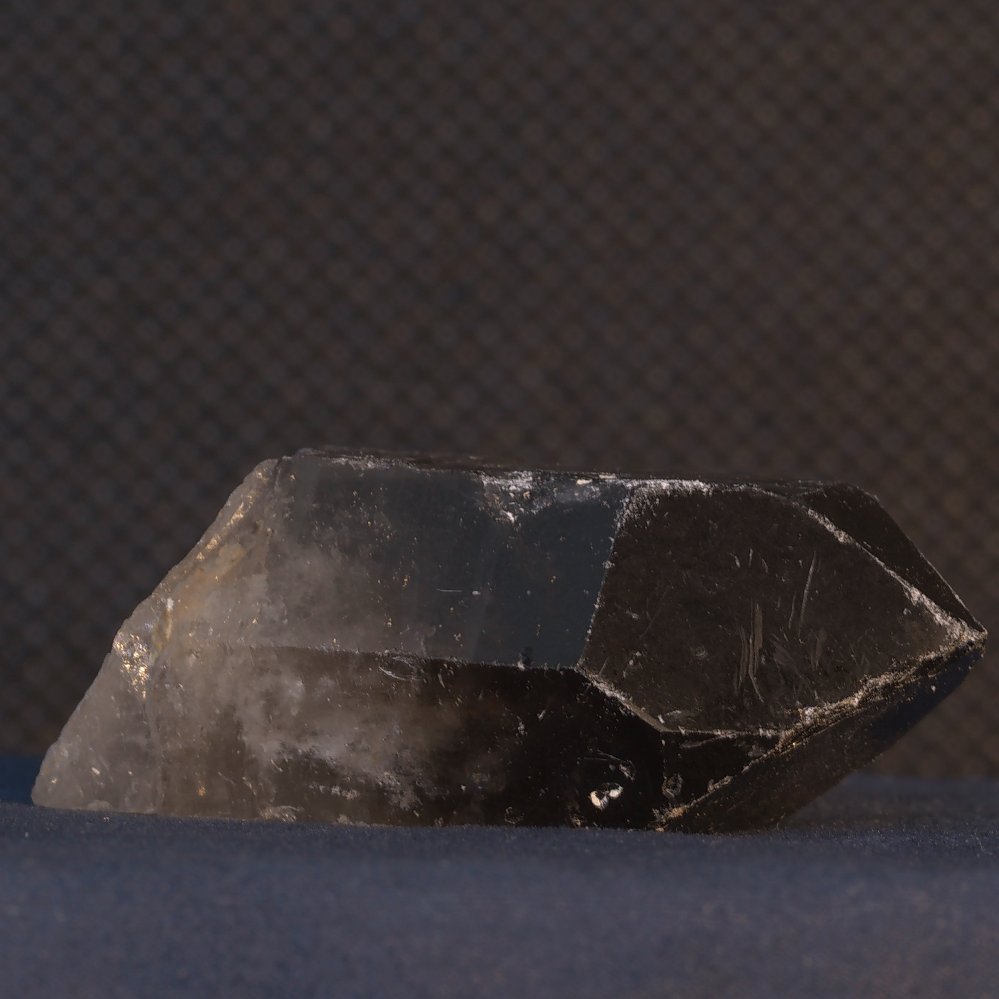
Specimen Qualities
- ID: #32
- Species: Smoky Quartz
- Weight: Unknown
- Locality: Unkown
- Age: Unknown
General Qualities
- Class: Silicate
- Hardness: 7
- Habit: 6-sided prism
- Cleavage: None
- Fracture: Conchoidal
- Colour: Brown to grey, opaque
- Streak: White
- Lustre: Vitreous
- Specific Gravity: 2.65
- Other: Piezoelectric
Notes
Colour is produced when radiation emitted from the surrounding rock activates colour centres around aluminium impurities within the quartz. The shaded colour allowed flat panes of smoky quartz to be used as sunglasses in 12th century China.
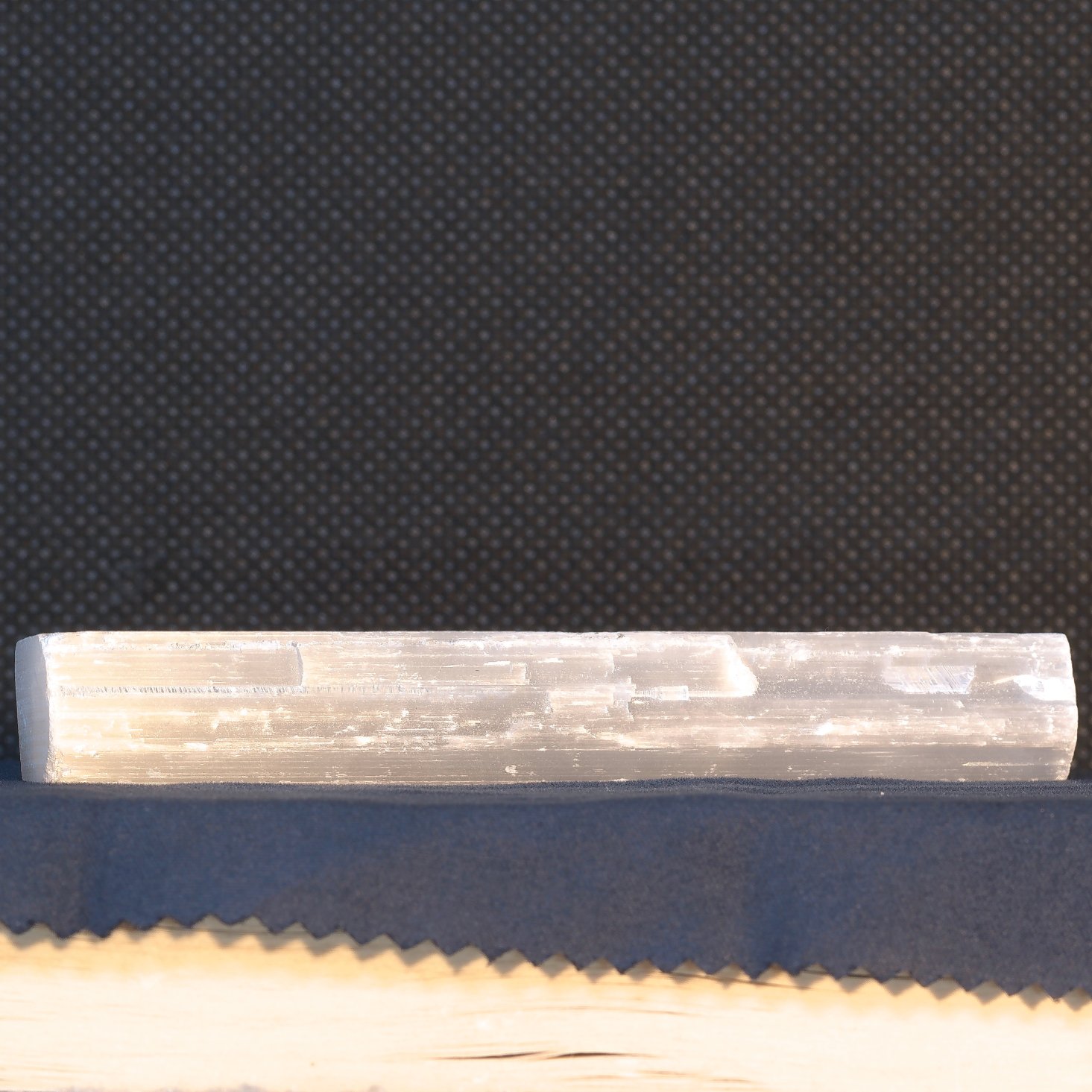
Specimen Qualities
- ID: #31
- Species: Satin Spar
- Weight: Unknown
- Locality: Unkown
- Age: Unknown
General Qualities
- Class: Sulphate
- Hardness: 2
- Habit: No visible
- Cleavage: [010] Perfect, [100] Distinct, [011] Distinct
- Fracture: Fibrous
- Colour: Brown green, brownish yellow, greenish, gray green, gray white
- Streak: White
- Lustre: Pearly
- Specific Gravity: 2.9
- Other: Fluorescent
Notes
Some of the largest crystals ever found are of selenite, with the largest specimen being found in the Naica Mine's Cave of the Crystals which is 12 metres long and weighs 12 tonnes.
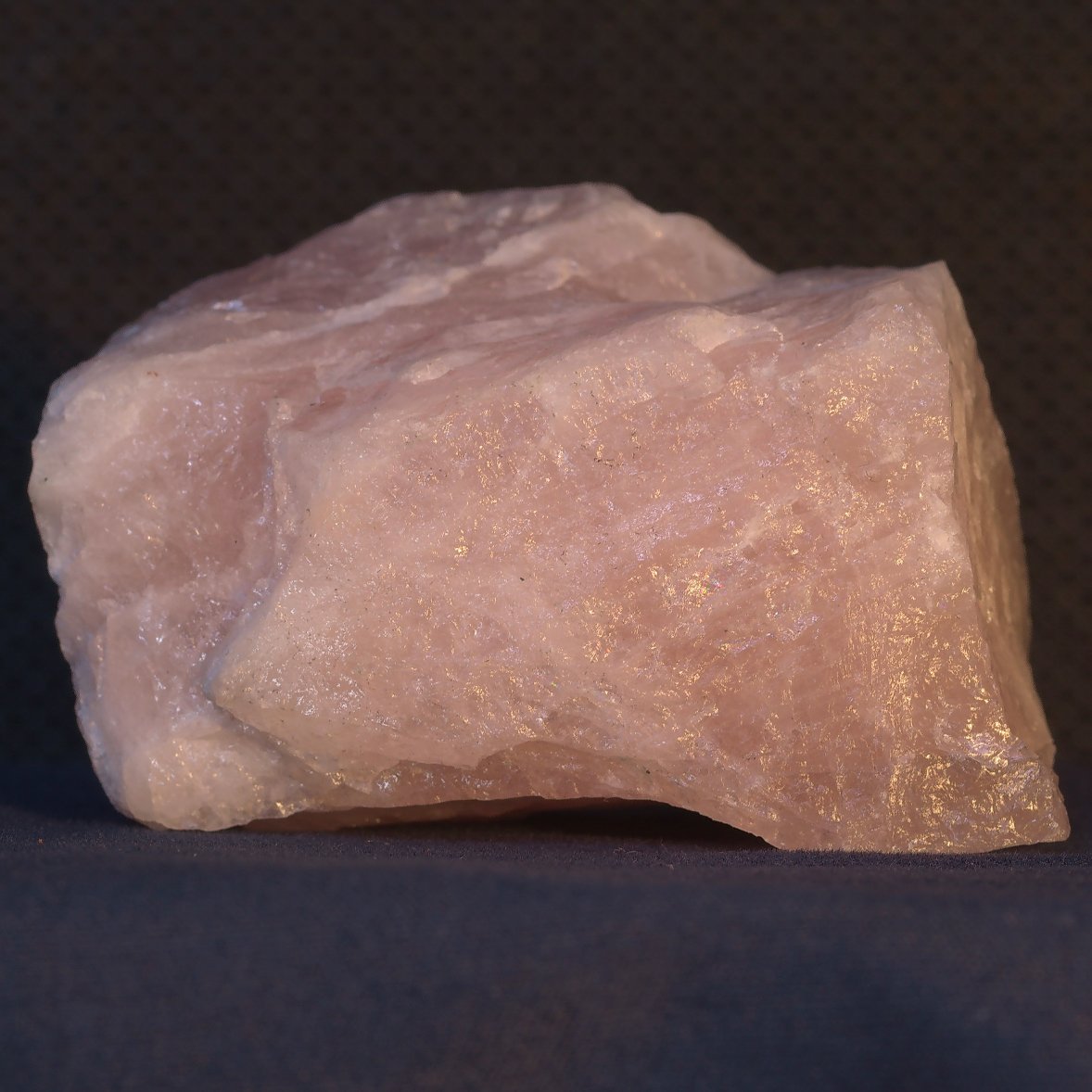
Specimen Qualities
- ID: #30
- Species: Rose Quartz
- Weight: Unknown
- Locality: Unkown
- Age: Unknown
General Qualities
- Class: Silicate
- Hardness: 7
- Habit: 6-sided prism
- Cleavage: None
- Fracture: Conchoidal
- Colour: Colourless, pink, orange, white, green, yellow, blue, purple, dark brown, or black
- Streak: White
- Lustre: Vitreous
- Specific Gravity: 2.65
- Other: Pink colour arises due to trace amounts of titanium, iron, or manganese in the mineral structure.
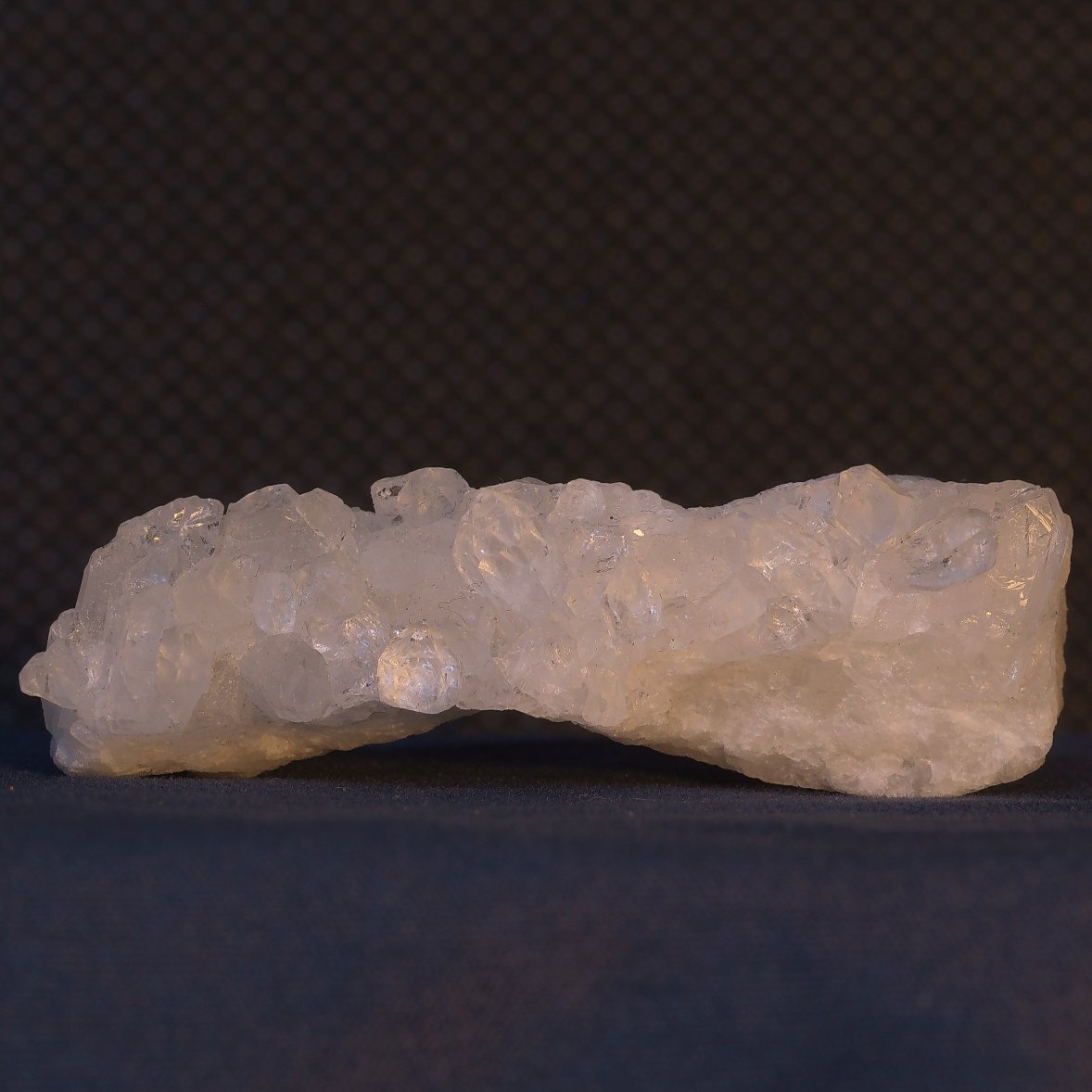
Specimen Qualities
- ID: #29
- Species: Quartz
- Weight: Unknown
- Locality: Unkown
- Age: Unknown
General Qualities
- Class: Silicate
- Hardness: 7
- Habit: 6-sided prism
- Cleavage: None
- Fracture: Conchoidal
- Colour: Colourless, pink, orange, white, green, yellow, blue, purple, dark brown, or black
- Streak: White
- Lustre: Vitreous
- Specific Gravity: 2.65
- Other: Piezoelectric
Notes
The second most abundant mineral in Earth's continental crust (behind feldspar), likely due to it being the most basic of the silicates with a formula of SiO4 and being a framework of silicate tetrahedra.
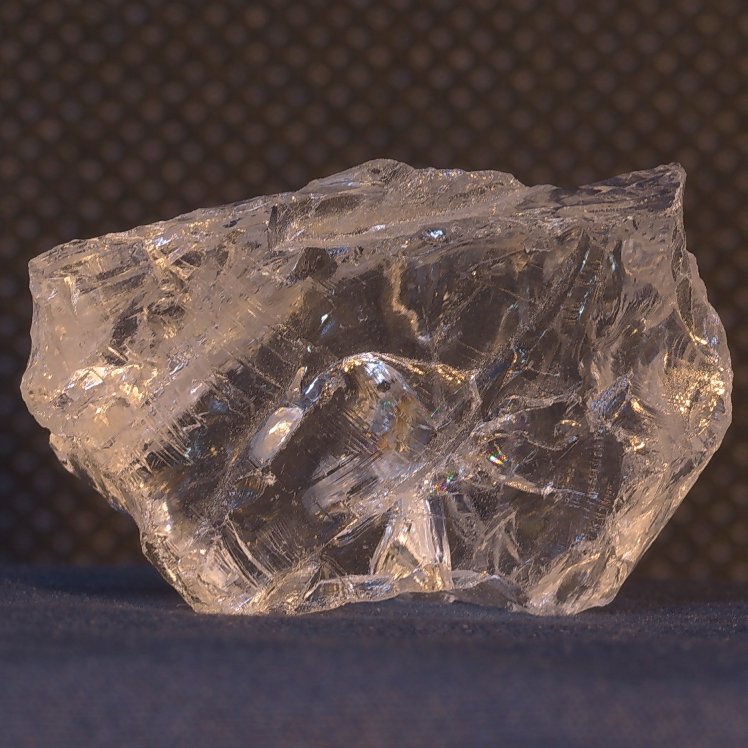
Specimen Qualities
- ID: #28
- Species: Quartz
- Weight: Unknown
- Locality: Unkown
- Age: Unknown
General Qualities
- Class: Silicate
- Hardness: 7
- Habit: 6-sided prism
- Cleavage: None
- Fracture: Conchoidal
- Colour: Colourless, pink, orange, white, green, yellow, blue, purple, dark brown, or black
- Streak: White
- Lustre: Vitreous
- Specific Gravity: 2.65
- Other: Piezoelectric
Notes
Quartz is the defining mineral for 7 on the Mohs scale of hardness, the qualitative scratch system for determining material hardness.
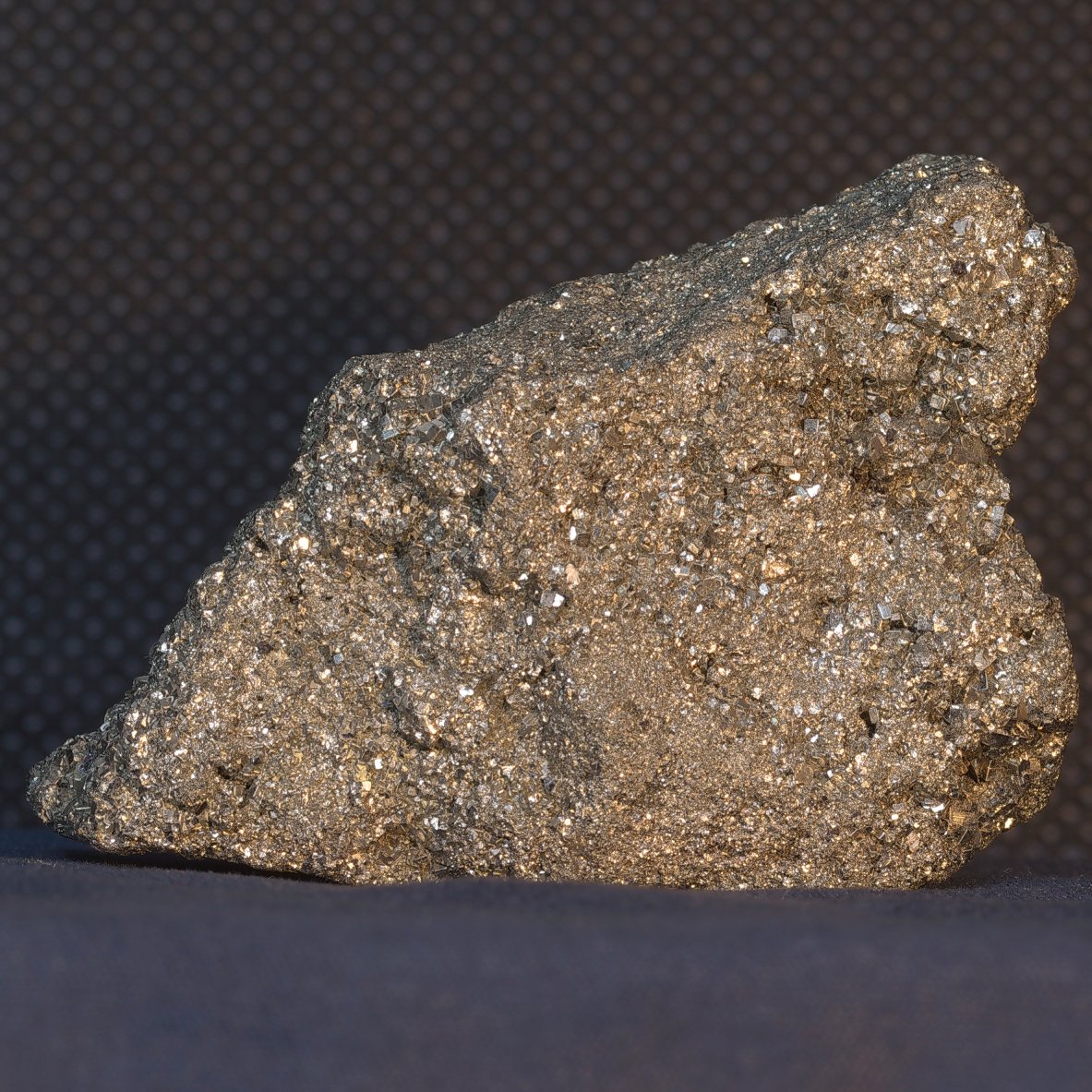
Specimen Qualities
- ID: #27
- Species: Pyrite
- Weight: Unknown
- Locality: Unkown
- Age: Unknown
General Qualities
- Class: Sulphide
- Hardness: 6-6.5
- Habit: Cubic
- Cleavage: N/A
- Fracture: Conchoidal
- Colour: Brassy-yellow
- Streak: Greenish-black
- Lustre: Metallic
- Specific Gravity: 5
- Other: Paramagnetic
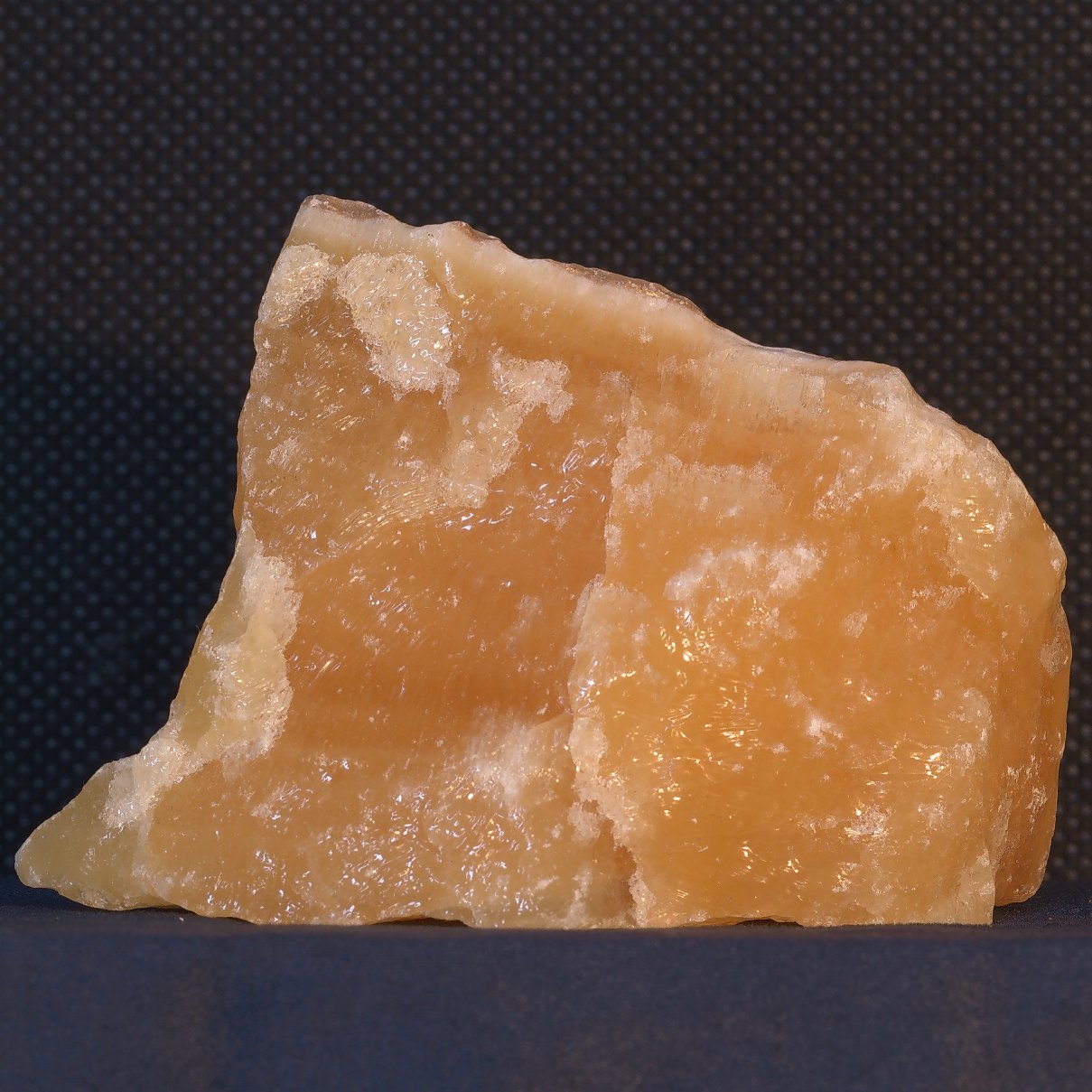
Specimen Qualities
- ID: #26
- Species: Orange Calcite
- Weight: Unknown
- Locality: Unkown
- Age: Unknown
General Qualities
- Class: Carbonate
- Hardness: 3
- Habit: Rhombohedral
- Cleavage: 2 not at 90°
- Fracture: Conchoidal
- Colour: Typically colourless or creamy white, may have shades of brownish colours
- Streak: White
- Lustre: Vitreous
- Specific Gravity: 2.71
- Other: N/A
Notes
Probably one of the more delicious looking minerals I own, on account of it looking like a huge chunk of orange.
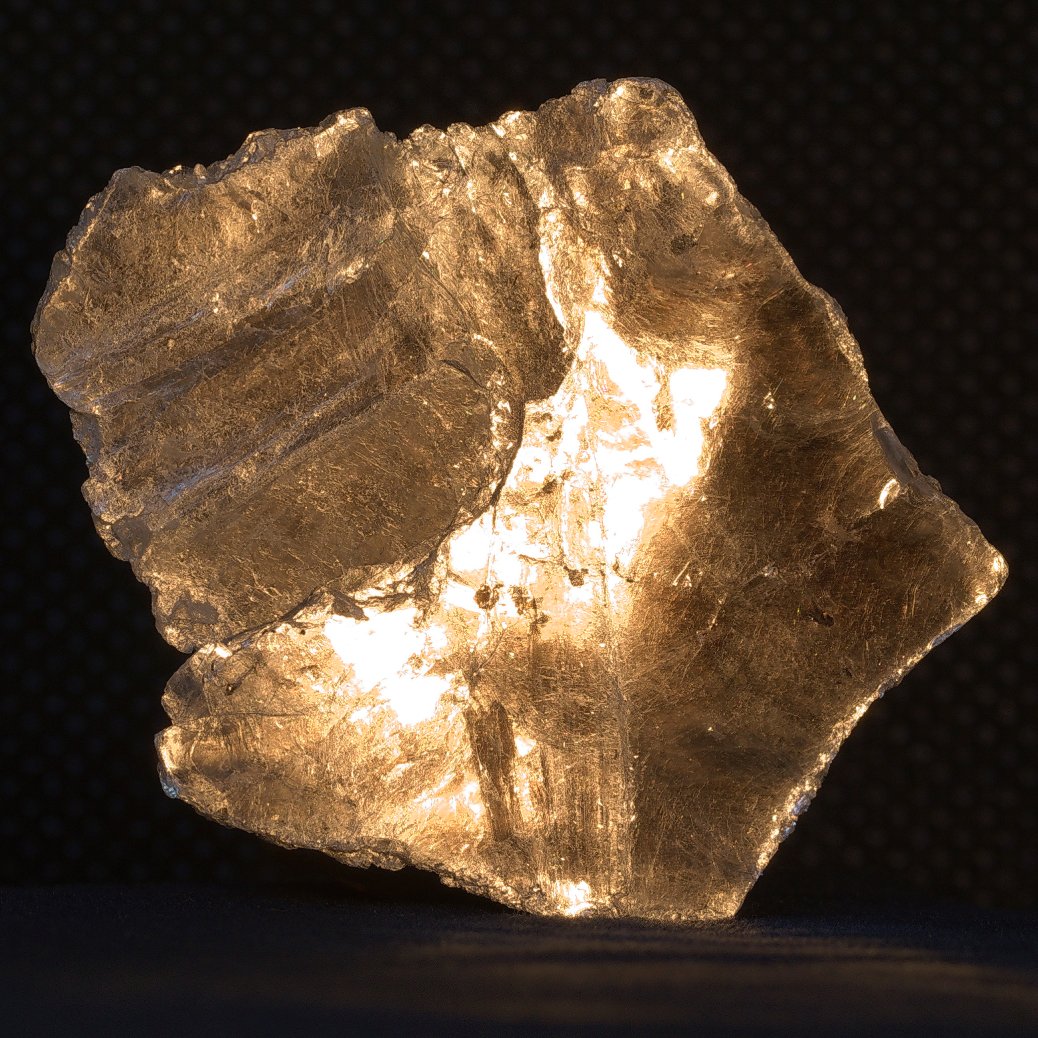
Specimen Qualities
- ID: #25
- Species: Muscovite
- Weight: Unknown
- Locality: Unkown
- Age: Unknown
General Qualities
- Class: Silicate
- Hardness: 2-2.5
- Habit: Massive to platy
- Cleavage: Perfect on the {001}
- Fracture: Micaceous
- Colour: White, grey, silvery
- Streak: White
- Lustre: Vitreous
- Specific Gravity: 2.76
- Other: N/A
Notes
This sample is shockingly reflective and required me to knock the shutter speed down to a fraction of a second for the image to not be completely overexposed, compared to around 2-3 seconds for every other specimen.
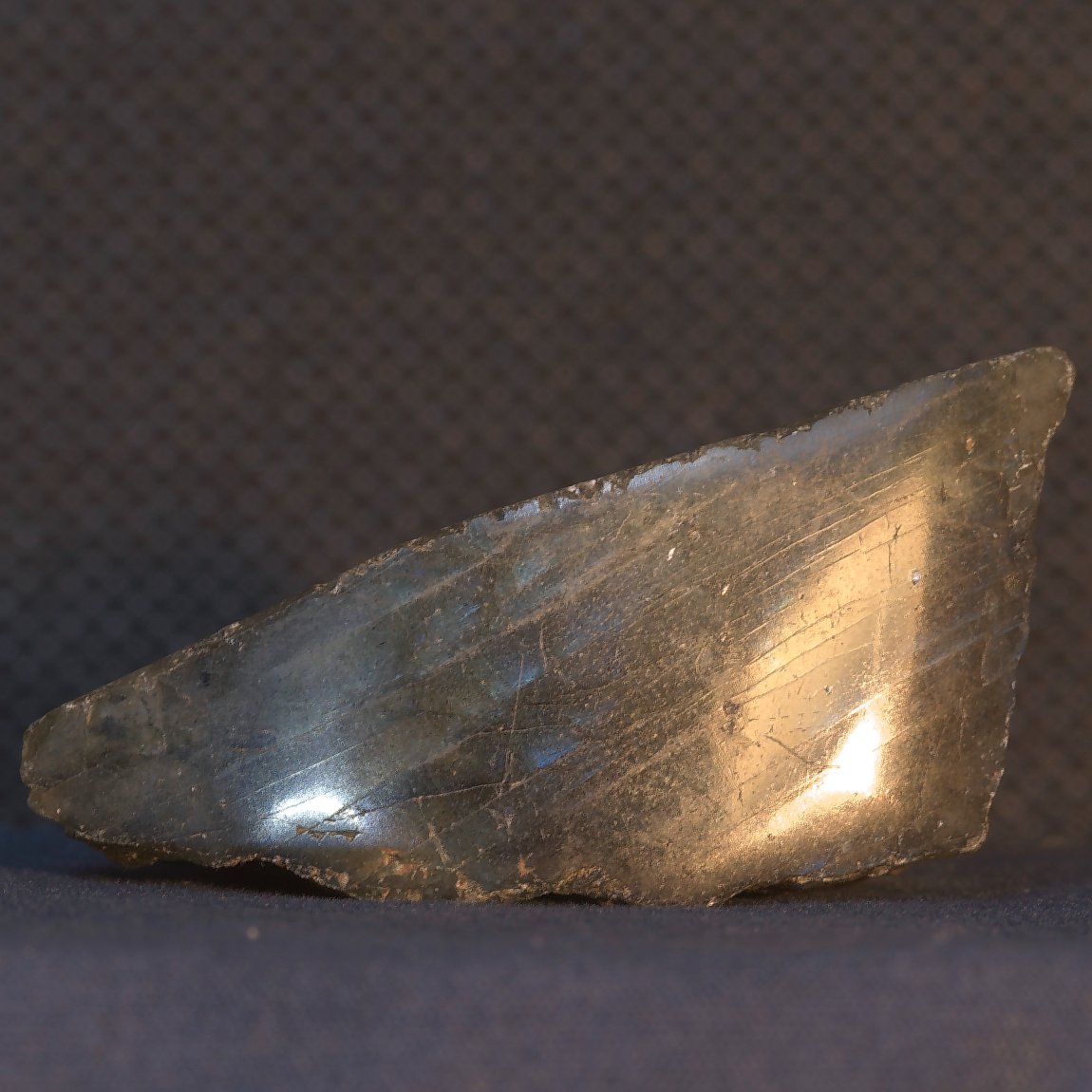
Specimen Qualities
- ID: #24
- Species: Labradorite
- Weight: Unknown
- Locality: Unkown
- Age: Unknown
General Qualities
- Class: Silicate
- Hardness: 6-6.5
- Habit: Thin and tabular
- Cleavage: Perfect on {001}, less perfect on {010}, intersecting at near 90°; distinct on {110}
- Fracture: Uneven to conchoidal
- Colour: Gray, gray-white, brown, greenish, pale green, blue, orange, pink, yellow, colourless
- Streak: White
- Lustre: Vitreous
- Specific Gravity: 2.68
- Other: Iridescent
Notes
The specific name for the iridescence exhibited by labradorite is quite appropriately called labradorescence!
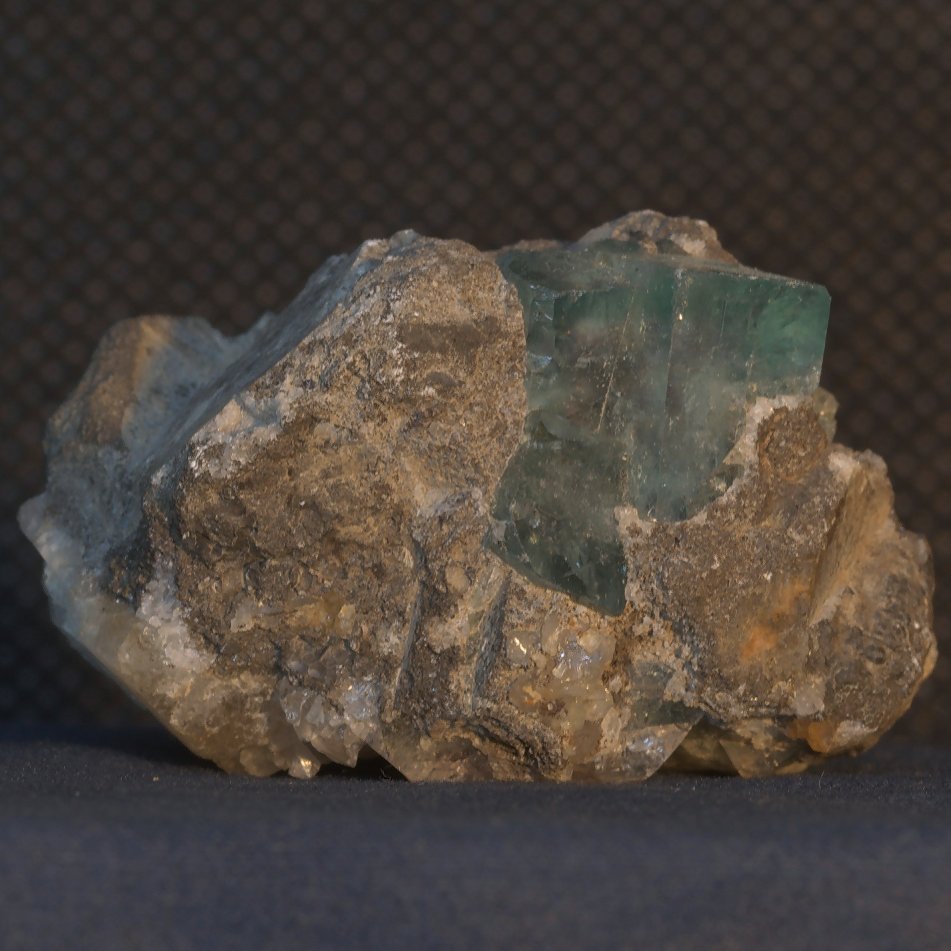
Specimen Qualities
- ID: #23
- Species: Fluorite
- Weight: Unknown
- Locality: Unkown
- Age: Unknown
General Qualities
- Class: Halide
- Hardness: 4
- Habit: Varies
- Cleavage: Octahedral
- Fracture: Subconchoidal to uneven
- Colour: Colourless, although samples are often deeply colored owing to impurities; Purple, lilac, golden-yellow, green, blue, pink, champagne, brown.
- Streak: White
- Lustre: Vitreous
- Specific Gravity: 3.175
- Other: May be fluorescent
Notes
There is something about this sample that makes it incapable to photograph well, in every setup or with any lens I have tried it has been impossible to get a sharp image of it. I can only assume it is cursed.
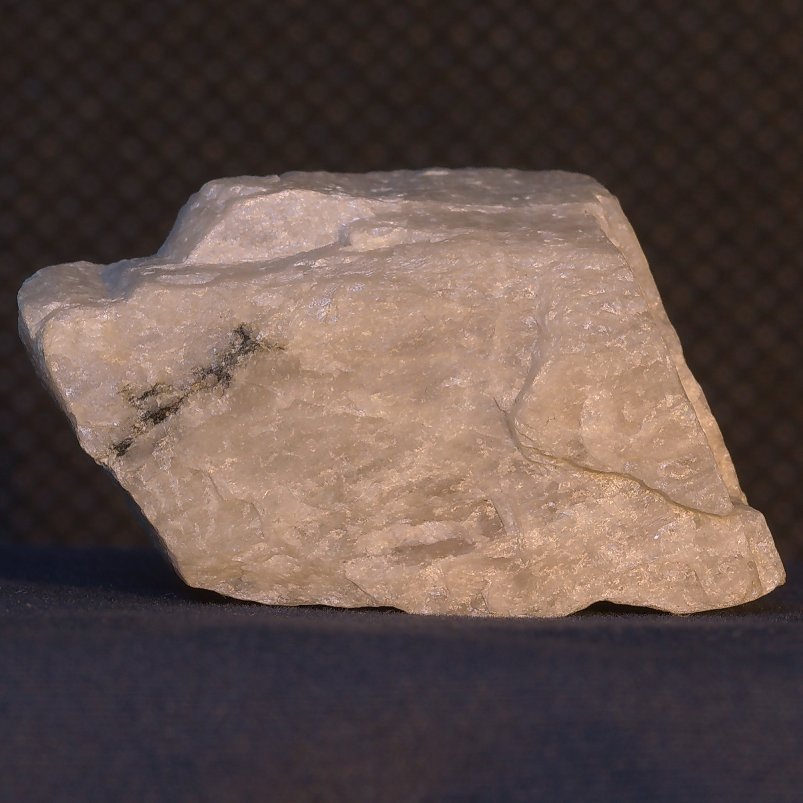
Specimen Qualities
- ID: #22
- Species: Plagioclase
- Weight: Unknown
- Locality: Unkown
- Age: Unknown
General Qualities
- Class: Silicate
- Hardness: 6-6.5
- Habit: Varies
- Cleavage: 2 not at 90°
- Fracture: Uneven to conchoidal
- Colour: White, grey, or bluish white
- Streak: White
- Lustre: Vitreous
- Specific Gravity: 2.69
- Other: Forms a solid solution series from albite to anorthite
Notes
Analysis of thermal emission spectra from the surface of Mars suggests that plagioclase is the most abundant mineral in the crust of Mars.
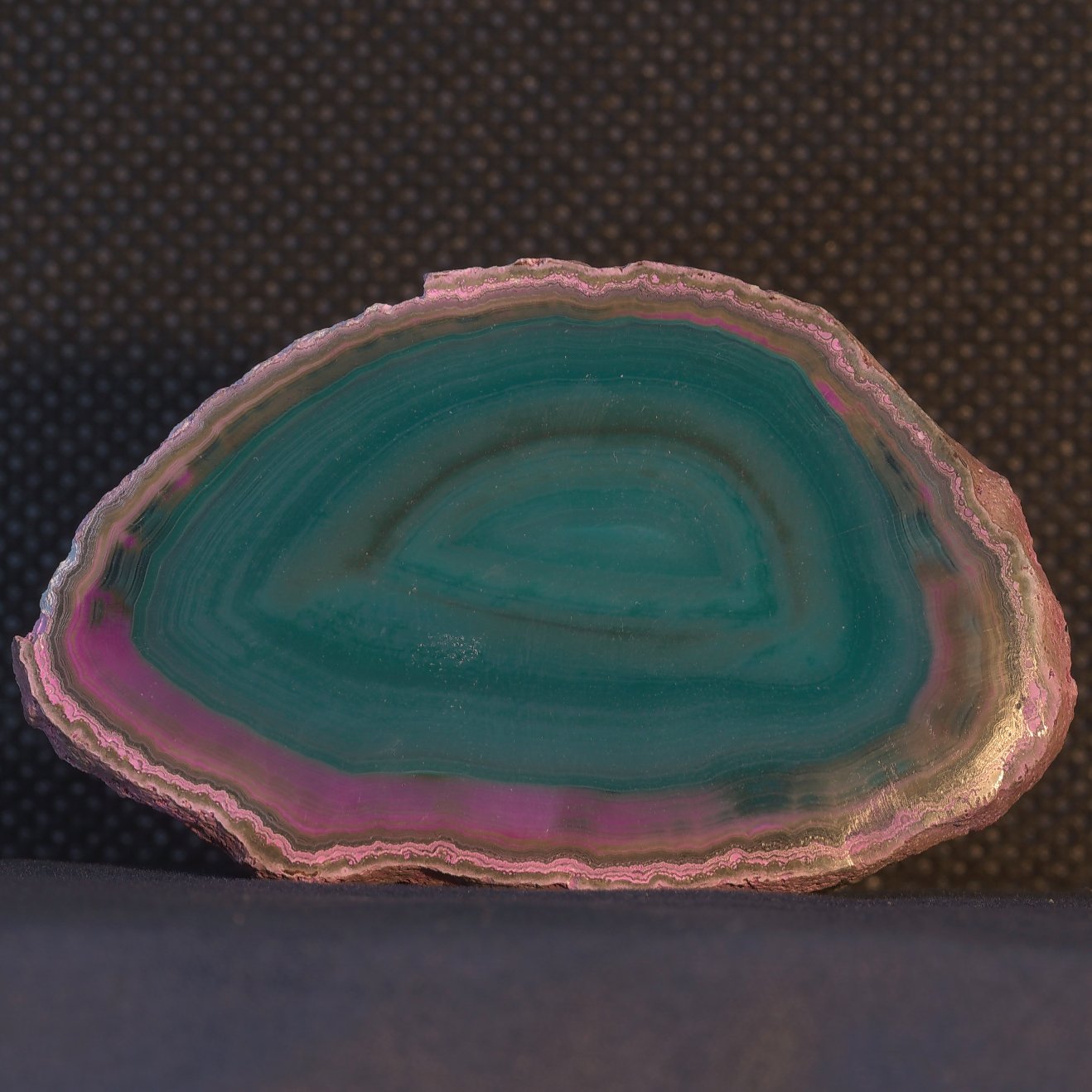
Specimen Qualities
- ID: #21
- Species: Agate Slice (Dyed)
- Weight: Unknown
- Locality: Unkown
- Age: Unknown
General Qualities
- Class: Silicate
- Hardness: 6.5-7
- Habit: Cryptocrystalline
- Cleavage: None
- Fracture: Conchoidal
- Colour: Often multicoloured; commonly colourless, pale blue to black, red to orange, yellow, white, brown, pink, purple; rarely green
- Streak: White
- Lustre: Waxy
- Specific Gravity: 2.60
- Other: N/A
Notes
Unsure where I acquired this considering it isn't from the "crap I bought when I was 7" collection, that features other painfully obvious dyed rocks.
In terms of actual agate geology, formation of the bands is poorly understood. It can't be directly observed nor have agates been successfully lab-grown.
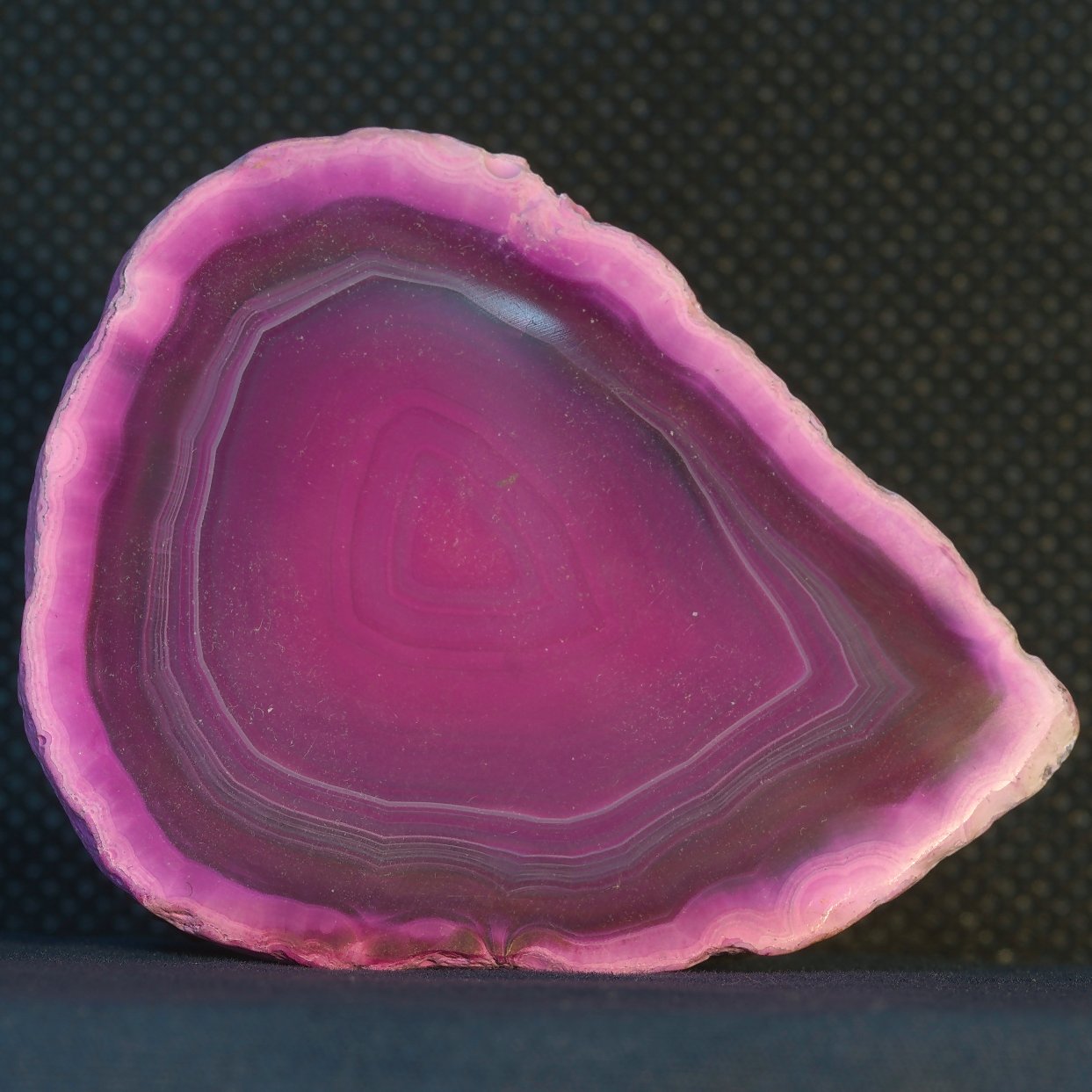
Specimen Qualities
- ID: #20
- Species: Agate Slice (Dyed)
- Weight: Unknown
- Locality: Unkown
- Age: Unknown
General Qualities
- Class: Silicate
- Hardness: 6.5-7
- Habit: Cryptocrystalline
- Cleavage: None
- Fracture: Conchoidal
- Colour: Often multicoloured; commonly colourless, pale blue to black, red to orange, yellow, white, brown, pink, purple; rarely green
- Streak: White
- Lustre: Waxy
- Specific Gravity: 2.60
- Other: N/A
Notes
A specimen from the "crap I bought when I was 7" collection, thus very obviously dyed to give it such a strong pink colouring.
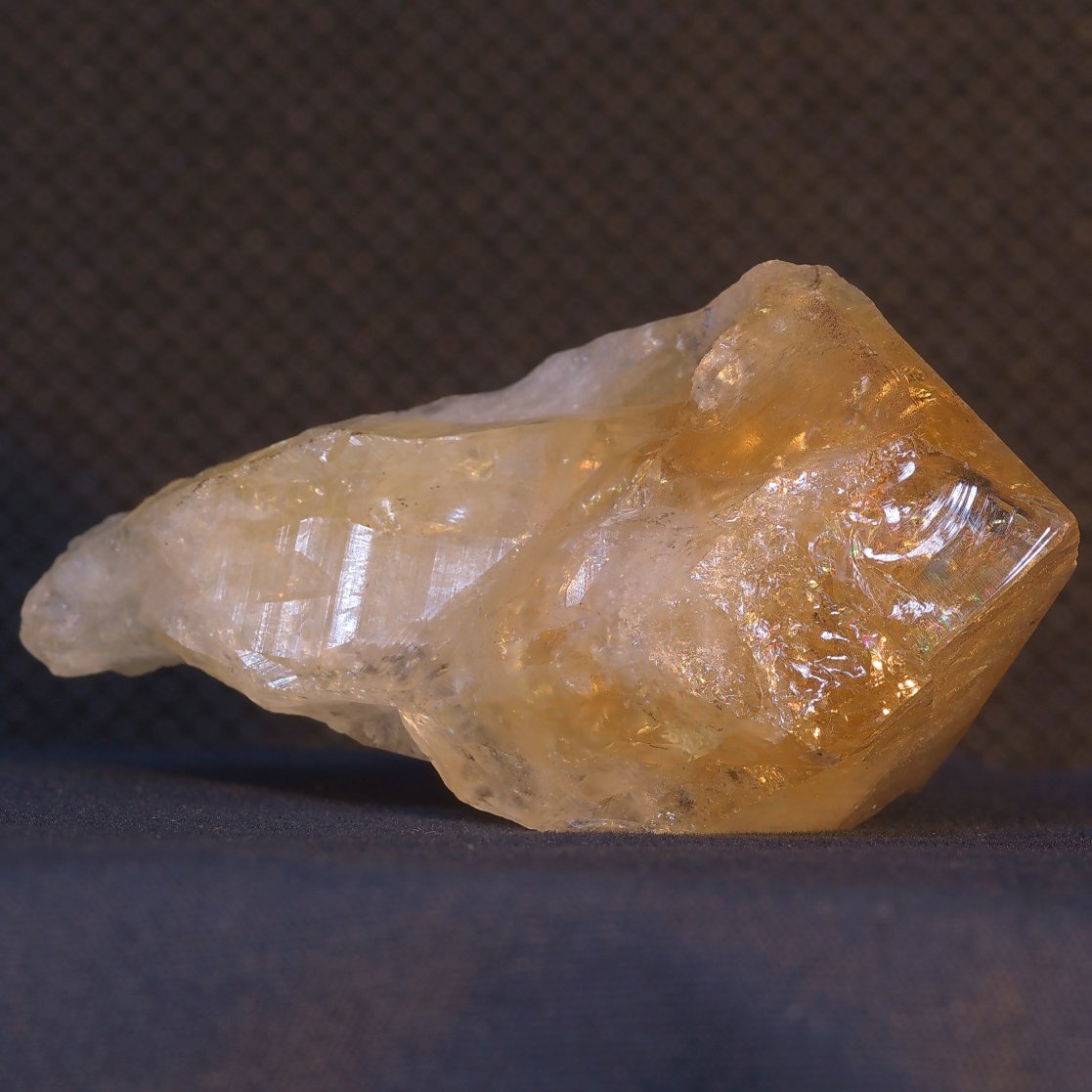
Specimen Qualities
- ID: #19
- Species: Citrine
- Weight: Unknown
- Locality: Unkown
- Age: Unknown
General Qualities
- Class: Silicate
- Hardness: 7
- Habit: Varies
- Cleavage: None
- Fracture: Conchoidal
- Colour: Pale yellow, with orange, green, or smoky hues
- Streak: White
- Lustre: Vitreous
- Specific Gravity: 2.65
- Other: N/A
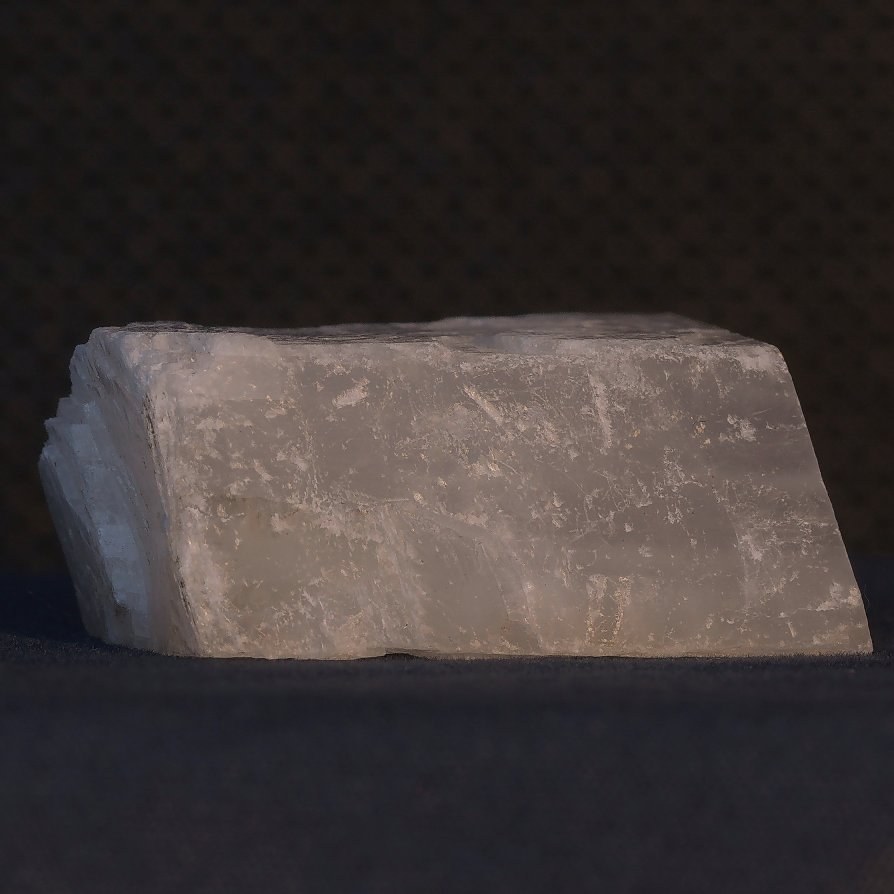
Specimen Qualities
- ID: #18
- Species: Calcite
- Weight: Unknown
- Locality: Unkown
- Age: Unknown
General Qualities
- Class: Carbonate
- Hardness: 3
- Habit: Rhombohedral
- Cleavage: 2 not at 90°
- Fracture: Conchoidal
- Colour: Typically colourless or creamy white, may have shades of brownish colours
- Streak: White
- Lustre: Vitreous
- Specific Gravity: 2.71
- Other: N/A
Notes
Calcite is the defining mineral for 3 on the Mohs scale of hardness, the qualitative scratch system for determining material hardness.
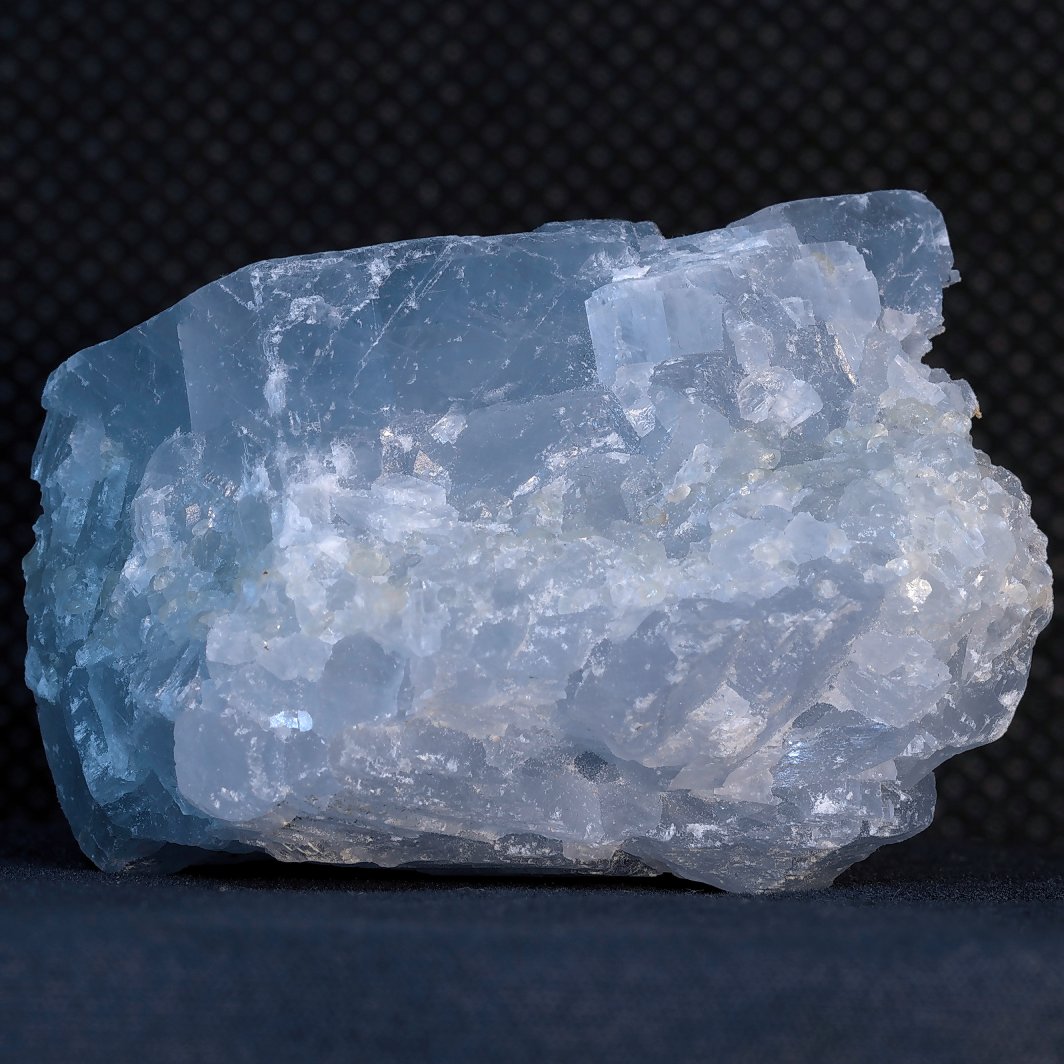
Specimen Qualities
- ID: #17
- Species: Blue Calcite
- Weight: Unknown
- Locality: Unkown
- Age: Unknown
General Qualities
- Class: Carbonate
- Hardness: 3
- Habit: Rhombohedral
- Cleavage: 2 not at 90°
- Fracture: Conchoidal
- Colour: Typically colourless or creamy white, may have shades of brownish colours
- Streak: White
- Lustre: Vitreous
- Specific Gravity: 2.71
- Other: N/A
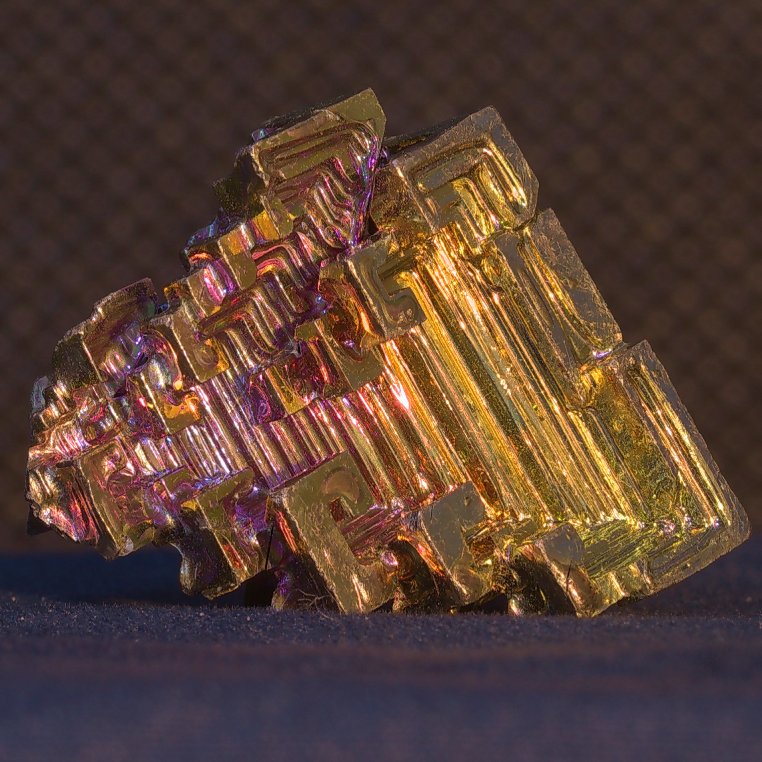
Specimen Qualities
- ID: #16
- Species: Bismuth
- Weight: Unknown
- Locality: Unkown
- Age: Unknown
General Qualities
- Class: N/A
- Hardness: 2.25
- Habit: N/A
- Cleavage: N/A
- Fracture: N/A
- Colour: Silvery-white but vividuly iridescent after heat treatment
- Streak: N/A
- Lustre: N/A
- Specific Gravity: N/A
- Other: N/A
Notes
Obviously not a mineral, but considering a brick is also on this page I think it's reasonable to include. Plus, it looks awesome.
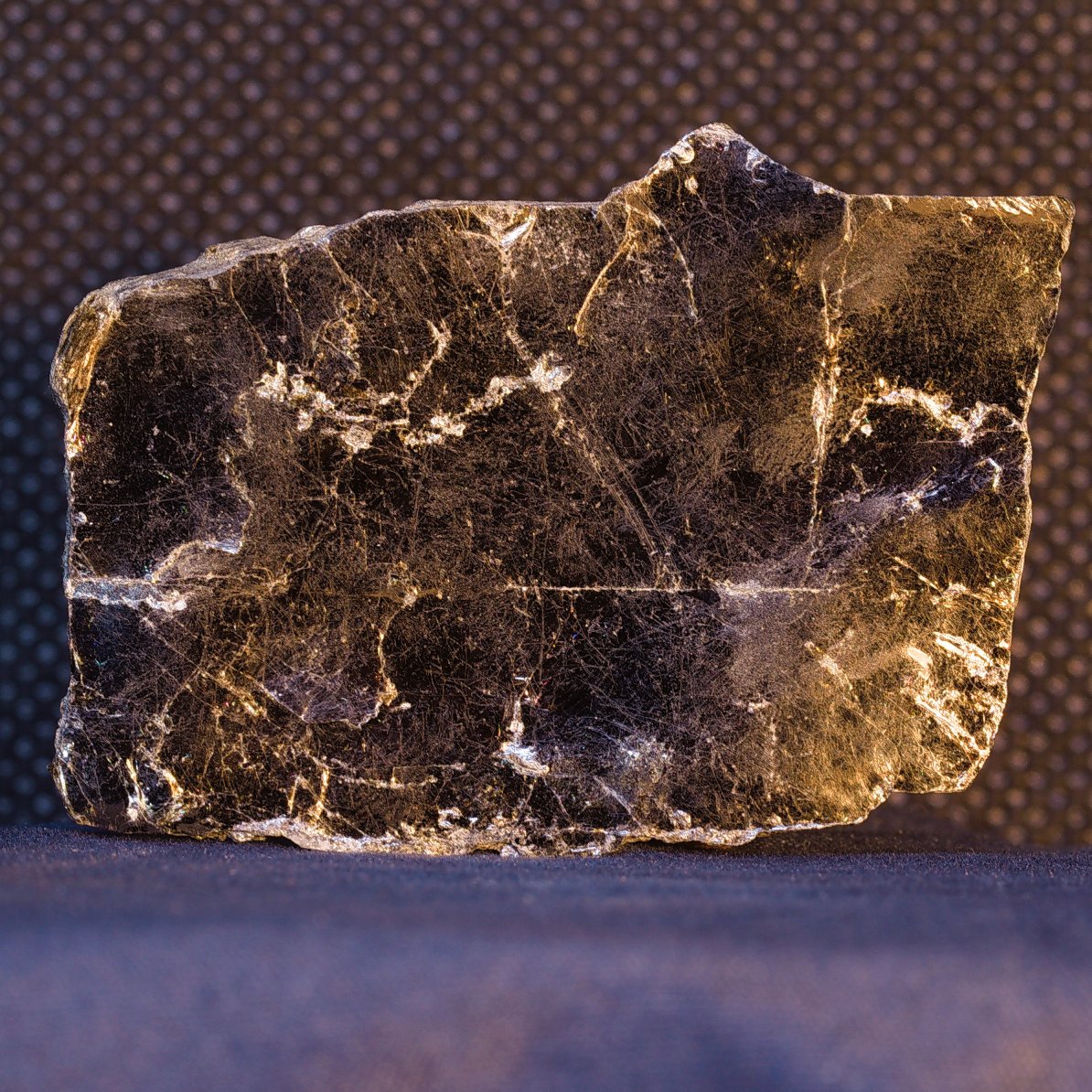
Specimen Qualities
- ID: #15
- Species: Biotite
- Weight: Unknown
- Locality: Unkown
- Age: Unknown
General Qualities
- Class: Silicate
- Hardness: 2.5-3.0
- Habit: Massive to platy
- Cleavage: Perfect on the {001}
- Fracture: Micaceous
- Colour: Dark brown, greenish-brown, blackish-brown, yellow
- Streak: White
- Lustre: Vitreous to pearly
- Specific Gravity: 2.7
- Other: N/A
Notes
If you're ever considering to be a geology teacher within a carpeted classroom, I hope you enjoy spending half of your life picking up biotite flakes from the carpet whenever your students start peeling layers like there's no tomorrow during the introductory mineralogy lesson.
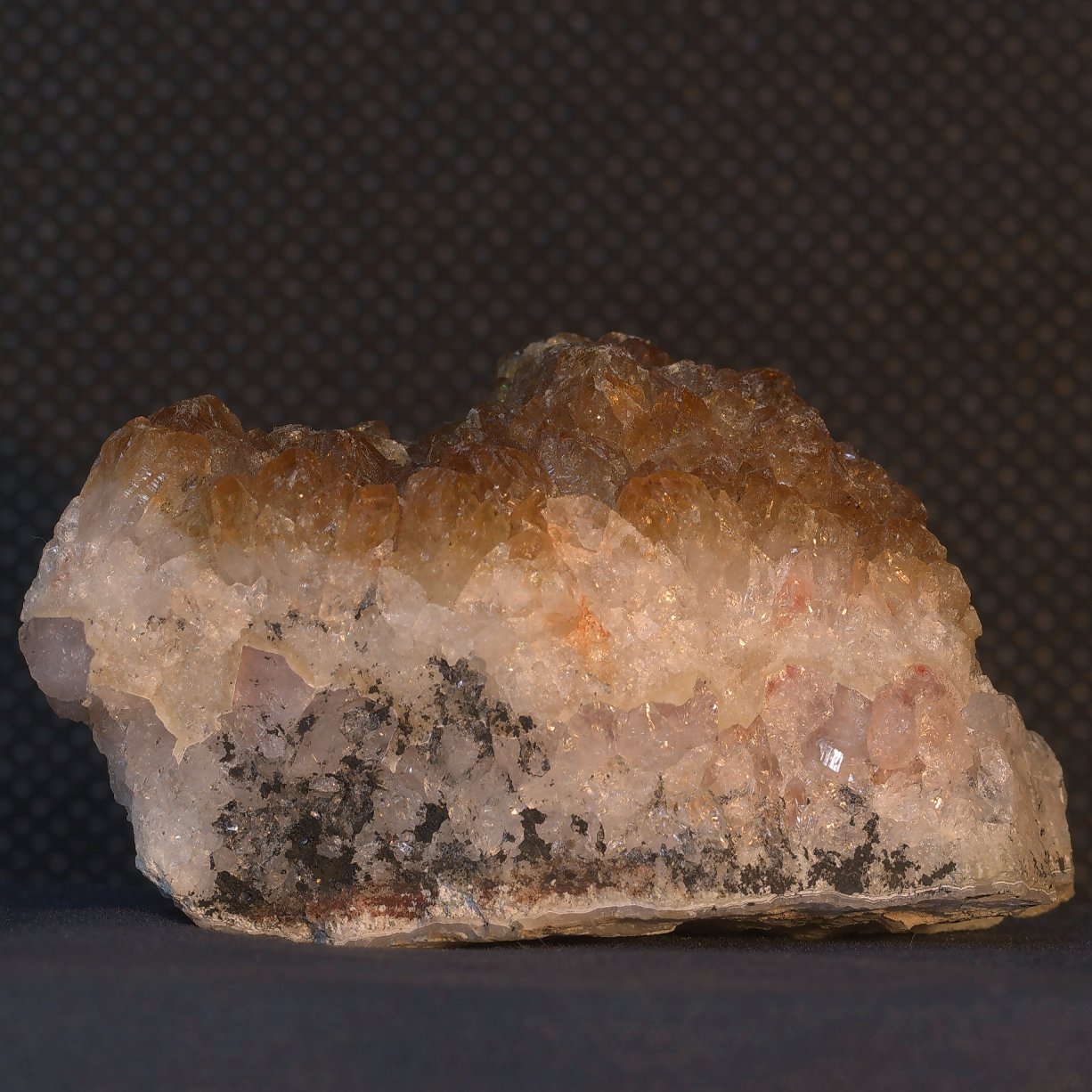
Specimen Qualities
- ID: #14
- Species: "Citrine" (Baked Amethyst)
- Weight: Unknown
- Locality: Unkown
- Age: Unknown
General Qualities
- Class: Silicate
- Hardness: 7
- Habit: Prismatic
- Cleavage: N/A
- Fracture: Conchoidal
- Colour: Violet
- Streak: White
- Lustre: Vitreous
- Specific Gravity: 2.65
- Other: Colour arises from heat treatment
Notes
Due to the rarity of natural citrine, most "citrine" you'll ever see for sale is actually heat-treated (baked) amethyst. You can typically tell the difference as heat-treated amethyst has a brown tint to the yellow colour or exhibits a hexagonal crystal habit (impossible for natural citrine to do).
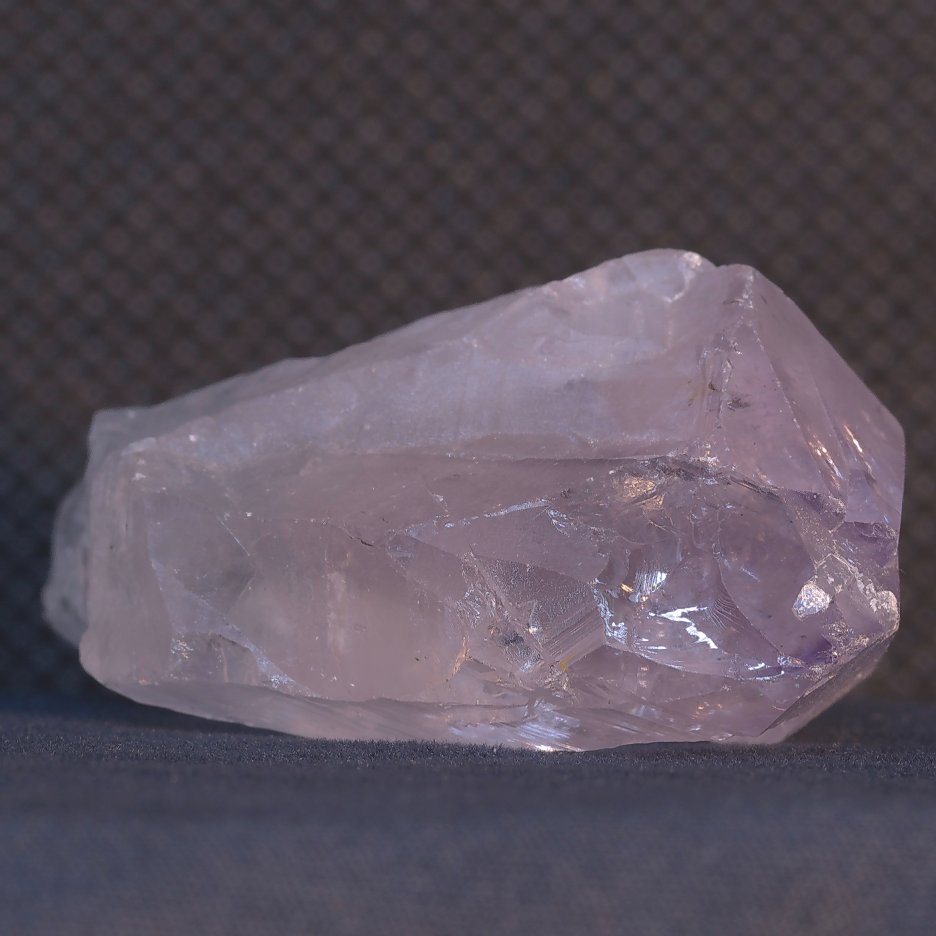
Specimen Qualities
- ID: #13
- Species: Amethyst
- Weight: Unknown
- Locality: Unkown
- Age: Unknown
General Qualities
- Class: Silicate
- Hardness: 7
- Habit: Prismatic
- Cleavage: N/A
- Fracture: Conchoidal
- Colour: Violet
- Streak: White
- Lustre: Vitreous
- Specific Gravity: 2.65
- Other: Piezoelectric
Notes
Extremely weak in colour that is barely perceptible in the photo
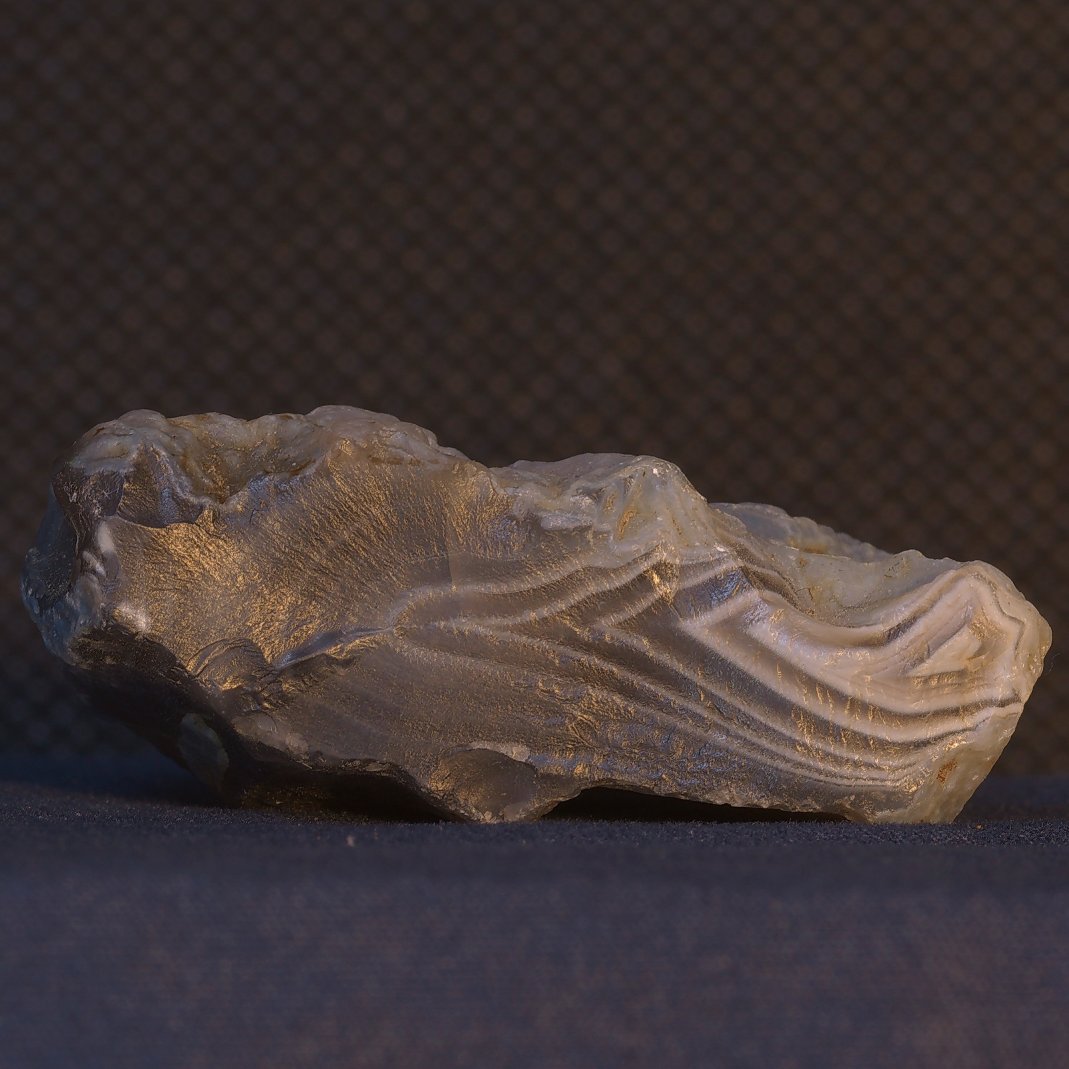
Specimen Qualities
- ID: #12
- Species: Agate
- Weight: Unknown
- Locality: Unkown
- Age: Unknown
General Qualities
- Class: Silicate
- Hardness: 6.5-7
- Habit: Cryptocrystalline
- Cleavage: None
- Fracture: Conchoidal
- Colour: Often multicoloured; commonly colourless, pale blue to black, red to orange, yellow, white, brown, pink, purple; rarely green
- Streak: White
- Lustre: Waxy
- Specific Gravity: 2.60
- Other: N/A
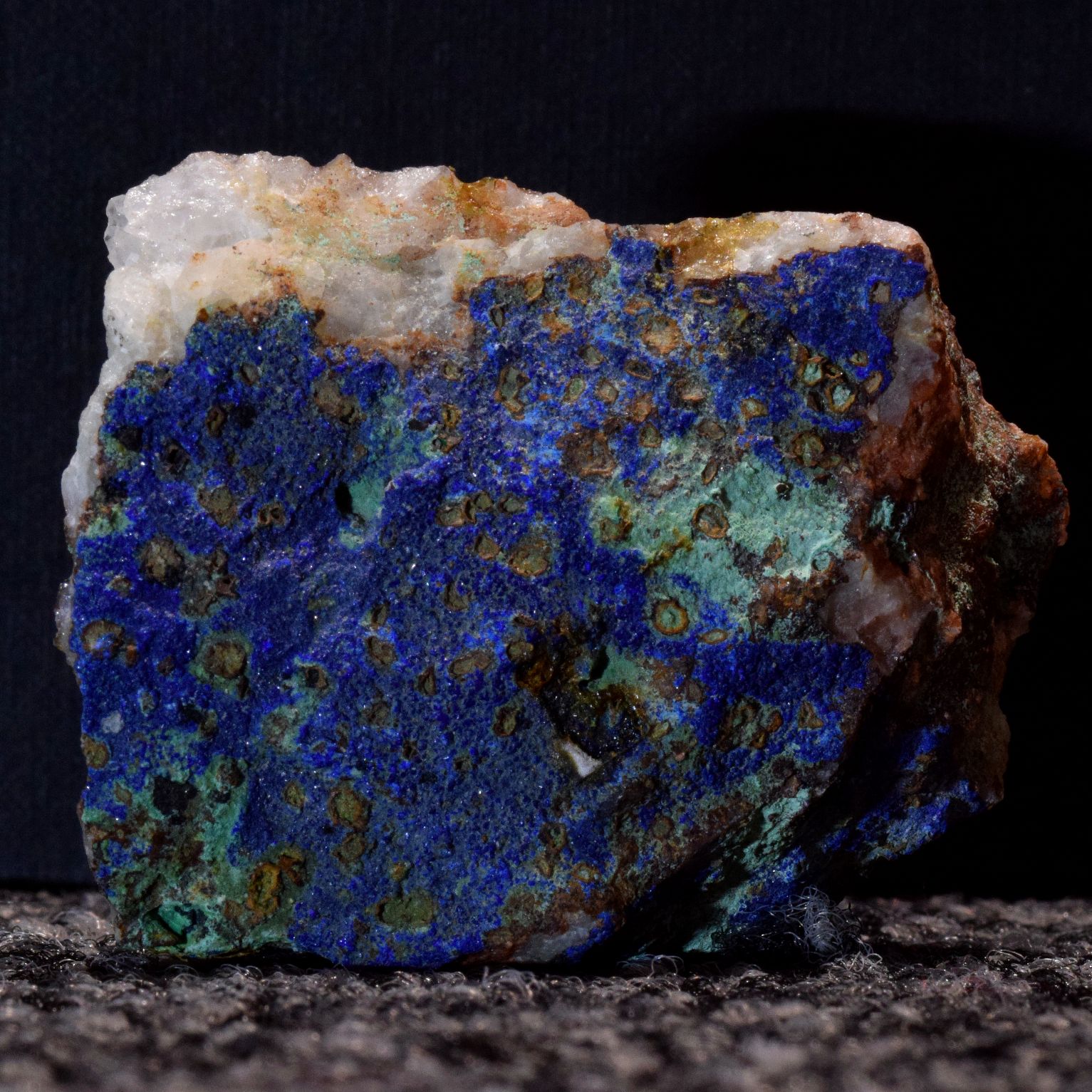
Specimen Qualities
- ID: #11
- Species: Azurite
- Weight: Unknown
- Locality: Canary Islands
- Age: Unknown
General Qualities
- Class: Carbonate
- Hardness: 3.504
- Habit: Varies
- Cleavage: Perfect on {011}, fair on {100}, poor on {110}
- Fracture: Conchoidal
- Colour: Deep-Blue
- Streak: Light-Bluek
- Lustre: Vitreous
- Specific Gravity: 3.78
- Other: N/A
Notes
Azurite is produced by the oxidation of copper ore deposits, however because of its instability in open-air it is often pseudomorphologically replaced (crystal dimensionss maintained, but mineral replaced) by very green malachite.
I found, probably, the most pathetic grain of azurite on fieldwork one time, significantly smaller than a popcorn kernel, so this specimen is a marginal improvement.
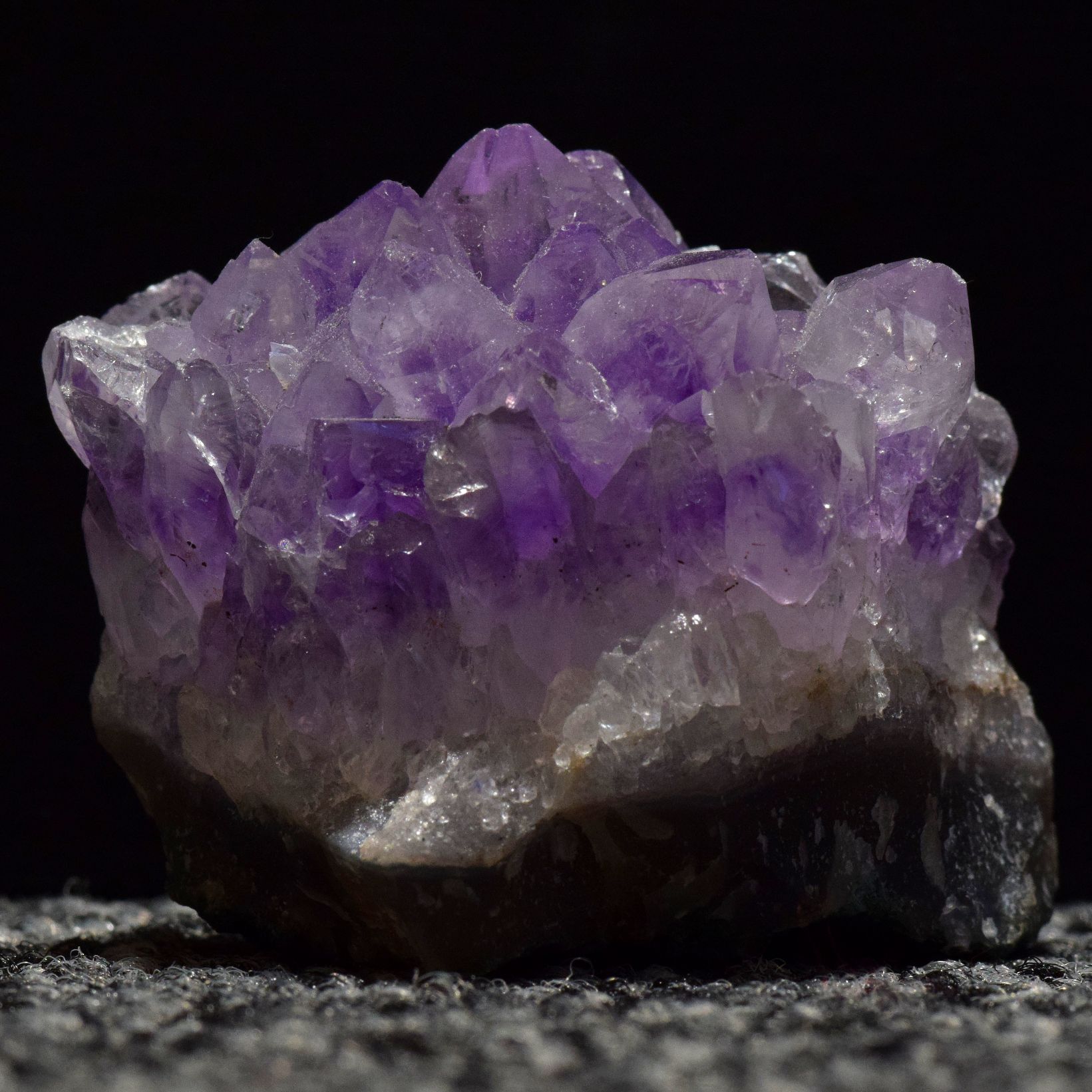
Specimen Qualities
- ID: #1
- Species: Amethyst
- Weight: Unknown
- Locality: Unknown
- Age: Unknown
General Qualities
- Class: Silicate
- Hardness: 7
- Habit: Prismatic
- Cleavage: N/A
- Fracture: Conchoidal
- Colour: Violet
- Streak: White
- Lustre: Vitreous
- Specific Gravity: 2.65
- Other: Piezoelectric
Notes
Amethyst is easily one of the most well-known minerals and probably the one you're most likely to have even if you're not a rock collector.
Technically, amethyst isn't a mineral in its own right as it is actually a variety of quartz. The violet colour is the result iron impurities in the lattice. Therefore, amethyst maintains many qualities of quartz, it's chemical resilience and hardness, that make it popular as a gemstone for jewellery.
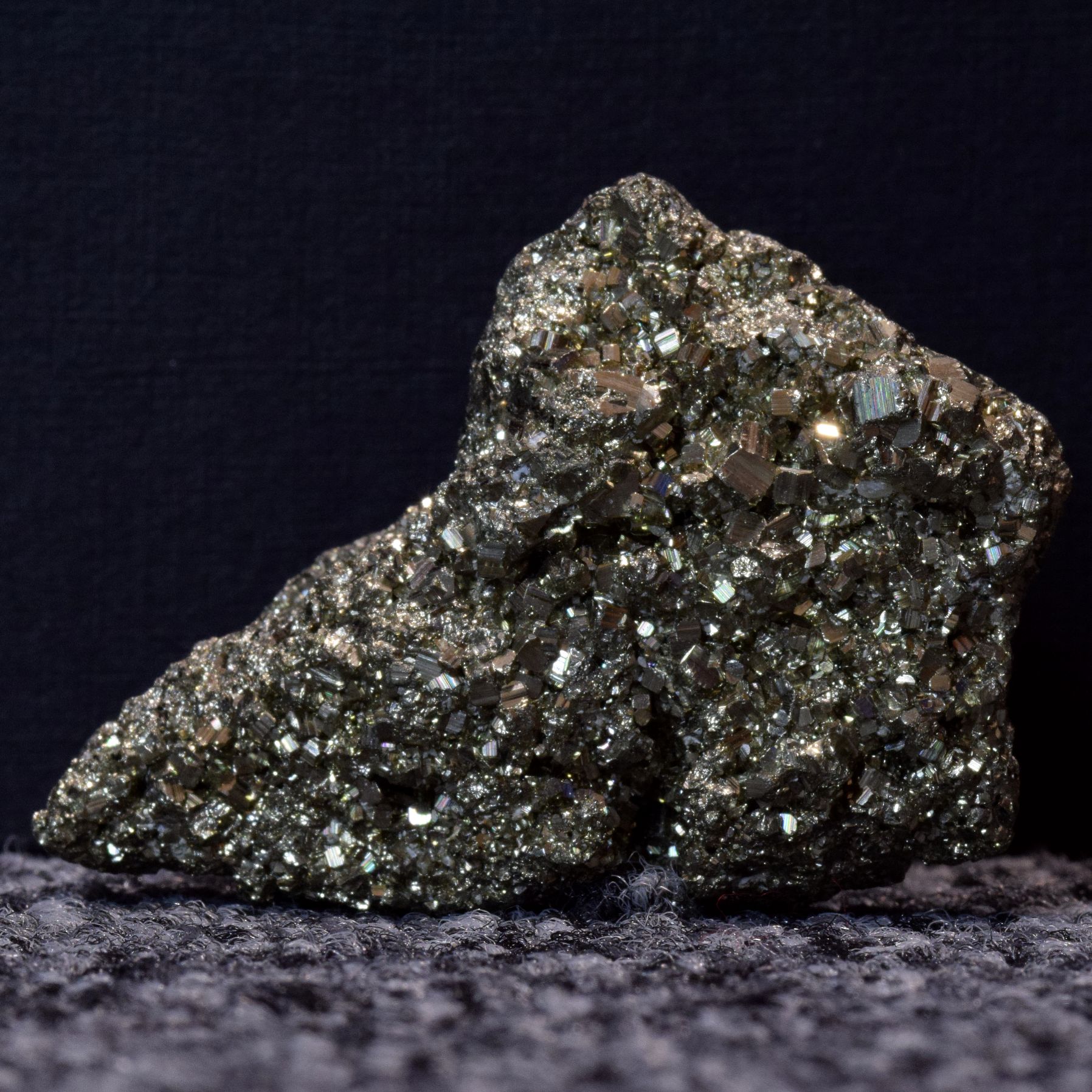
Specimen Qualities
- ID: #3
- Species: Pyrite
- Weight: Unknown
- Locality: Unknown
- Age: Unknown
General Qualities
- Class: Sulphide
- Hardness: 6-6.5
- Habit: Cubic
- Cleavage: N/A
- Fracture: Conchoidal
- Colour: Brassy-yellow
- Streak: Greenish-black
- Lustre: Metallic
- Specific Gravity: 5
- Other: Paramagnetic
Notes
"Fool's gold" is the infamous alternate name of pyrite, plaguing hopeful prospectors for centuries.
Pyrite is captivating because it's one of the few minerals that can form truly perfect cubic crystals, unfortunately my sample is much more of an anhedral mass of many crystals.
Rocks
Count: 38
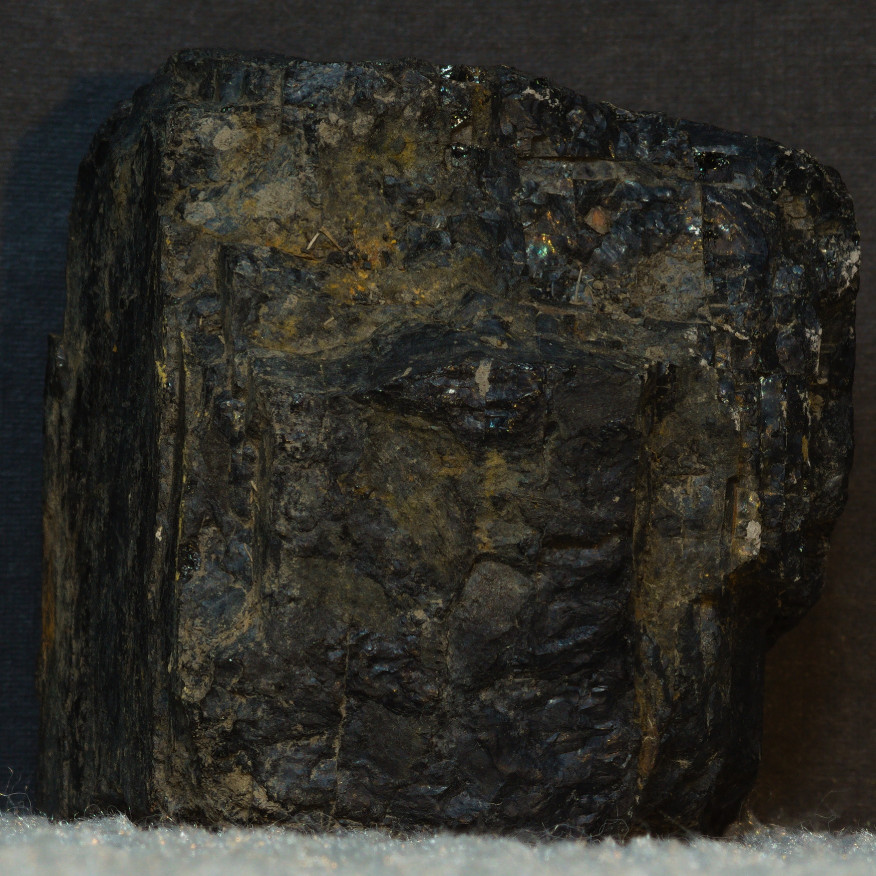
Specimen Qualities
- ID: #72
- Species: Coal
- Weight: Unknown
- Locality: Wigan
- Age: Carboniferous
General Qualities
- Type: Sedimentary
- Composition: Mostly carbon
- Other: N/A
Notes
Coal in Wigan? Preposterous!
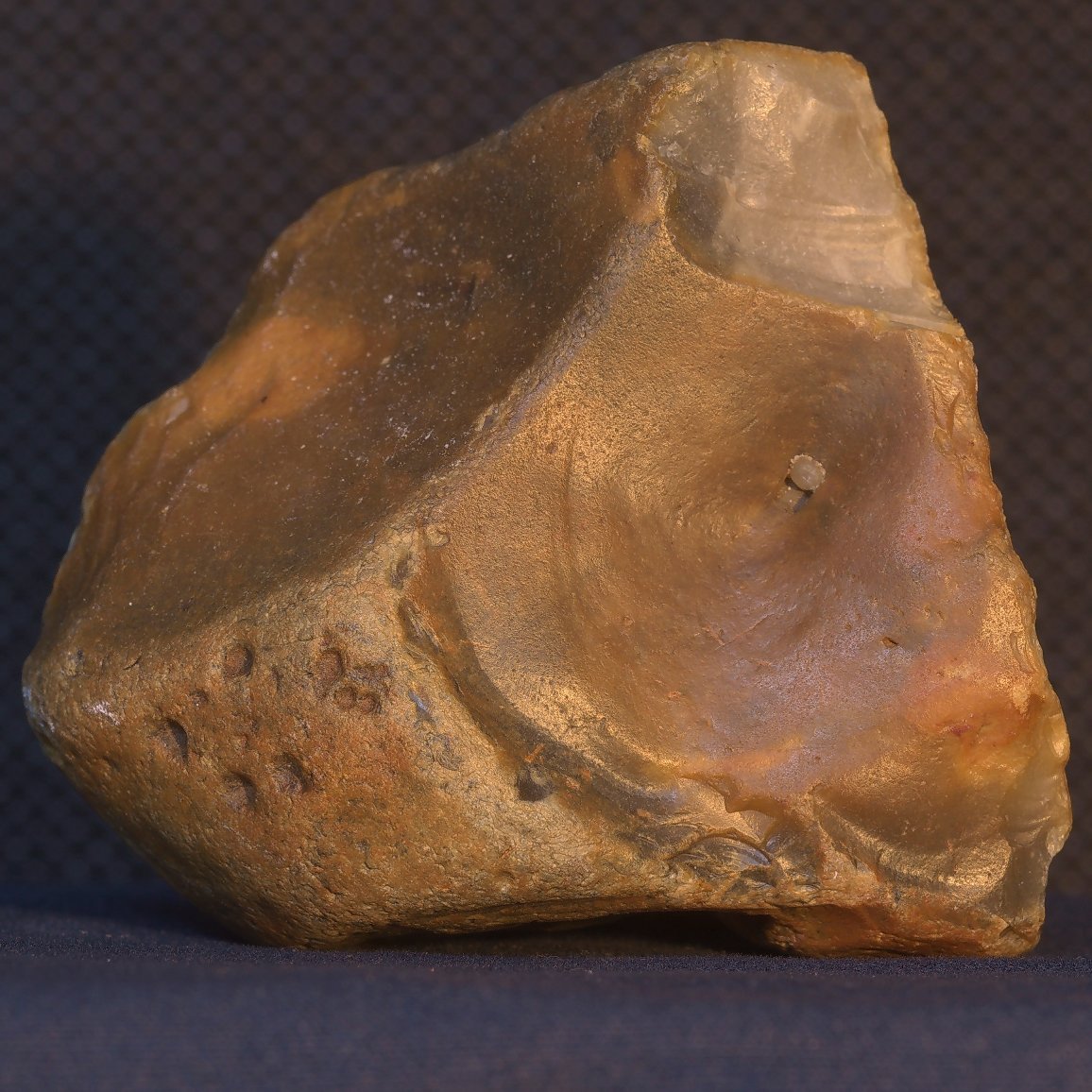
Specimen Qualities
- ID: #70
- Species: Unknown
- Weight: Unknown
- Locality: Unknown
- Age: Unknown
General Qualities
- Type: Sedimentary(?)
- Composition: Unknown
- Other: N/A
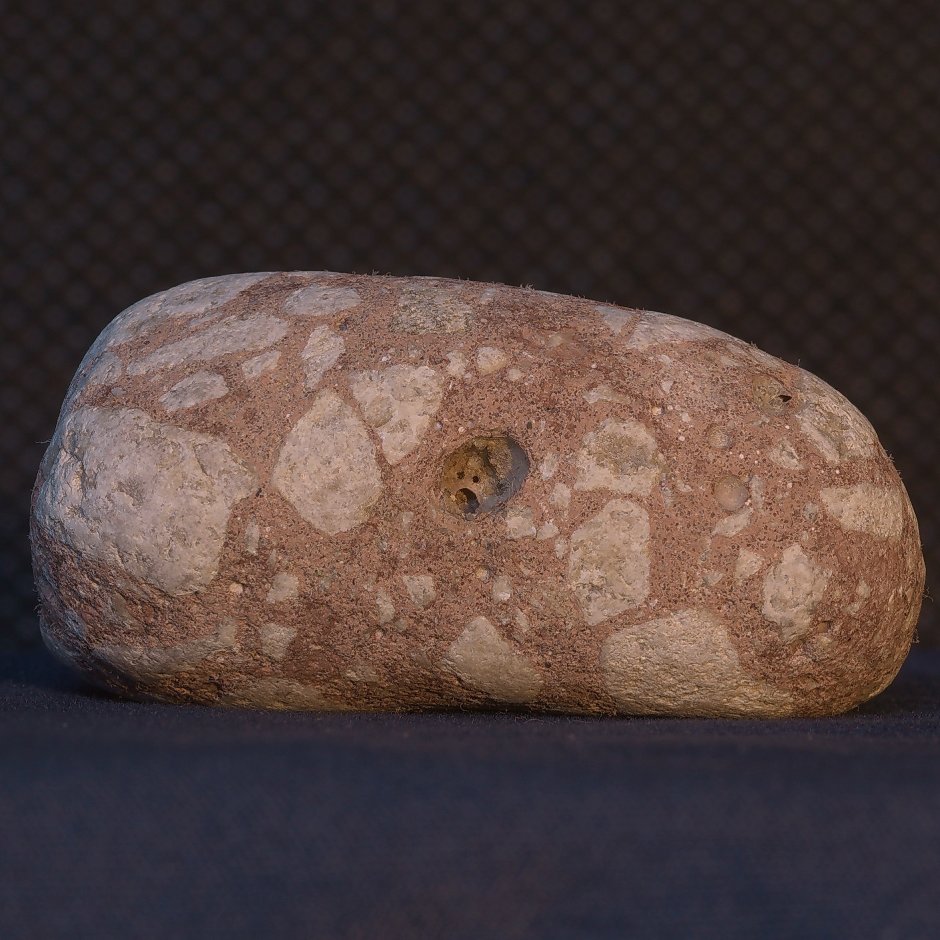
Specimen Qualities
- ID: #69
- Species: Unknown
- Weight: Unknown
- Locality: Unknown
- Age: Unknown
General Qualities
- Type: Sedimentary(?)
- Composition: Unknown
- Other: N/A
Notes
I suspect this is actually some anthropogenic material, but I am intrigued by whatever formed the hole.
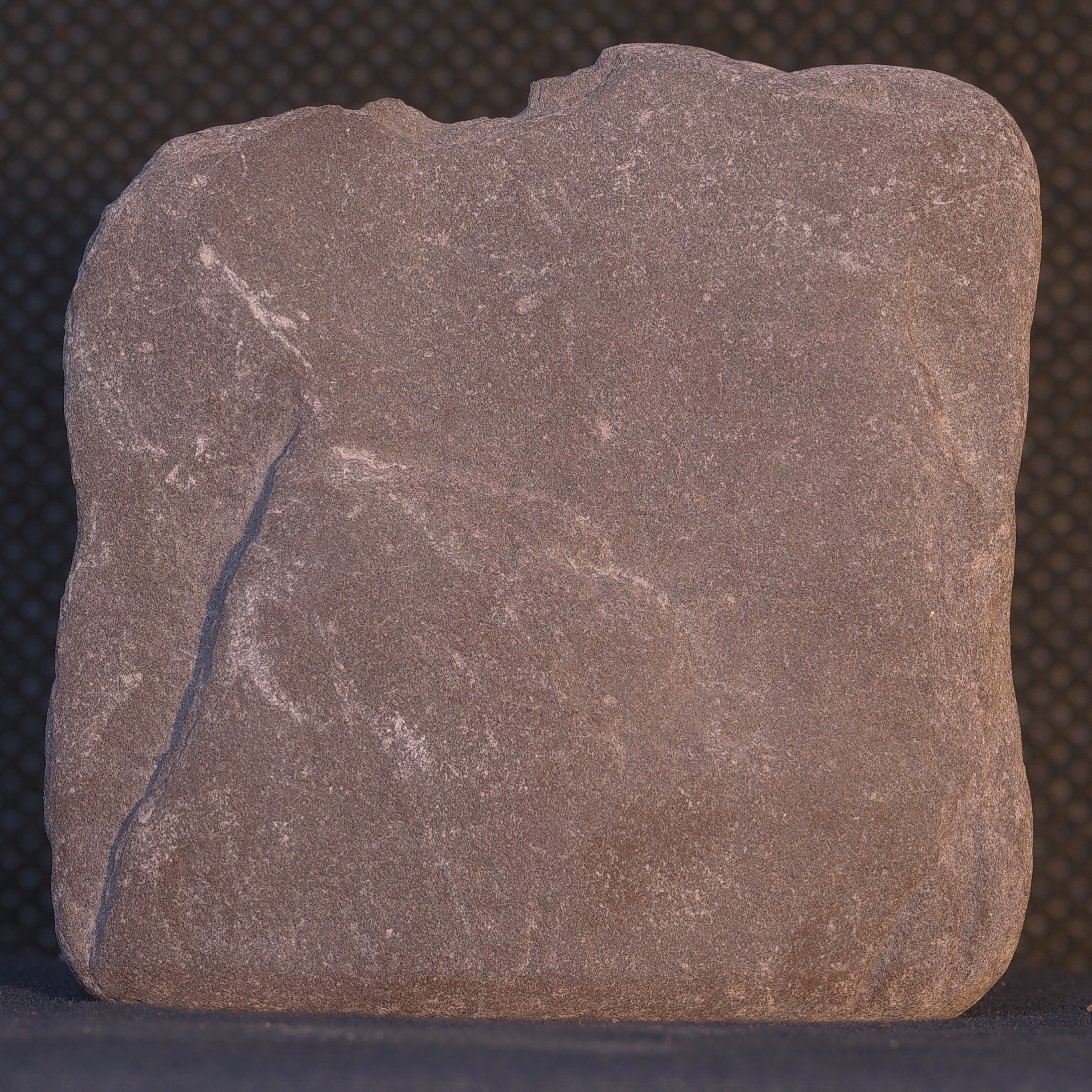
Specimen Qualities
- ID: #68
- Species: Slate
- Weight: Unknown
- Locality: Bethesda, Gwyned, Wales
- Age: Cambrian
General Qualities
- Type: Metamorphic
- Composition: Primarily quartz and muscovite
- Metamorphism: Regional
- Other: Low-grade
Notes
The property of being able to split slates into thin sheets is known as "fissility" and is of course why it finds common use as a roofing tile.
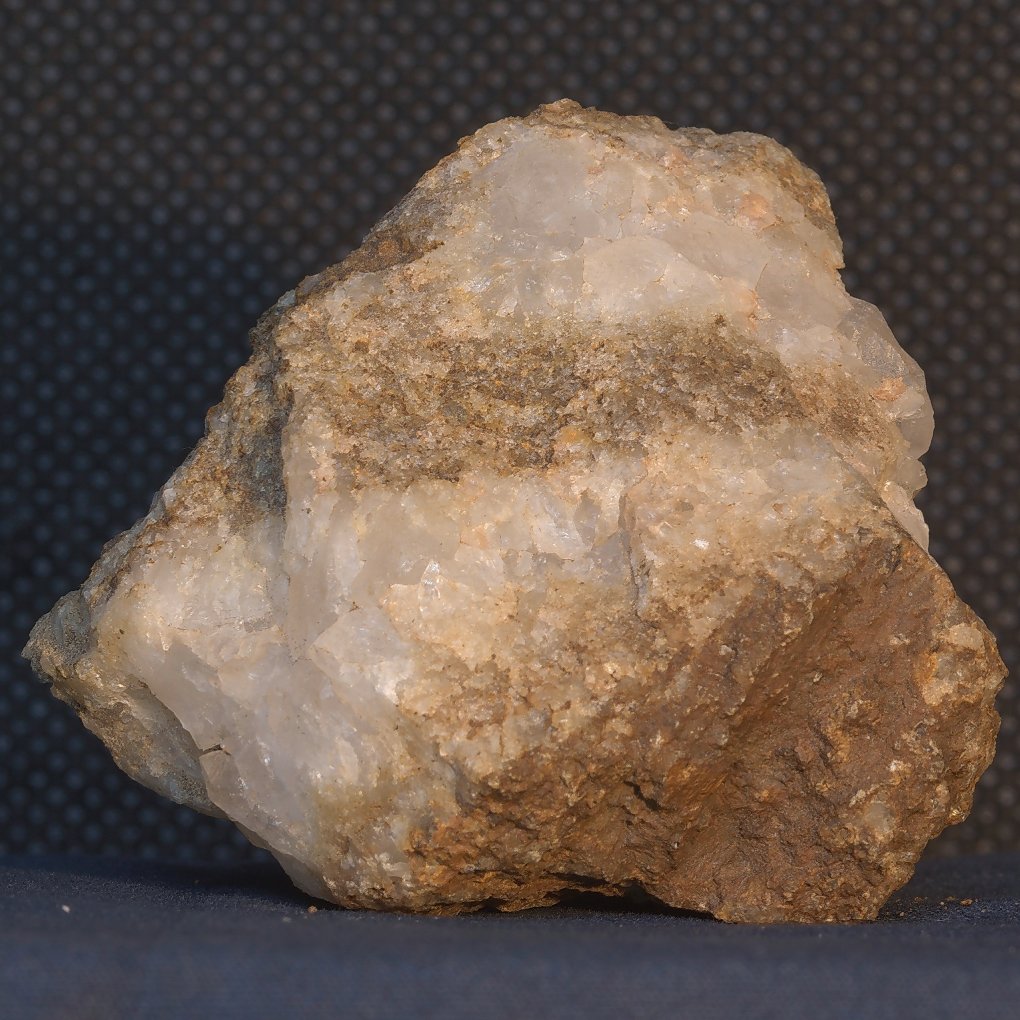
Specimen Qualities
- ID: #67
- Species: Unknown
- Weight: Unknown
- Locality: Unknown
- Age: Unknown
General Qualities
- Type: Sedimentary
- Composition: Veins made of quartz
- Other: N/A
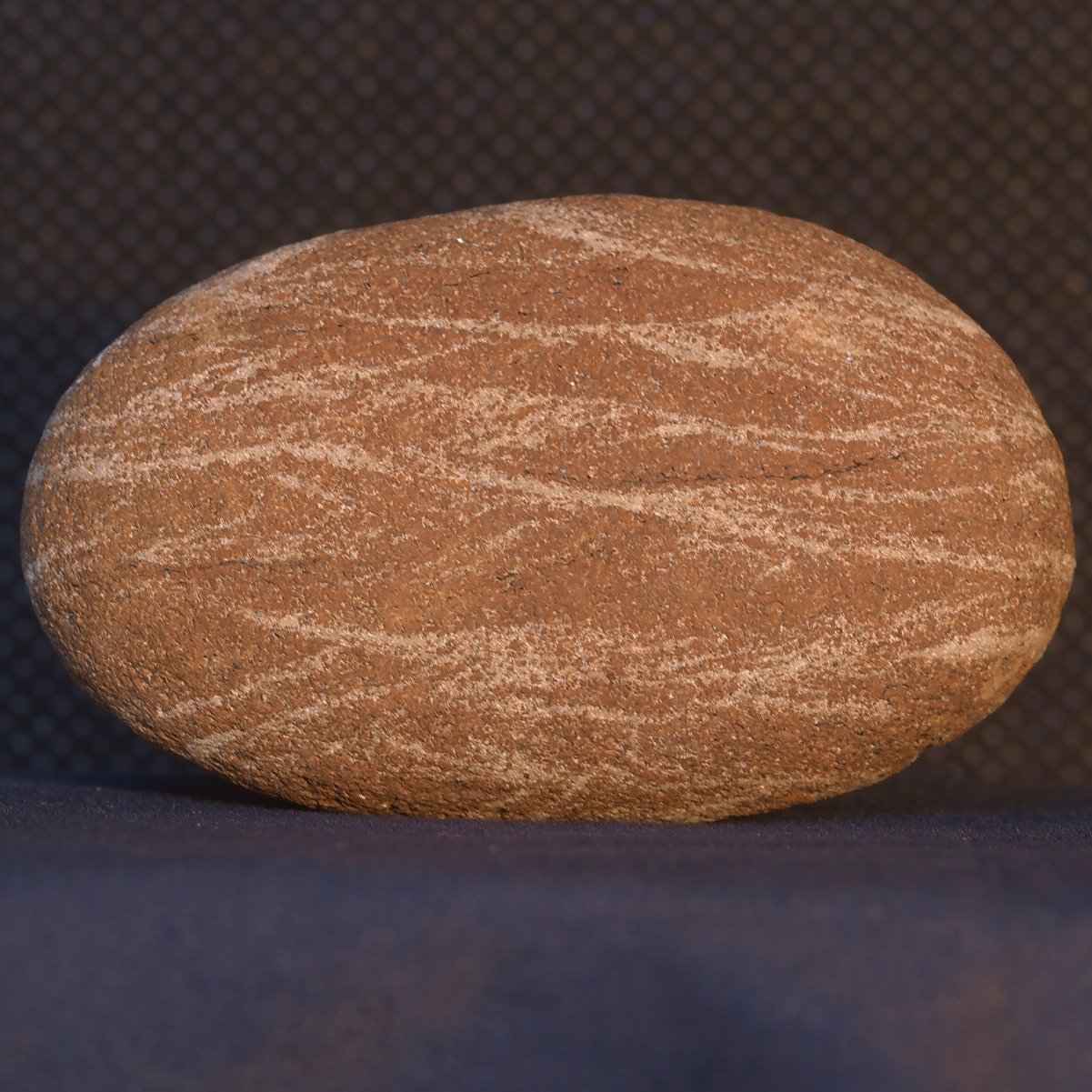
Specimen Qualities
- ID: #66
- Species: Unknown
- Weight: Unknown
- Locality: Unknown
- Age: Unknown
General Qualities
- Type: Sedimentary
- Composition: Veins made of quartz
- Other: N/A
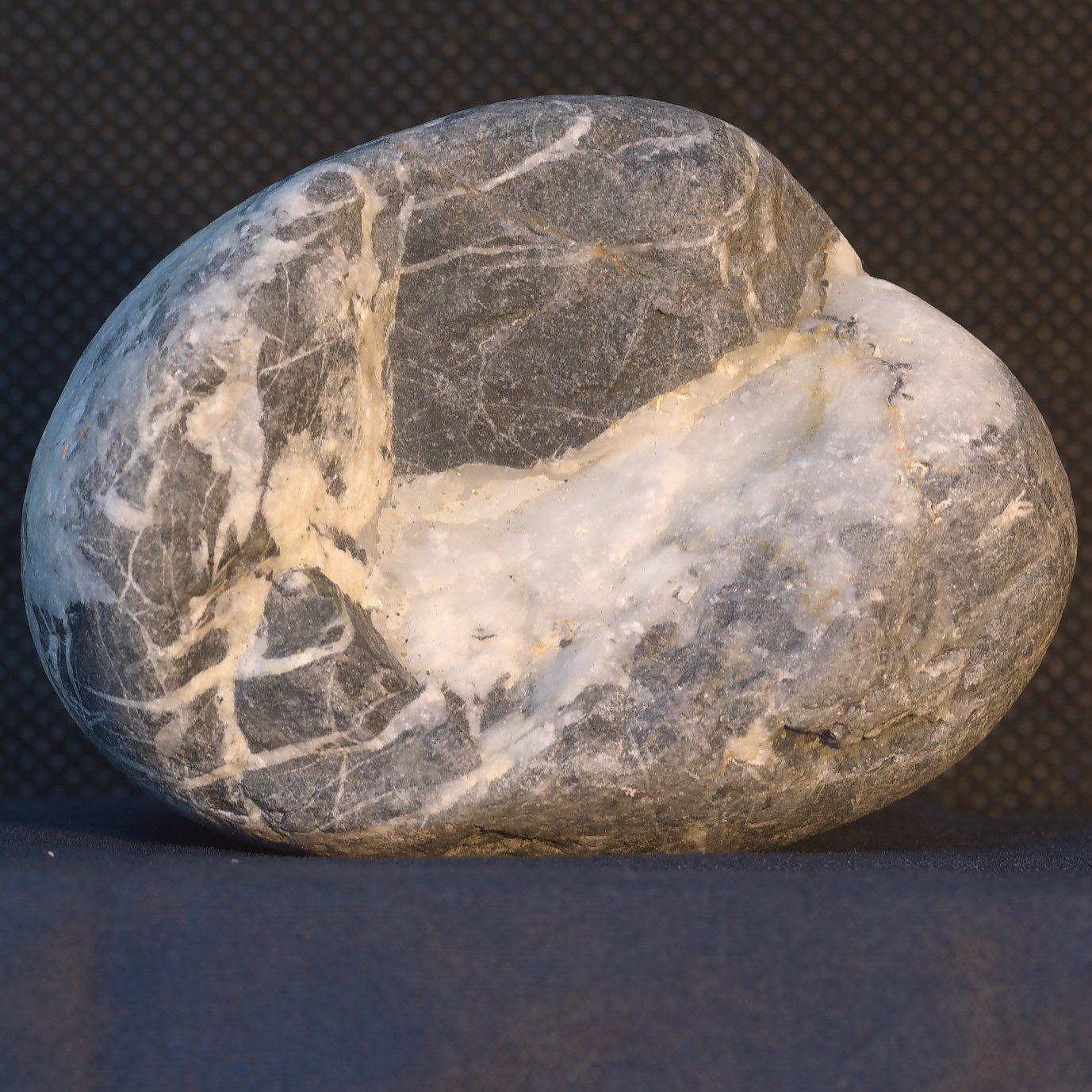
Specimen Qualities
- ID: #65
- Species: Unknown
- Weight: Unknown
- Locality: Unknown
- Age: Unknown
General Qualities
- Type: Igneous
- Composition: Veins made of quartz, host rock likely mafic
- Depth: Unknown
- Texture: Unknown
- Other: N/A
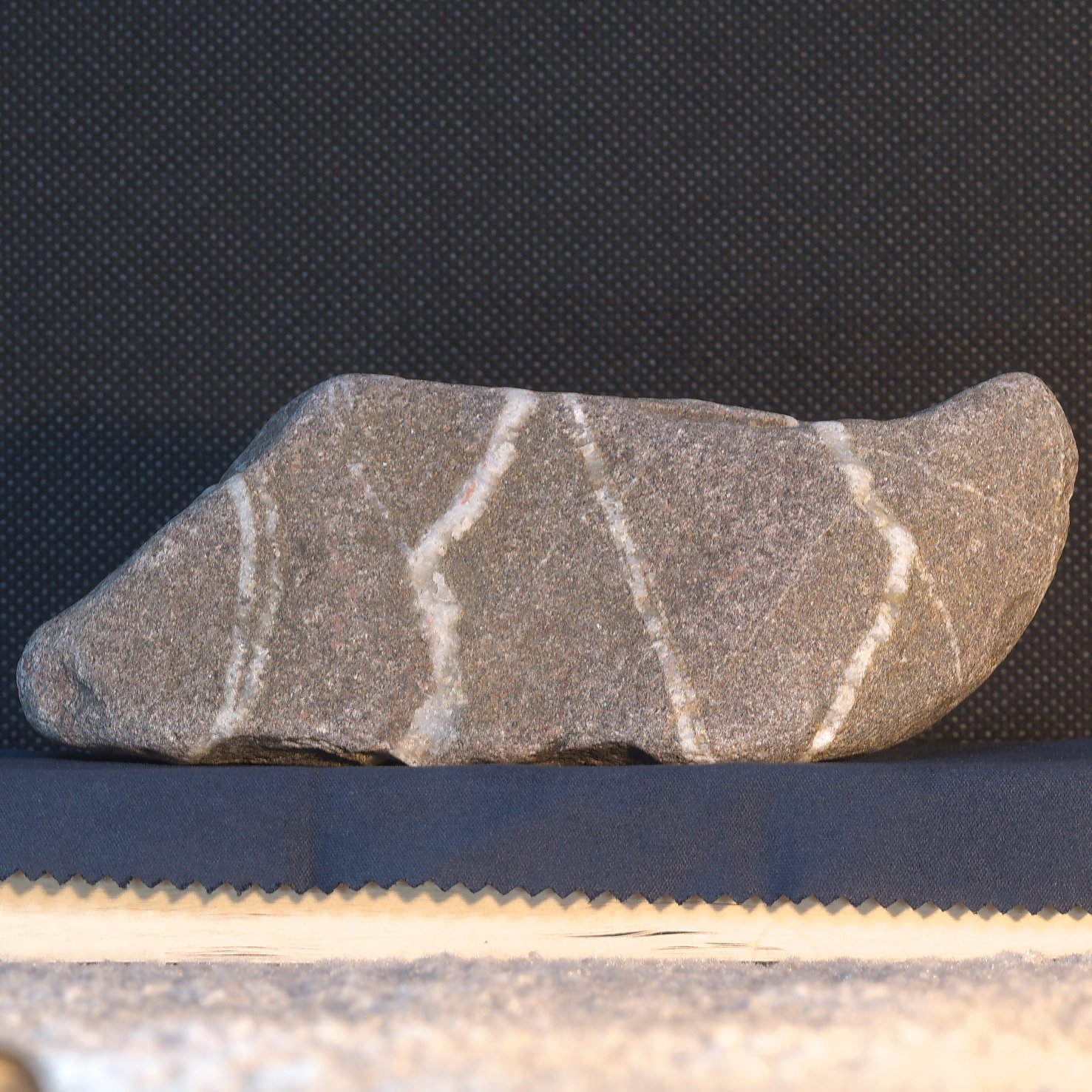
Specimen Qualities
- ID: #64
- Species: Unknown
- Weight: Unknown
- Locality: Unknown
- Age: Unknown
General Qualities
- Type: Sedimentary(?)
- Composition: Veins made of quartz
- Other: N/A
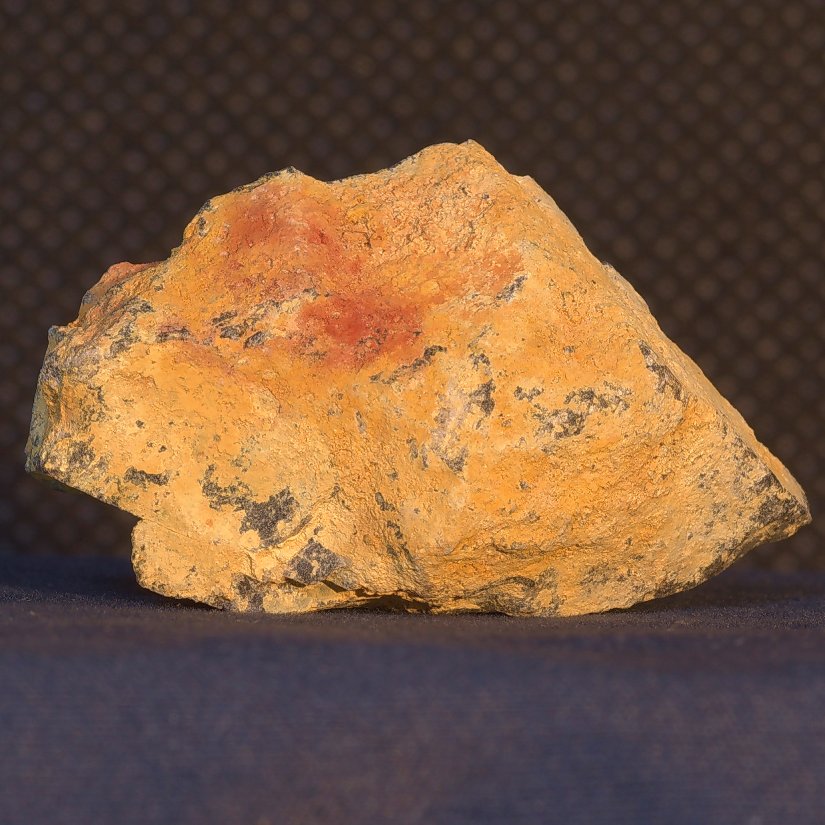
Specimen Qualities
- ID: #63
- Species: Unknown
- Weight: Unknown
- Locality: Nea Kameni, Greece
- Age: Unknown
General Qualities
- Type: Igneous
- Composition: Yellow colouring potentially sulphur
- Depth: Extrusive
- Texture: Fine-grained
- Other: N/A
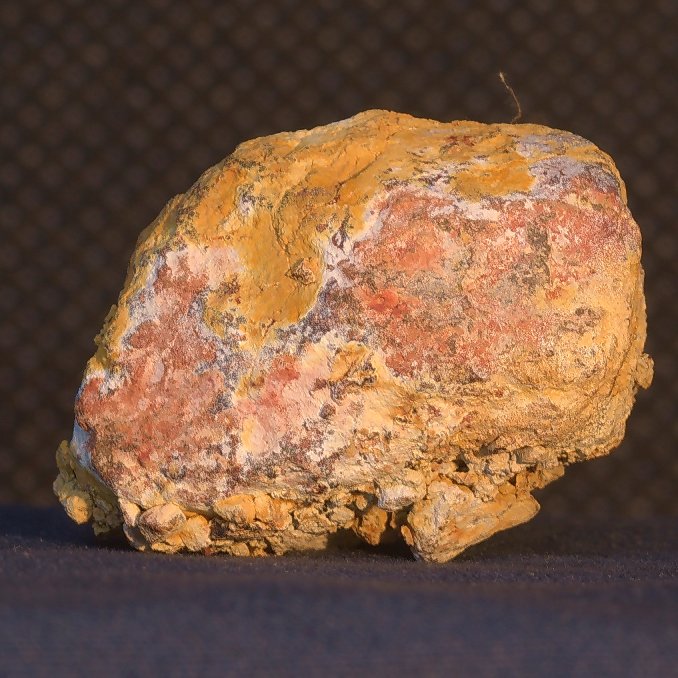
Specimen Qualities
- ID: #62
- Species: Unknown
- Weight: Unknown
- Locality: Nea Kameni, Greece
- Age: Unknown
General Qualities
- Type: Igneous
- Composition: Yellow colouring potentially sulphur
- Depth: Extrusive
- Texture: Fine-grained
- Other: N/A
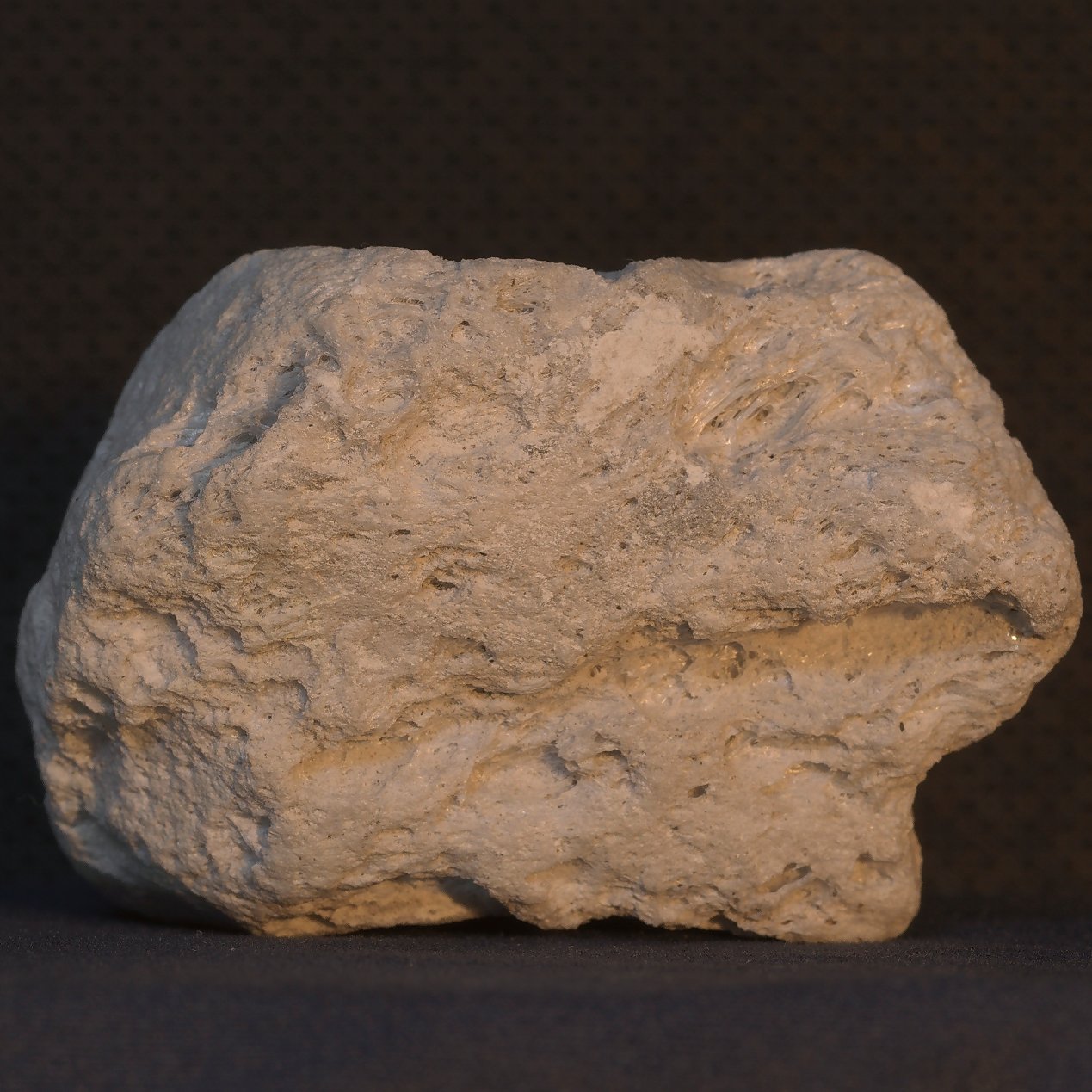
Specimen Qualities
- ID: #61
- Species: Pumice
- Weight: Unknown
- Locality: Lipari Islands, Italy
- Age: Recent
General Qualities
- Type: Igneous
- Composition: Varies
- Depth: Extrusive
- Texture: Glassy
- Other: Extremely vesicular
Notes
An excellent (and safe) prank to pull on people is throwing pumice at them, scares the hell out of them until they realise how light it is. Pumice has a density lower than water. In fact, submarine or coastal volcanic eruptions have the potential to form massive floating rafts of pumice on the water.
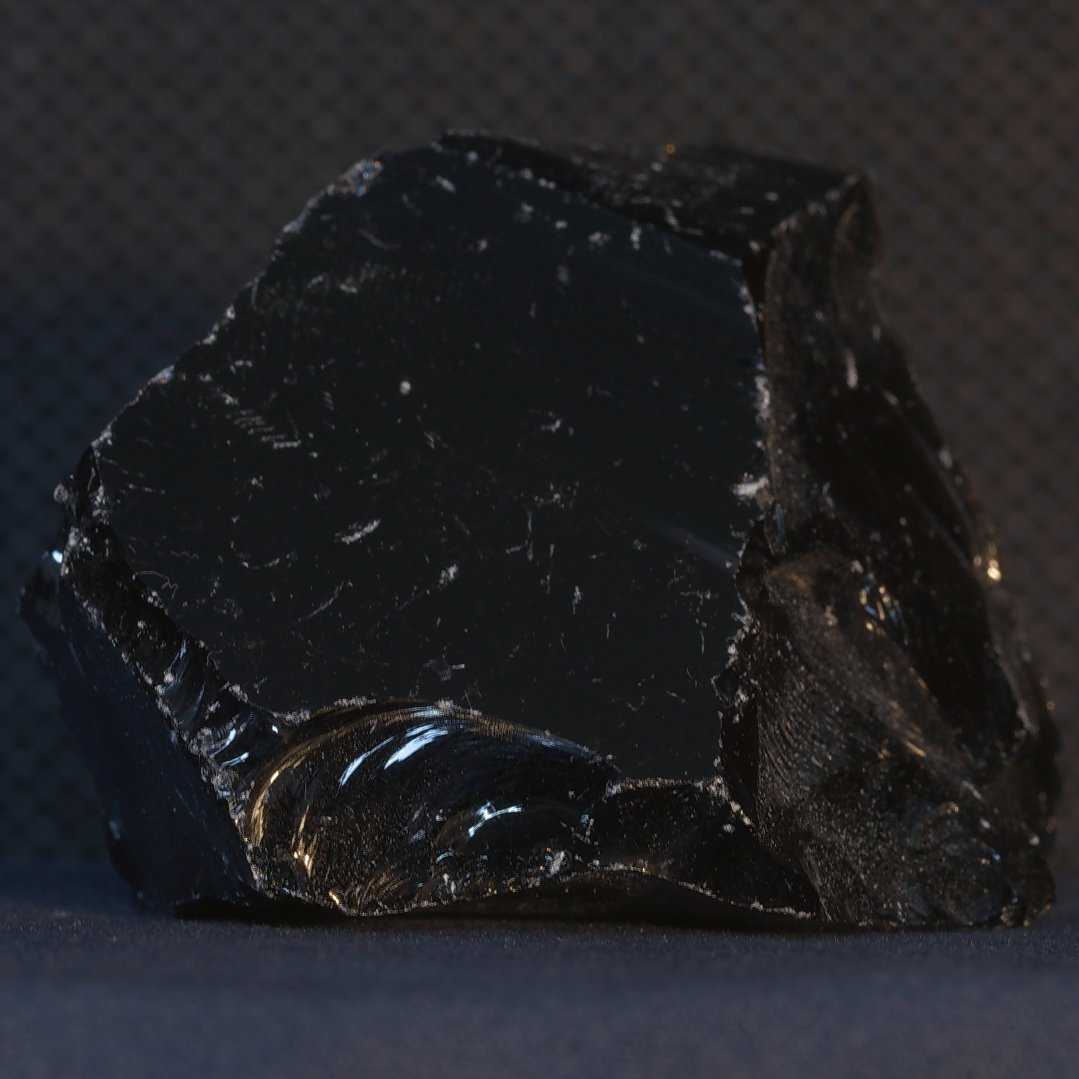
Specimen Qualities
- ID: #60
- Species: Obsidian
- Weight: Unknown
- Locality: Anatolia, Turkey
- Age: Pleistocene
General Qualities
- Type: Igneous
- Composition: Felsic
- Depth: Extrusive
- Texture: Glassy
- Other: N/A
Notes
Obsidian has famously had a history of use as a cutting tool. It potentially has modern potential for surgical scalpels as a much finer edge can be cut compared to contemporary materials.
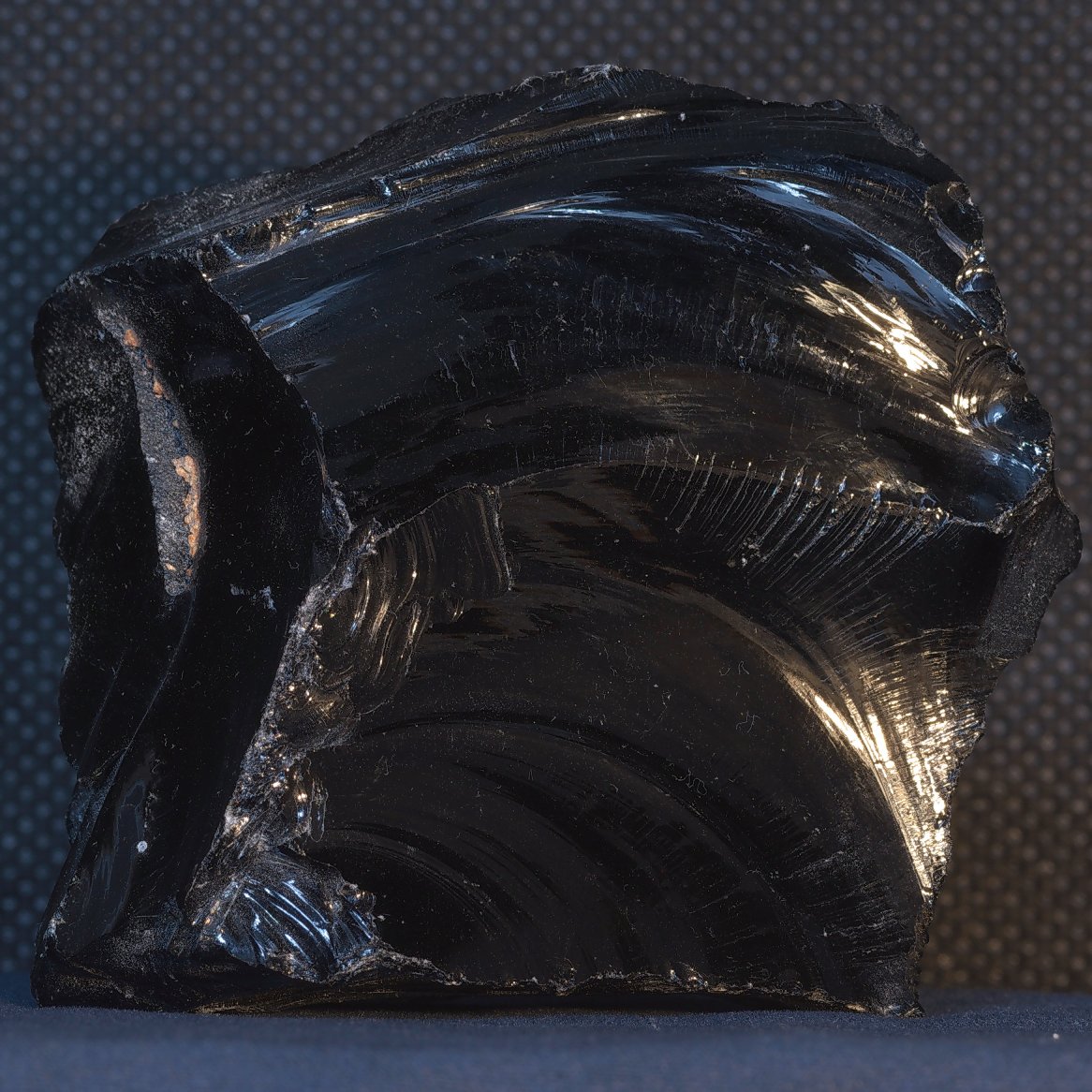
Specimen Qualities
- ID: #59
- Species: Obsidian
- Weight: Unknown
- Locality: Unknown
- Age: Unknown
General Qualities
- Type: Igneous
- Composition: Felsic
- Depth: Extrusive
- Texture: Glassy
- Other: N/A
Notes
Technically, obsidian shouldn't be in the mineral section of this page considering it doesn't fit all the requirements to be a mineral. This is because obsidian is glassy instead of crystalline, a key requirement of minerals.
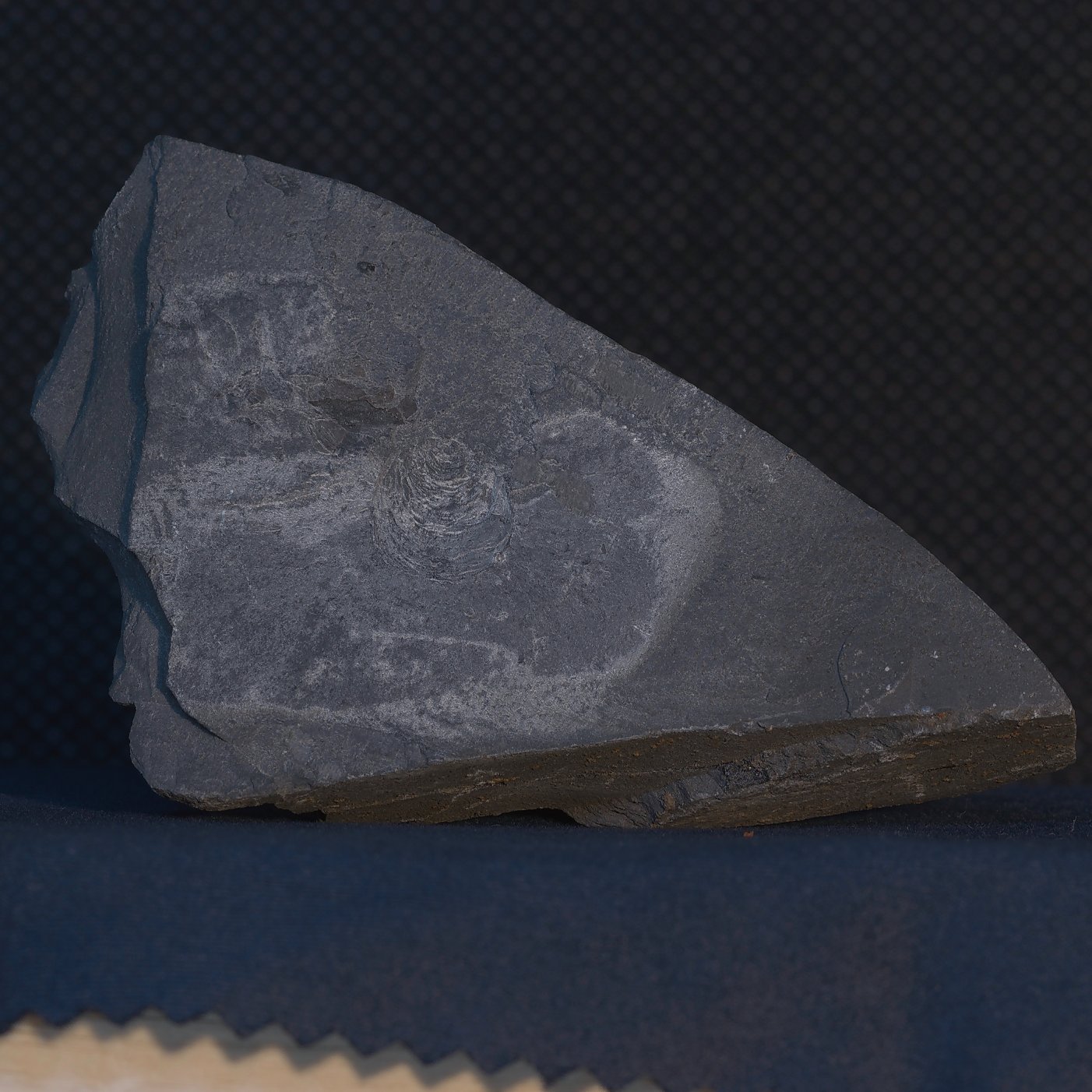
Specimen Qualities
- ID: #58
- Species: Mudstone
- Weight: Unknown
- Locality: Yorkshire, UK
- Age: Jurassic
General Qualities
- Type: Sedimentary
- Composition: Mostly silicate grains
- Other: N/A
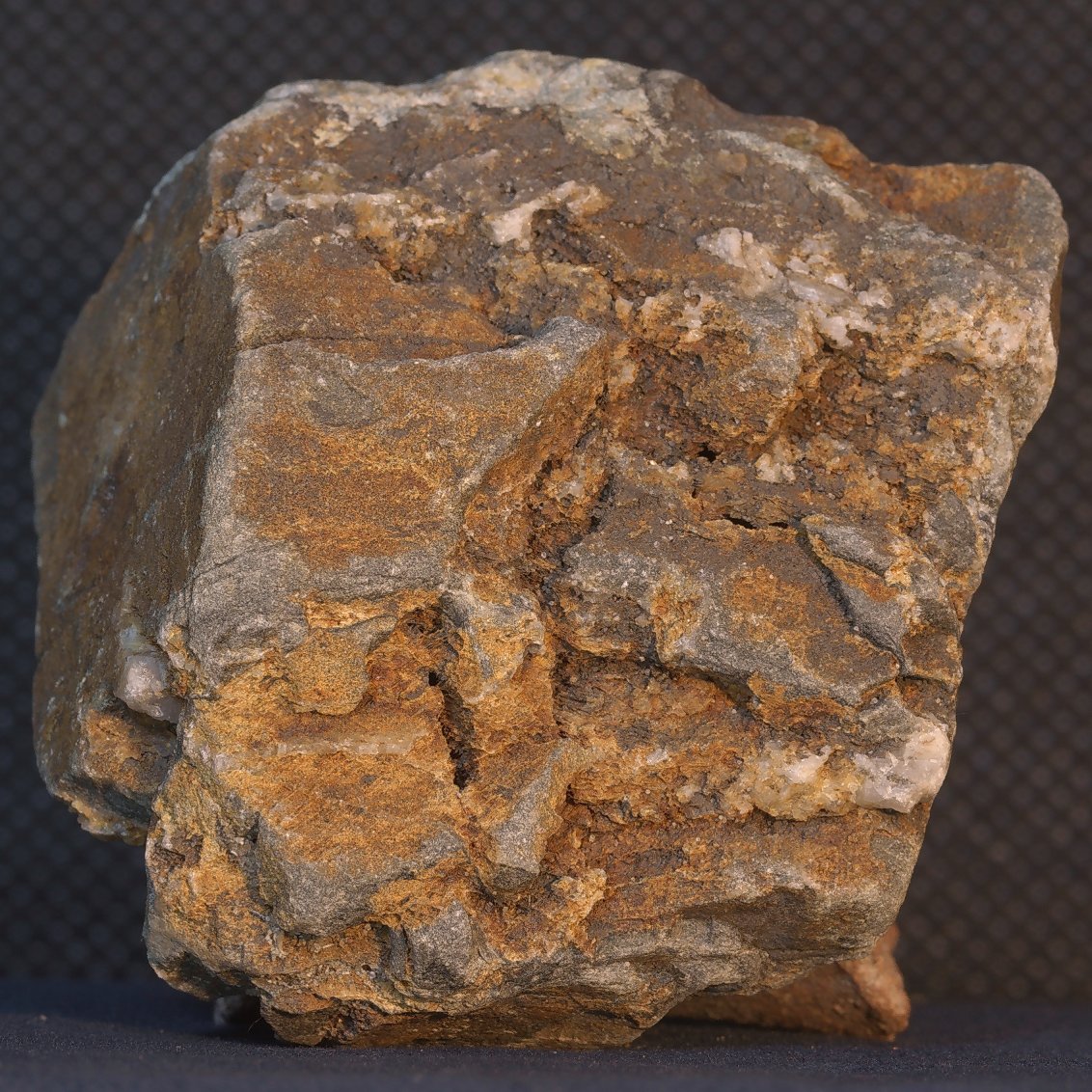
Specimen Qualities
- ID: #57
- Species: Mudstone
- Weight: Unknown
- Locality: St David's Head, Pembrokeshire, Wales
- Age: Ordovician (Arenigian)
General Qualities
- Type: Sedimentary
- Composition: Mostly silicate grains
- Other: N/A
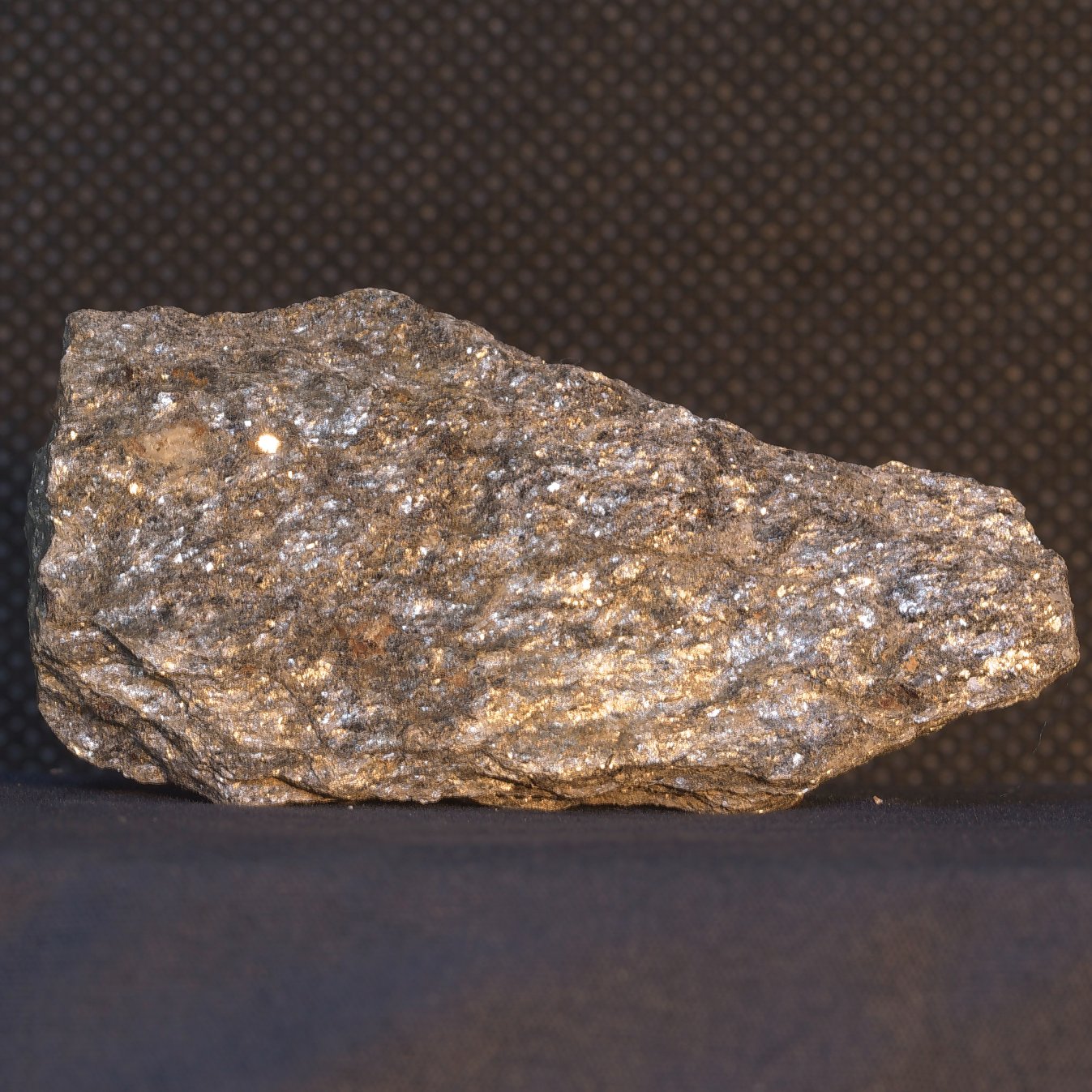
Specimen Qualities
- ID: #56
- Species: Mica Schist
- Weight: Unknown
- Locality: Loch Clunie, Scotland
- Age: Pre-Cambrian
General Qualities
- Type: Metamorphic
- Composition: Primarily quartz and mica
- Metamorphism: Regional
- Other: Medium-grade
Notes
Certain specimens of schist are mesmerisingly shiny, like thousands of glitter grains were welded together.
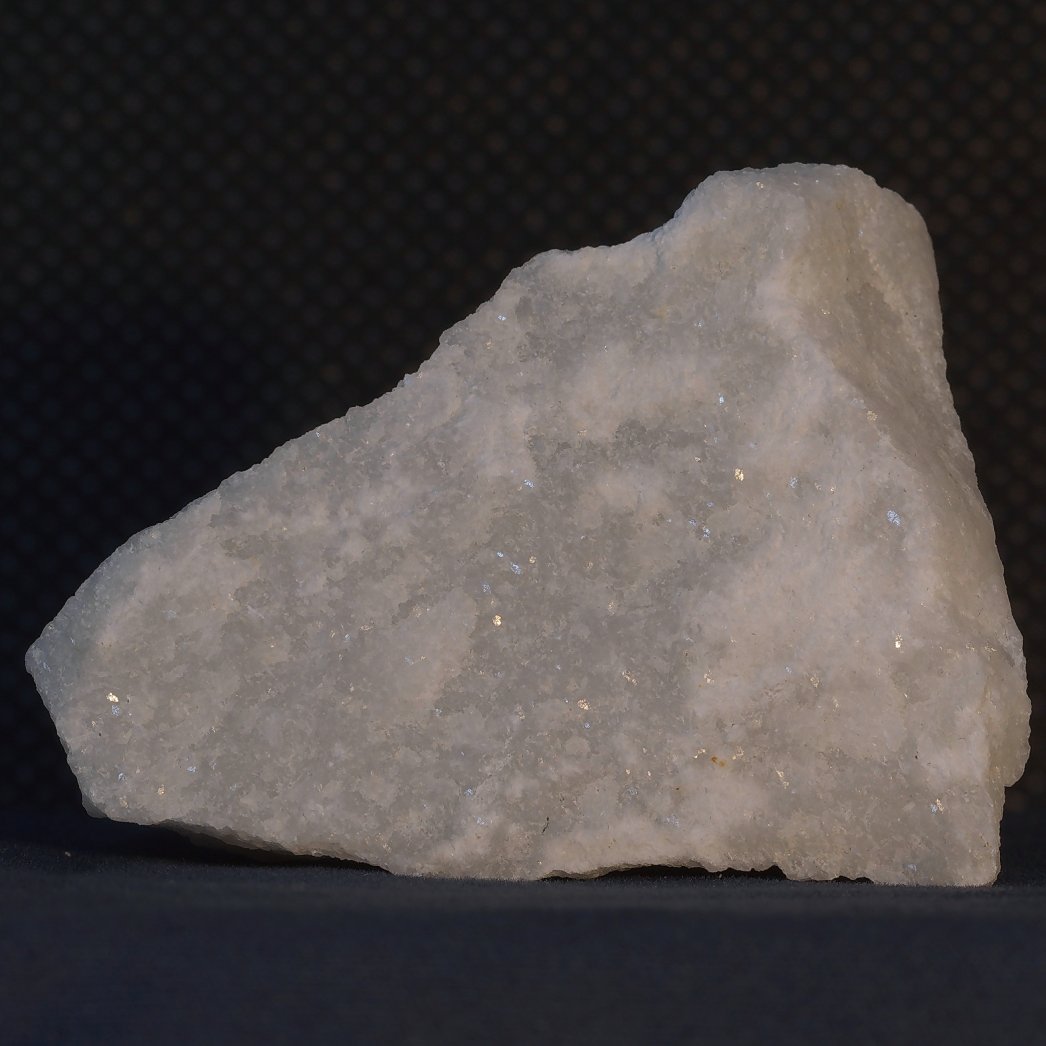
Specimen Qualities
- ID: #55
- Species: Marble
- Weight: Unknown
- Locality: Isle of Skye, Scotland
- Age: Tertiary
General Qualities
- Type: Metamorphic
- Composition: Calcite
- Metamorphism: Regional or Contact
- Other: High hardness and resistance
Notes
If you're taking a geology exam and you're unsure if the sample you were given is of marble or some other white rock all you have to do is use your little dilute bottle of hydrochloric acid (from the provided mineralogy kit that also includes a copper penny). Because of the calcite in marble, it will effervesce upon contact with the acid.
If it doesn't work and you're stuck on identifying the rock, simply drink the acid.
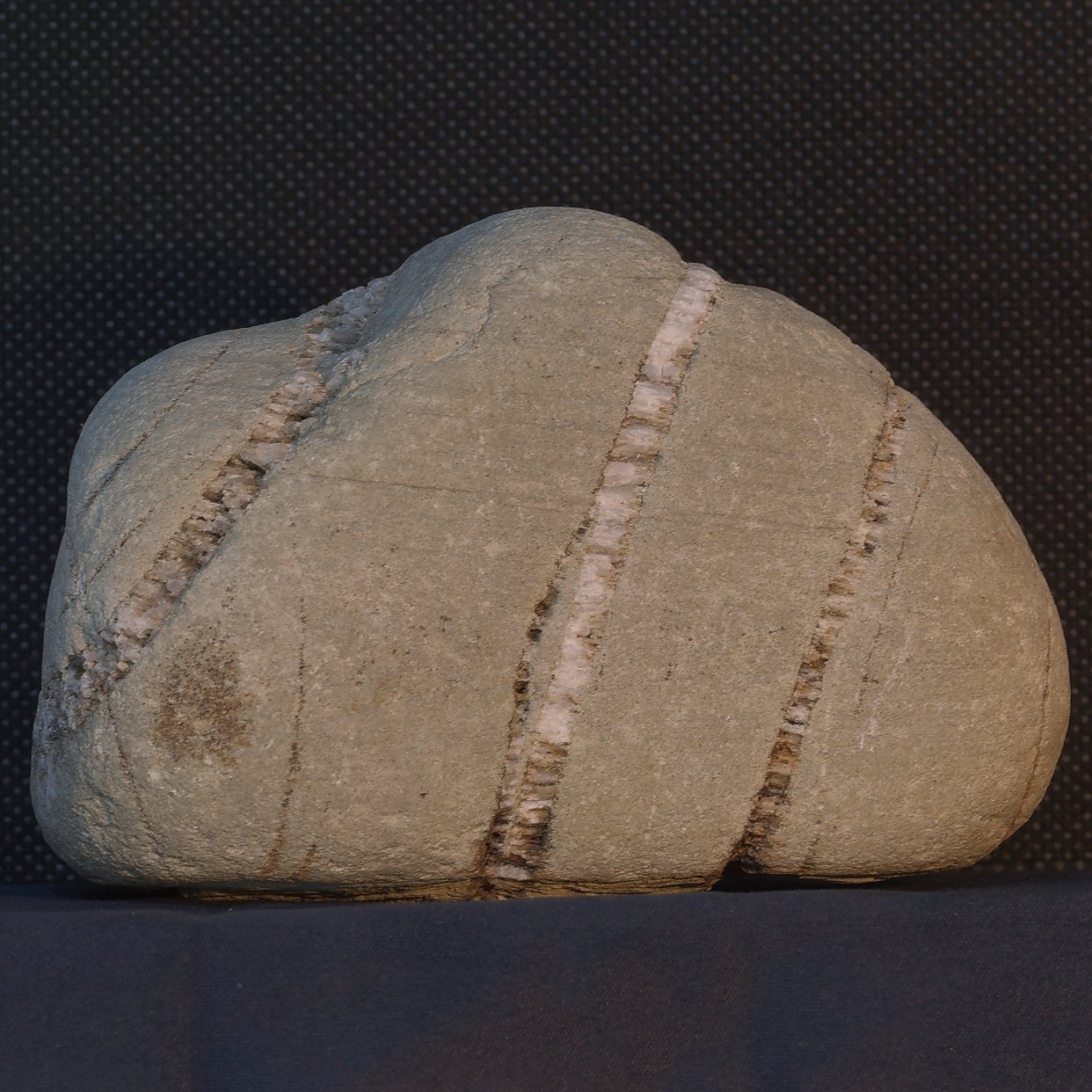
Specimen Qualities
- ID: #54
- Species: Unknown
- Weight: Unknown
- Locality: Unknown
- Age: Unknown
General Qualities
- Type: Igneous
- Composition: Veins composed of quartz
- Depth: Unknown
- Texture: Unknown
- Other: N/A
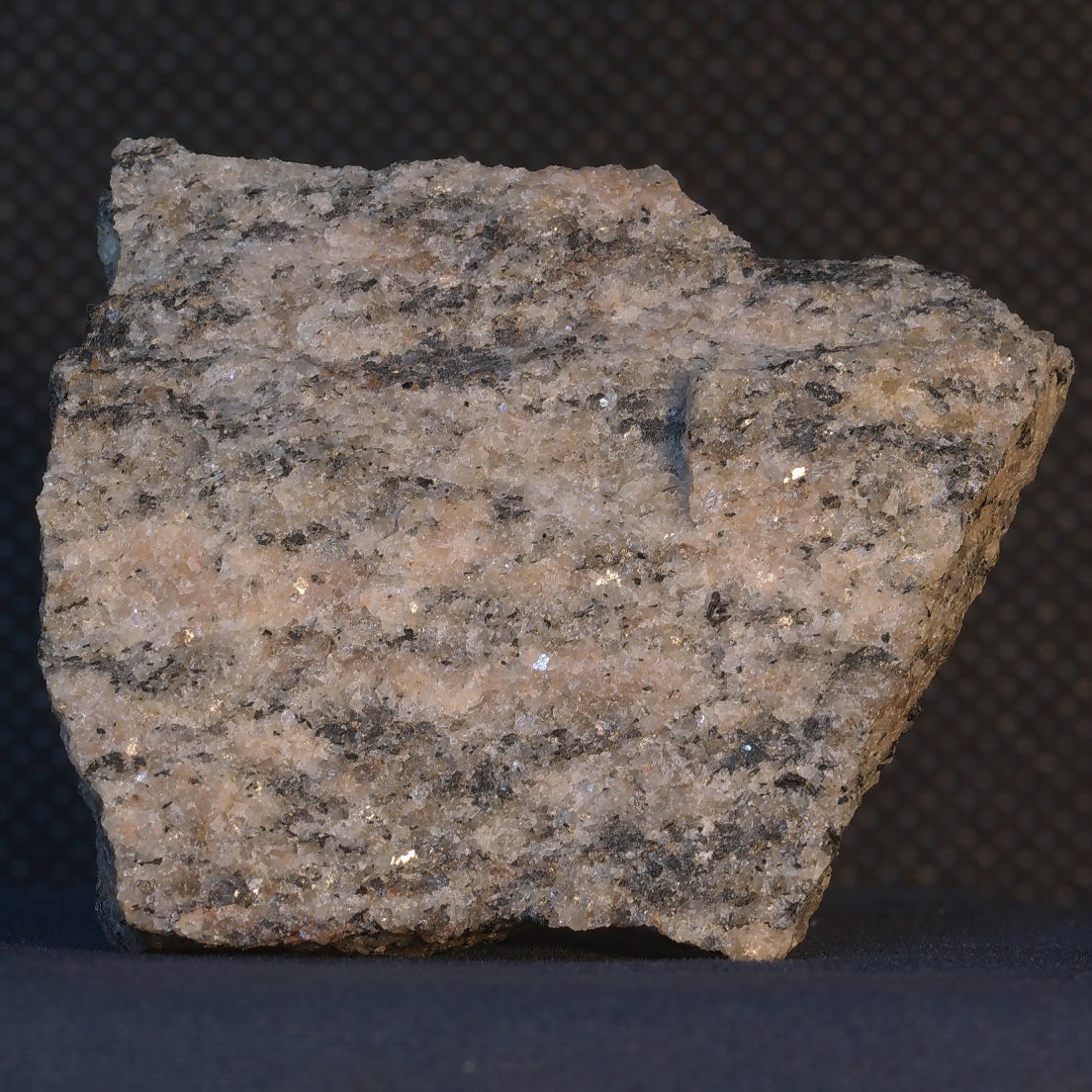
Specimen Qualities
- ID: #53
- Species: Gneiss
- Weight: Unknown
- Locality: Evje, Norway
- Age: Pre-Cambrian
General Qualities
- Type: Regional Metamorphic
- Composition: Dark layers rich in biotite, light layers rich in quartz and feldspars
- Other: High grade
Notes
The alternating dark and light coloured bands (poorly visible in this sample) is known as gneissose banding, a type of high grade metamorphic foliation.
Some of the oldest rocks in the world are gneisses, with the Acasta Gneiss of Canada being one of the oldest of the oldest.
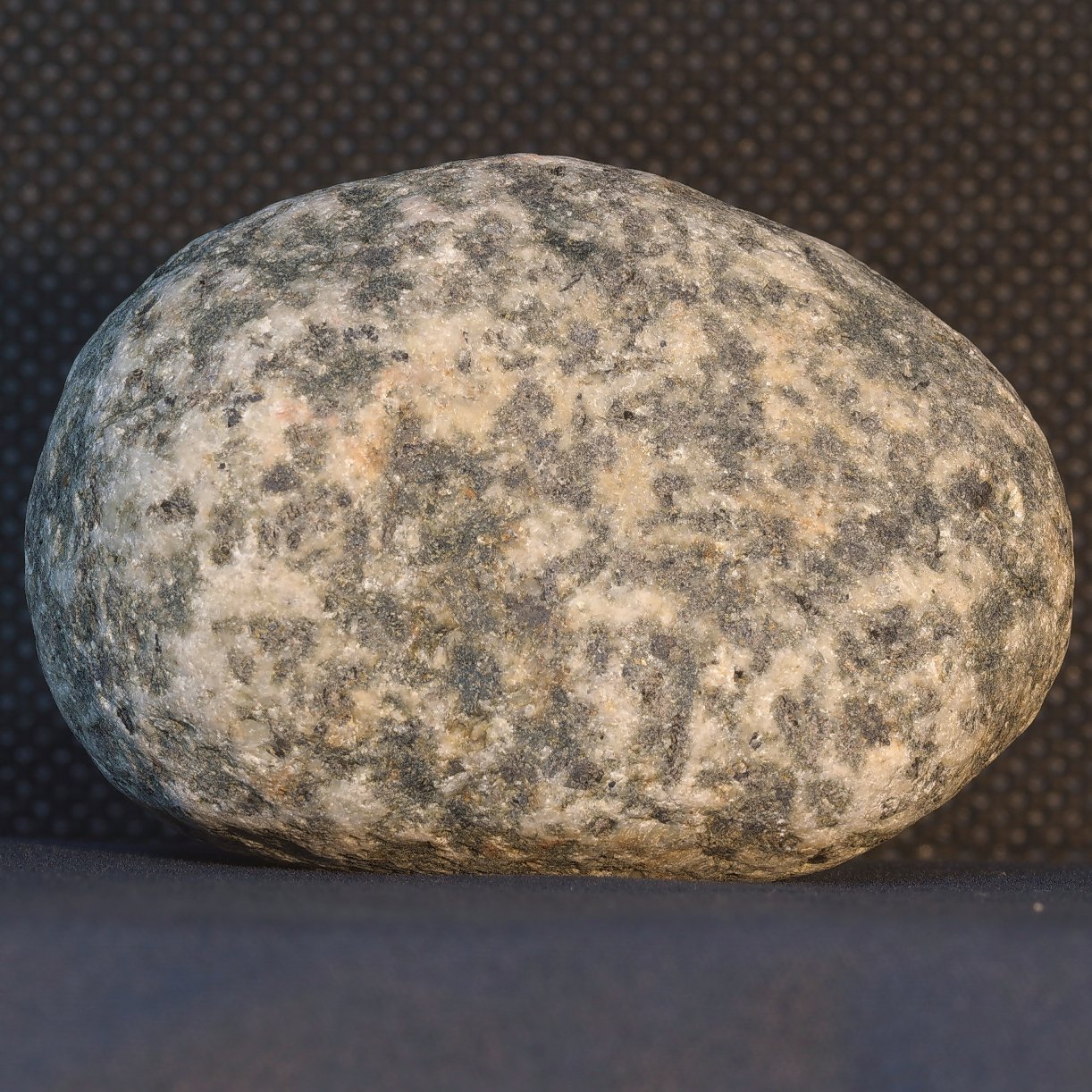
Specimen Qualities
- ID: #52
- Species: Gabbro
- Weight: Unknown
- Locality: Unknown
- Age: Unknown
General Qualities
- Type: Igneous
- Composition: Mafic
- Depth: Intrusive
- Texture: Coarse-grained
- Other: N/A
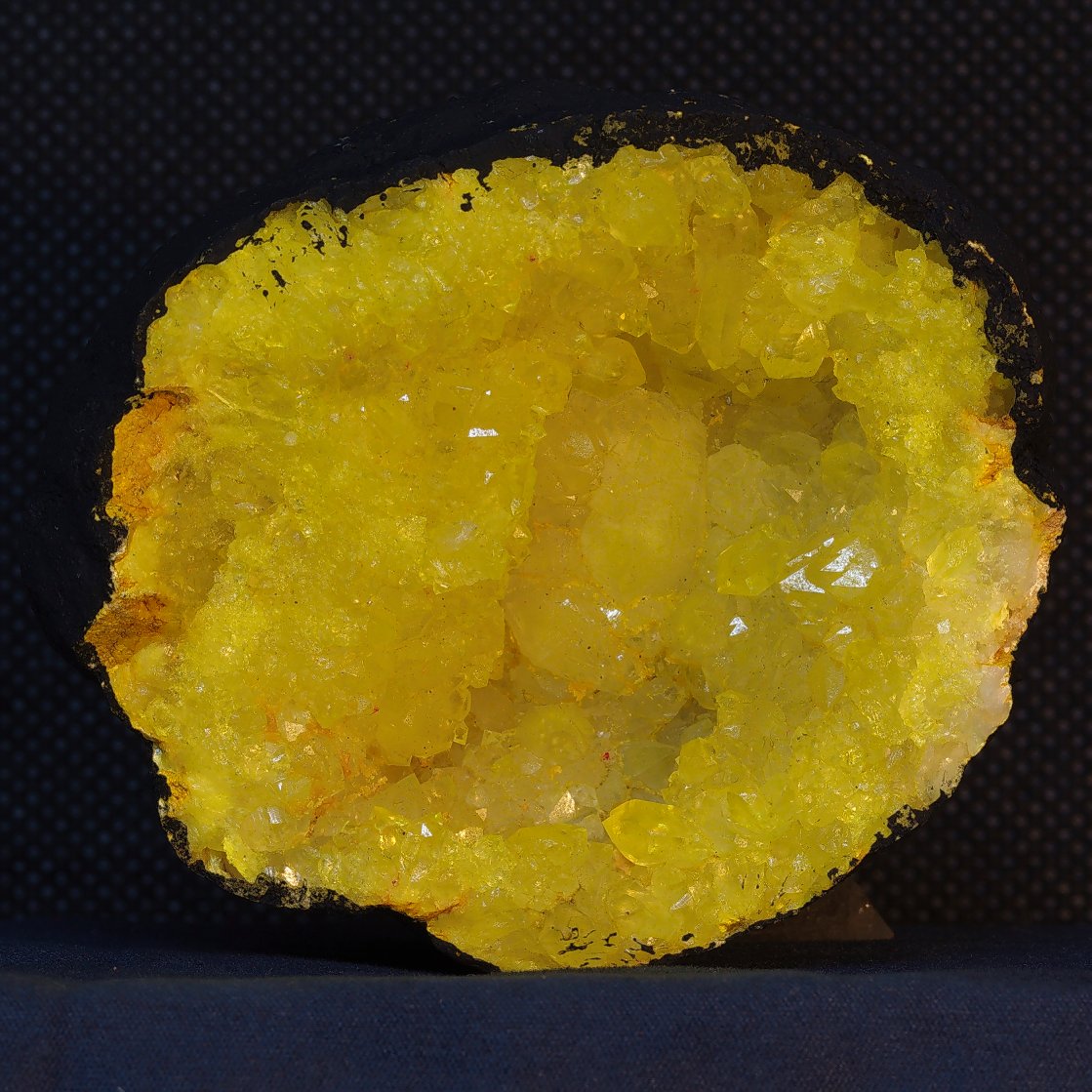
Specimen Qualities
- ID: #51
- Species: Quartz Geode (Dyed and Painted)
- Weight: Unknown
- Locality: Unknown
- Age: Unknown
General Qualities
- Type: Sedimentary
- Composition: Limestone(?) infilled with Quartz
- Other: In two roughly equal halves
Notes
By far the funniest rock I've ever been given, so ridiculously fake and piss-yellow I can't help but adore it. I give my life to the Piss Geode. All hail the Piss Geode.
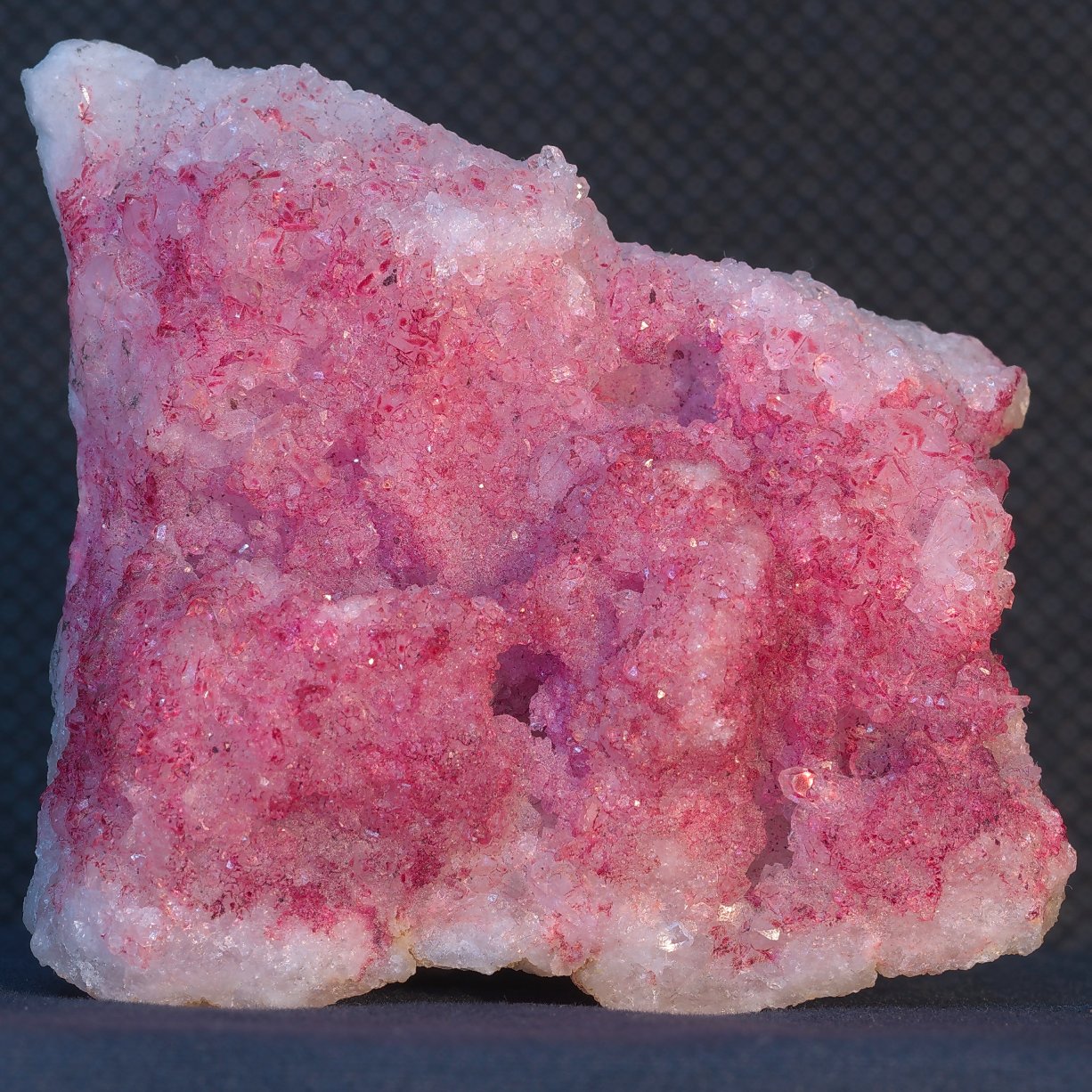
Specimen Qualities
- ID: #50
- Species: Quartz Geode
- Weight: Unknown
- Locality: Unknown
- Age: Unknown
General Qualities
- Type: Sedimentary
- Composition: Limestone(?) infilled with Quartz
- Other: N/A
Notes
My favourite from the "crap I bought when I was 7" collection, completely wrong tone to ever be passed off as amethyst and the drops of dye used on it are obviously visible.
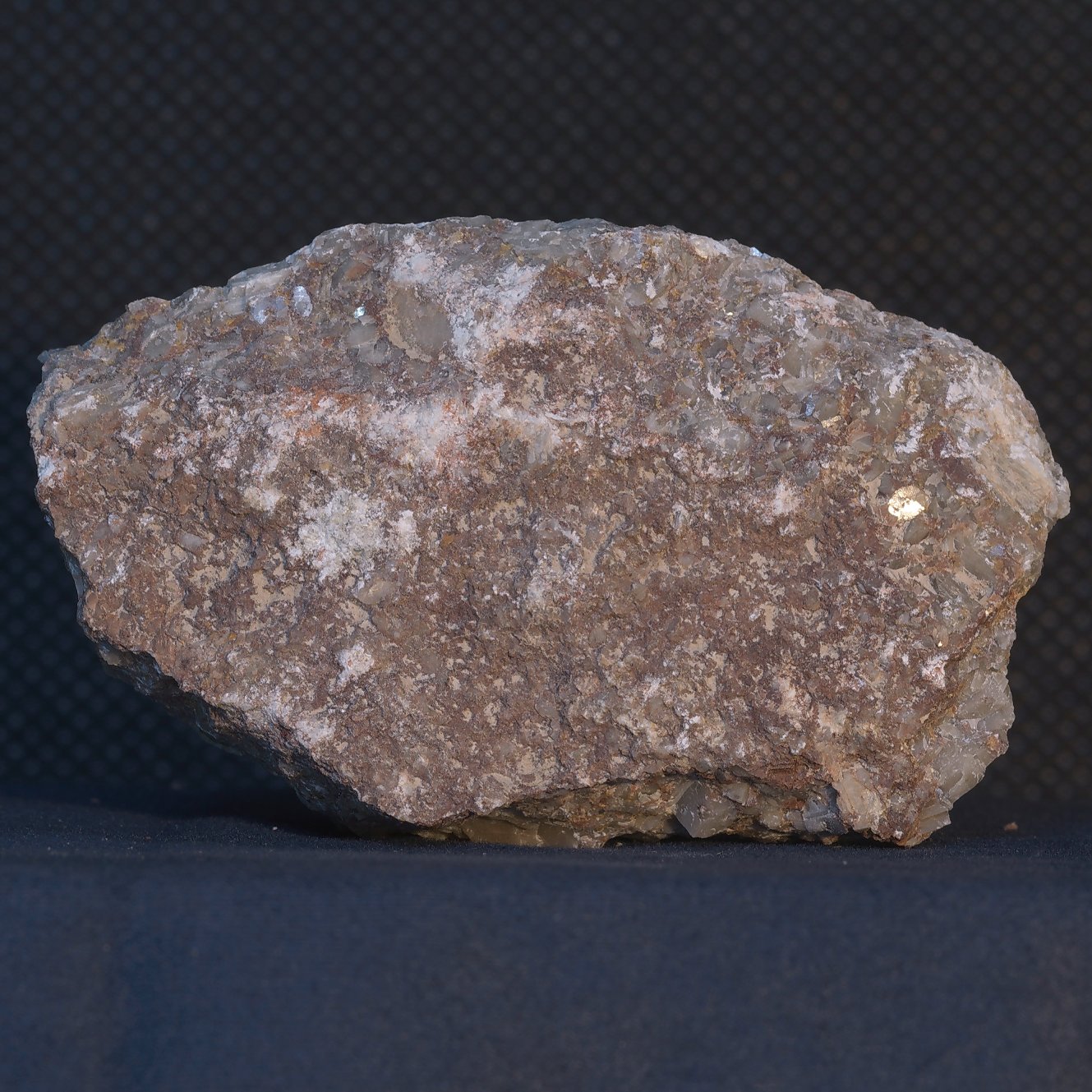
Specimen Qualities
- ID: #49
- Species: Crinoidal Limestone
- Weight: Unknown
- Locality: Derbyshire
- Age: Carboniferous
General Qualities
- Type: Sedimentary
- Composition: Calcite
- Other: Contains crinoid fossils
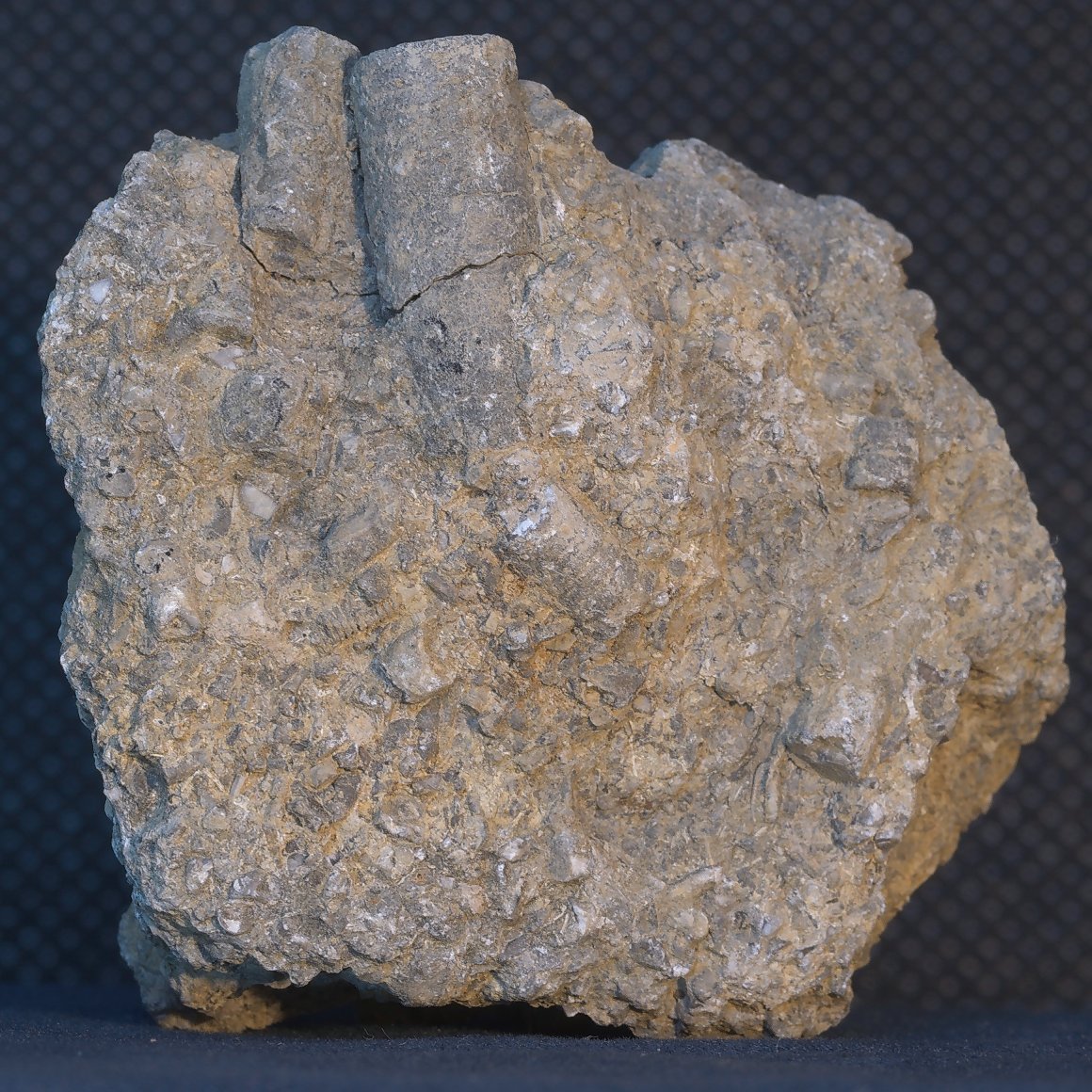
Specimen Qualities
- ID: #48
- Species: Crinoidal Limestone
- Weight: Unknown
- Locality: Clitheroe
- Age: Carboniferous
General Qualities
- Type: Sedimentary
- Composition: Calcite
- Other: Contains crinoid fossils
Notes
A nice part about this locality is that it smells pretty nice when the pie factory nearby is active.
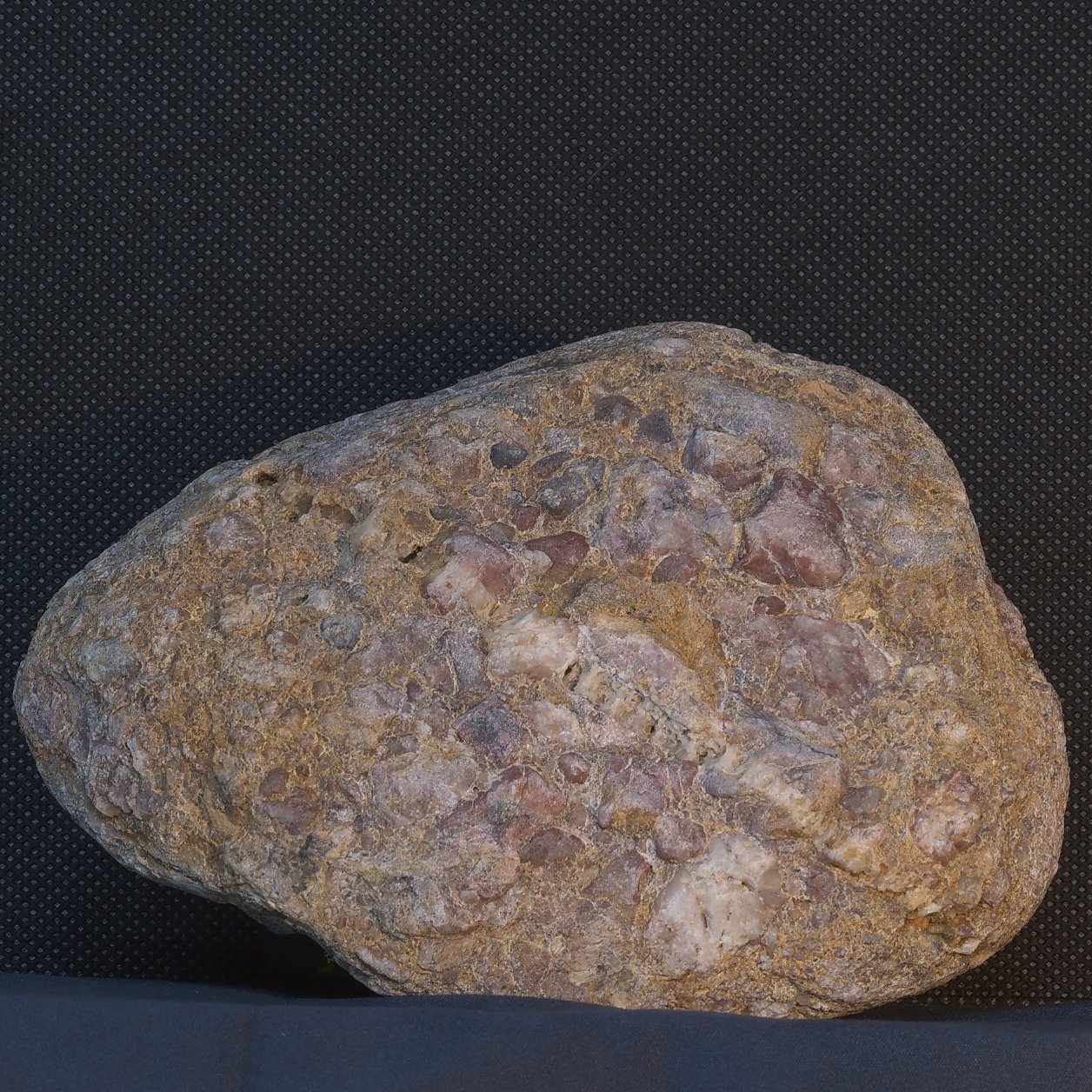
Specimen Qualities
- ID: #47
- Species: Conglomerate
- Weight: Unknown
- Locality: Pembrokeshire
- Age: Unknown
General Qualities
- Type: Sedimentary
- Composition: Gravels surrounded by finer sediments
- Other: N/A
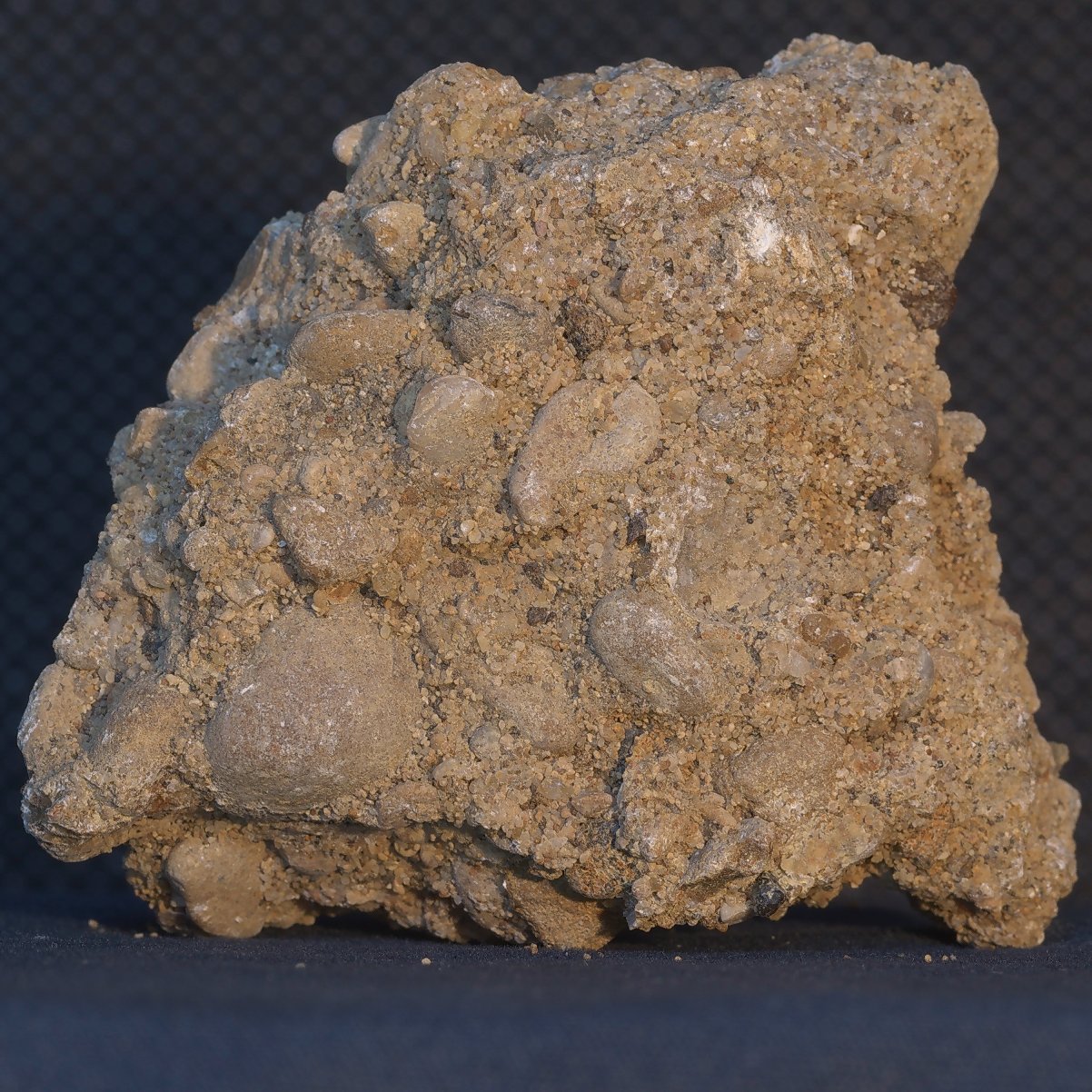
Specimen Qualities
- ID: #46
- Species: Conglomerate
- Weight: Unknown
- Locality: Farrington, UK
- Age: Cretaceous
General Qualities
- Type: Sedimentary
- Composition: Gravels surrounded by finer sediments
- Other: N/A
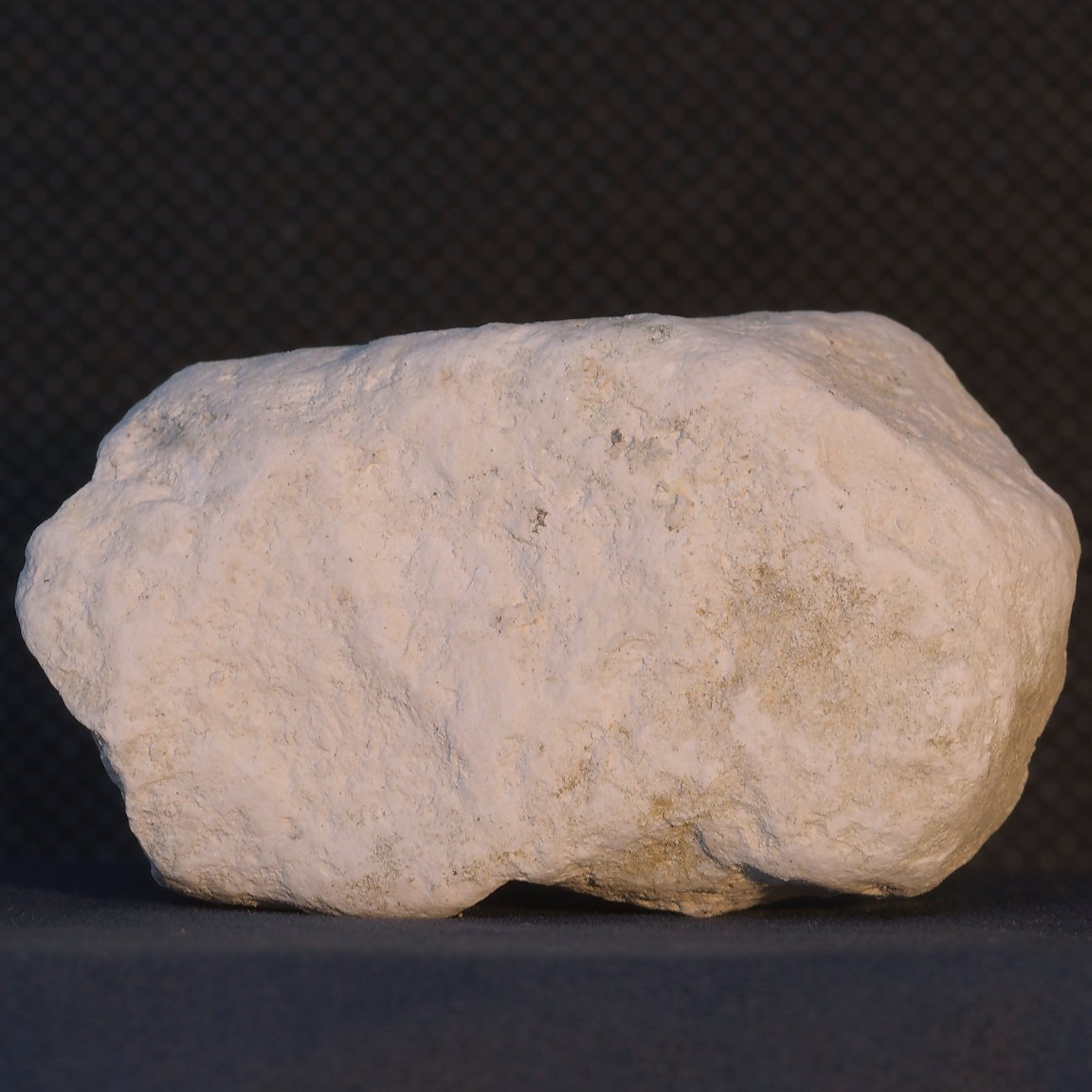
Specimen Qualities
- ID: #45
- Species: Chalk
- Weight: Unknown
- Locality: Yorkshire, UK
- Age: Cretaceous
General Qualities
- Type: Sedimentary
- Composition: Calcite
- Other: Formed of coccolithophore fossils
Notes
The Cretaceous geological era actually derives its name from chalk (literally chalk-bearing) due to how common chalk beds are during that period.
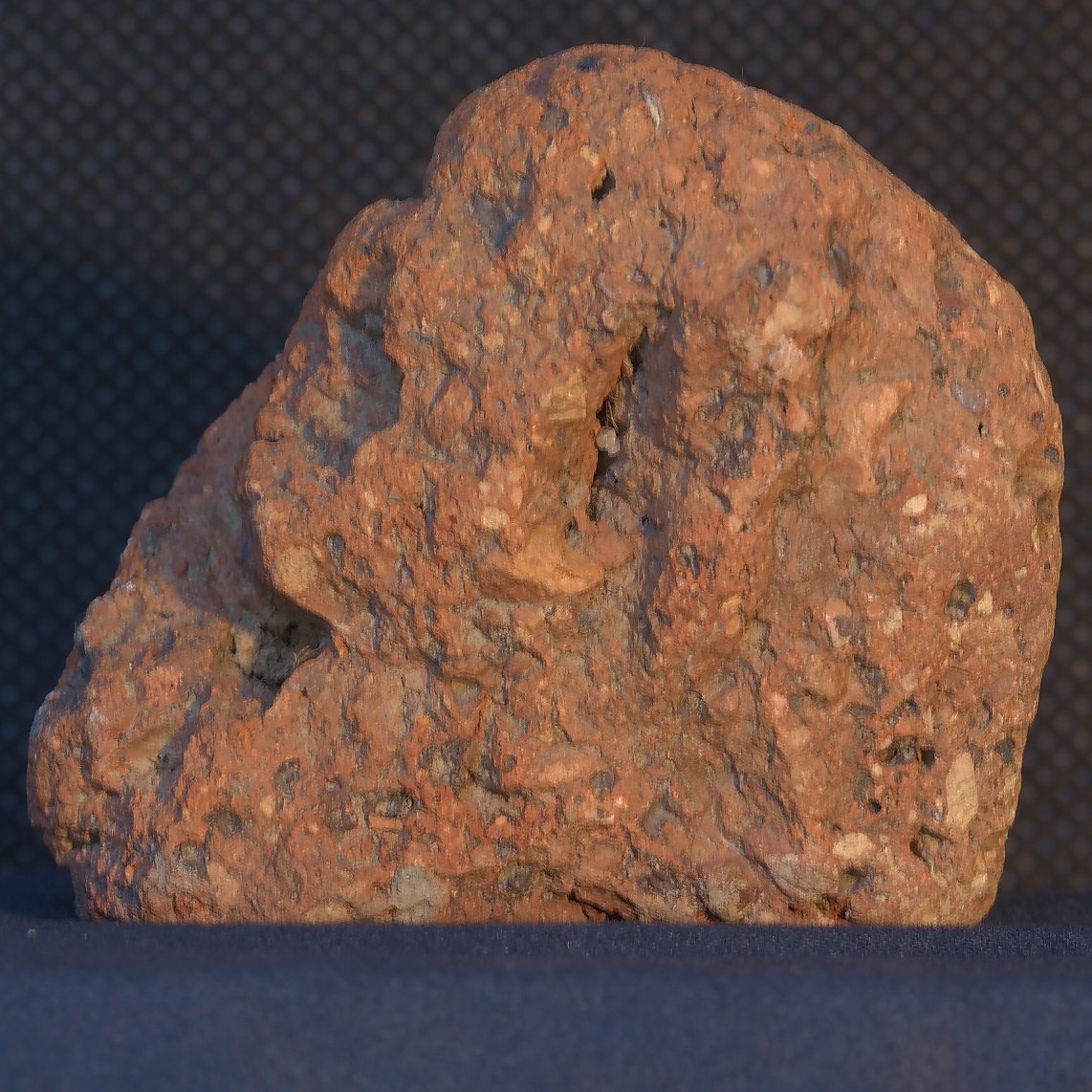
Specimen Qualities
- ID: #44
- Species: Brick
- Weight: Unknown
- Locality: Rivington, UK
- Age: Recent
General Qualities
- Type: Brick
- Composition: Clay
- Other: It's a brick
Notes
What can I say, it's a brick. However it's a pretty cool looking brick.
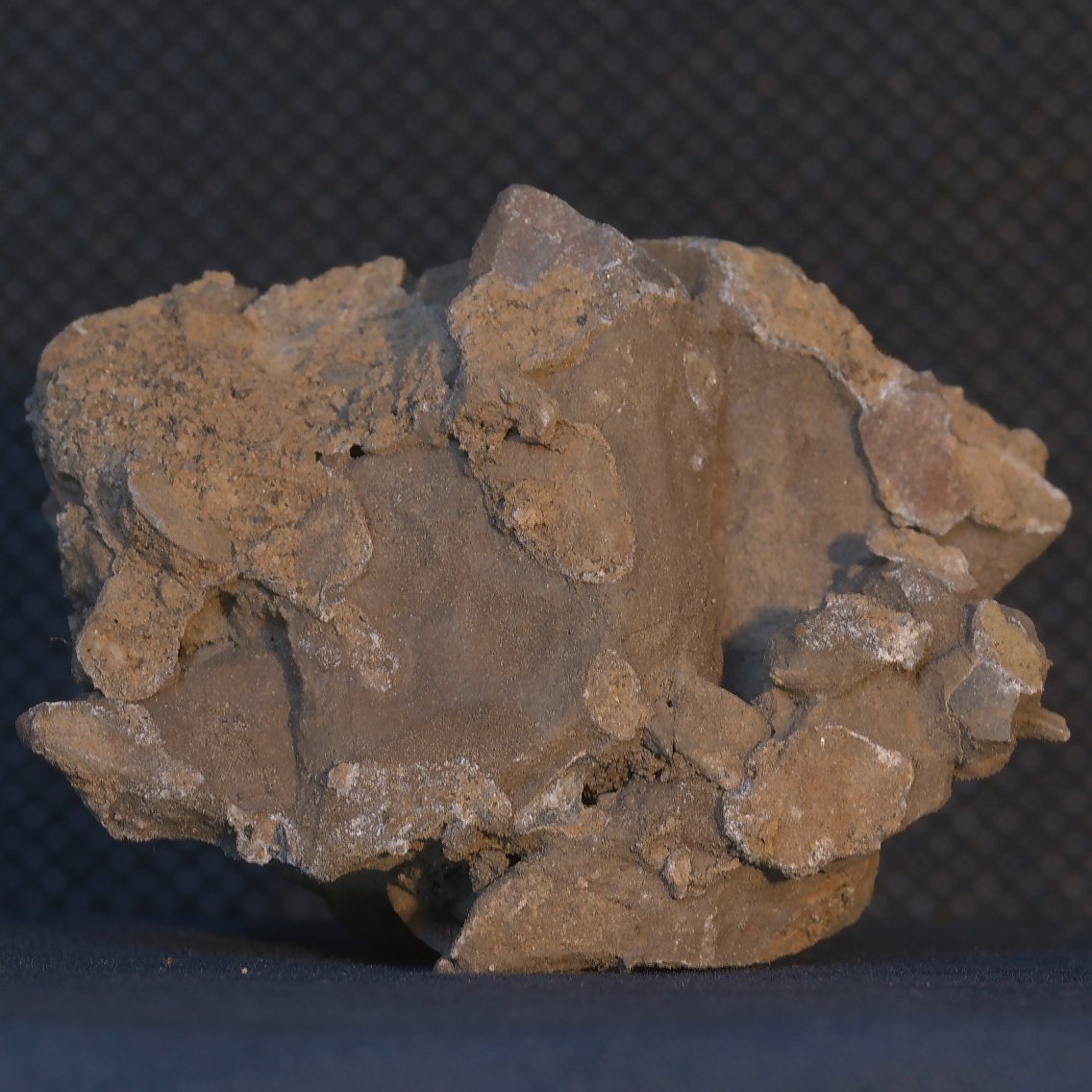
Specimen Qualities
- ID: #43
- Species: Breccia
- Weight: Unknown
- Locality: Ilam, Staffordshire, UK
- Age: Pleistocene
General Qualities
- Type: Sedimentary
- Composition: Large angular clasts cemented together by finer grains
- Other: N/A
Notes
Conglomerate's evil twin.
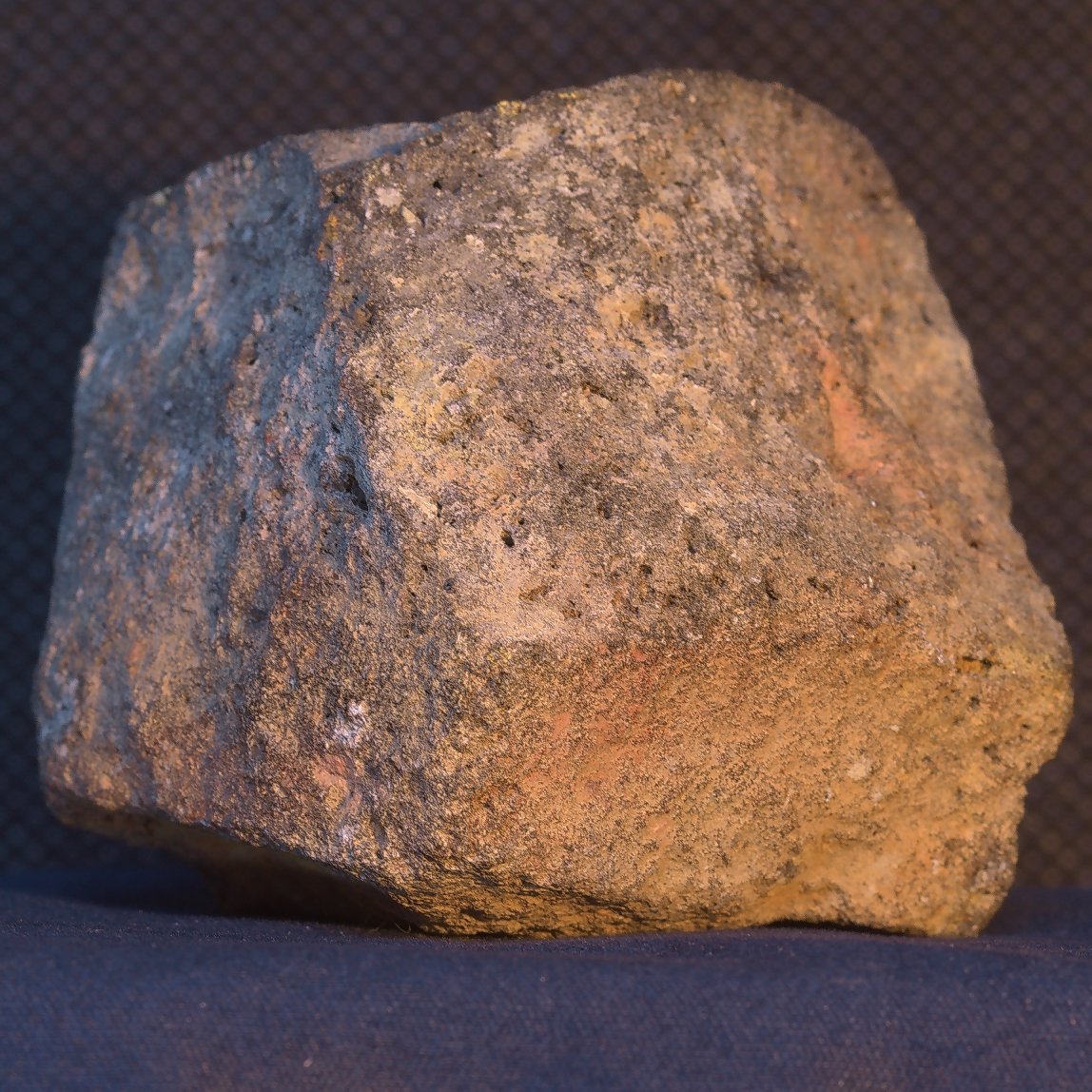
Specimen Qualities
- ID: #42
- Species: Basalt
- Weight: Unknown
- Locality: Nea Kameni, Greece
- Age: Unknown
General Qualities
- Type: Igneous
- Composition: Mafic
- Depth: Extrusive
- Texture: Fine-grained with vesicles
- Other: Major component of ocean crust, which is almost entirely volcanic in origin
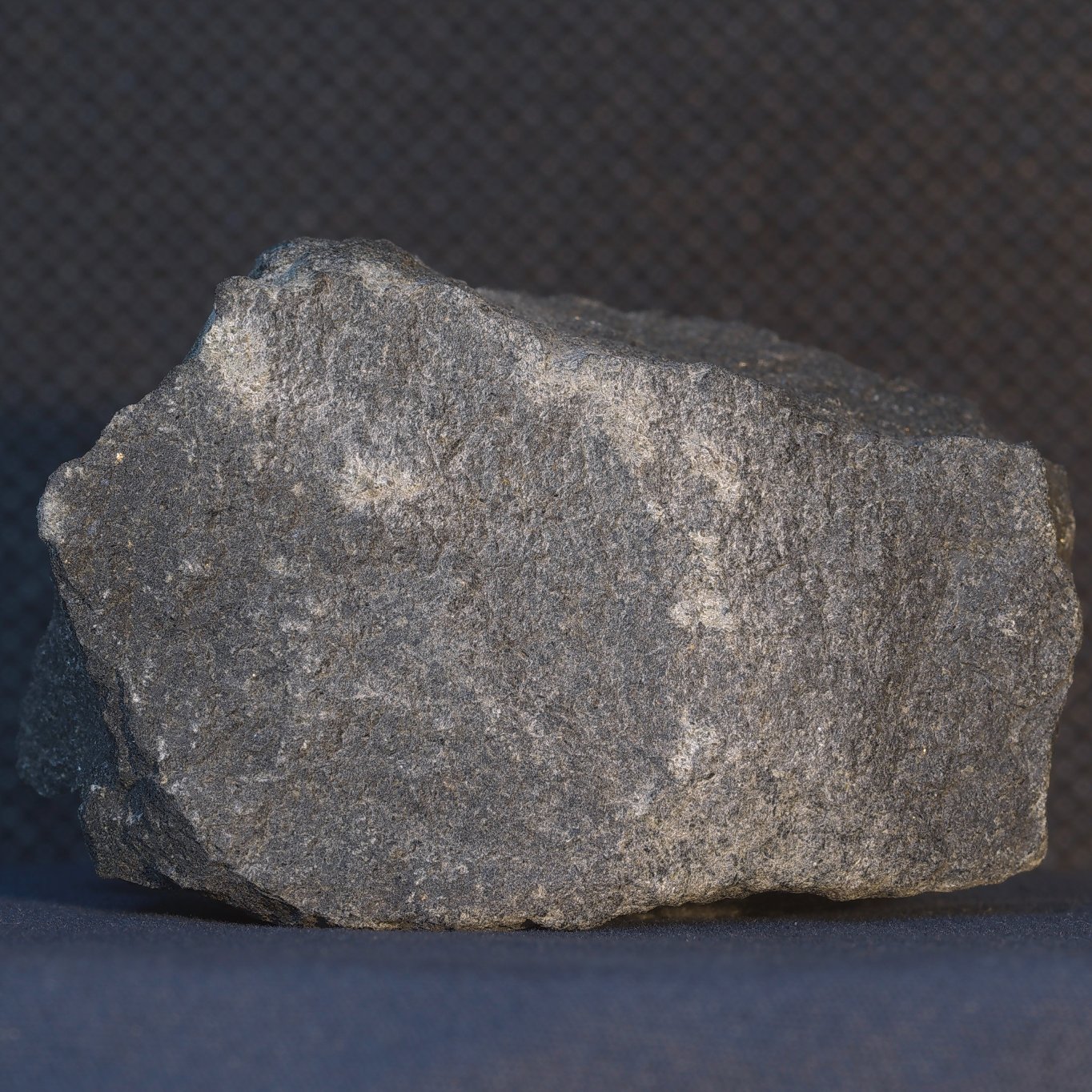
Specimen Qualities
- ID: #41
- Species: Basalt
- Weight: Unknown
- Locality: Northern Ireland
- Age: Tertiary
General Qualities
- Type: Igneous
- Composition: Mafic
- Depth: Extrusive
- Texture: Fine-grained with vesicles
- Other: Major component of ocean crust, which is almost entirely volcanic in origin
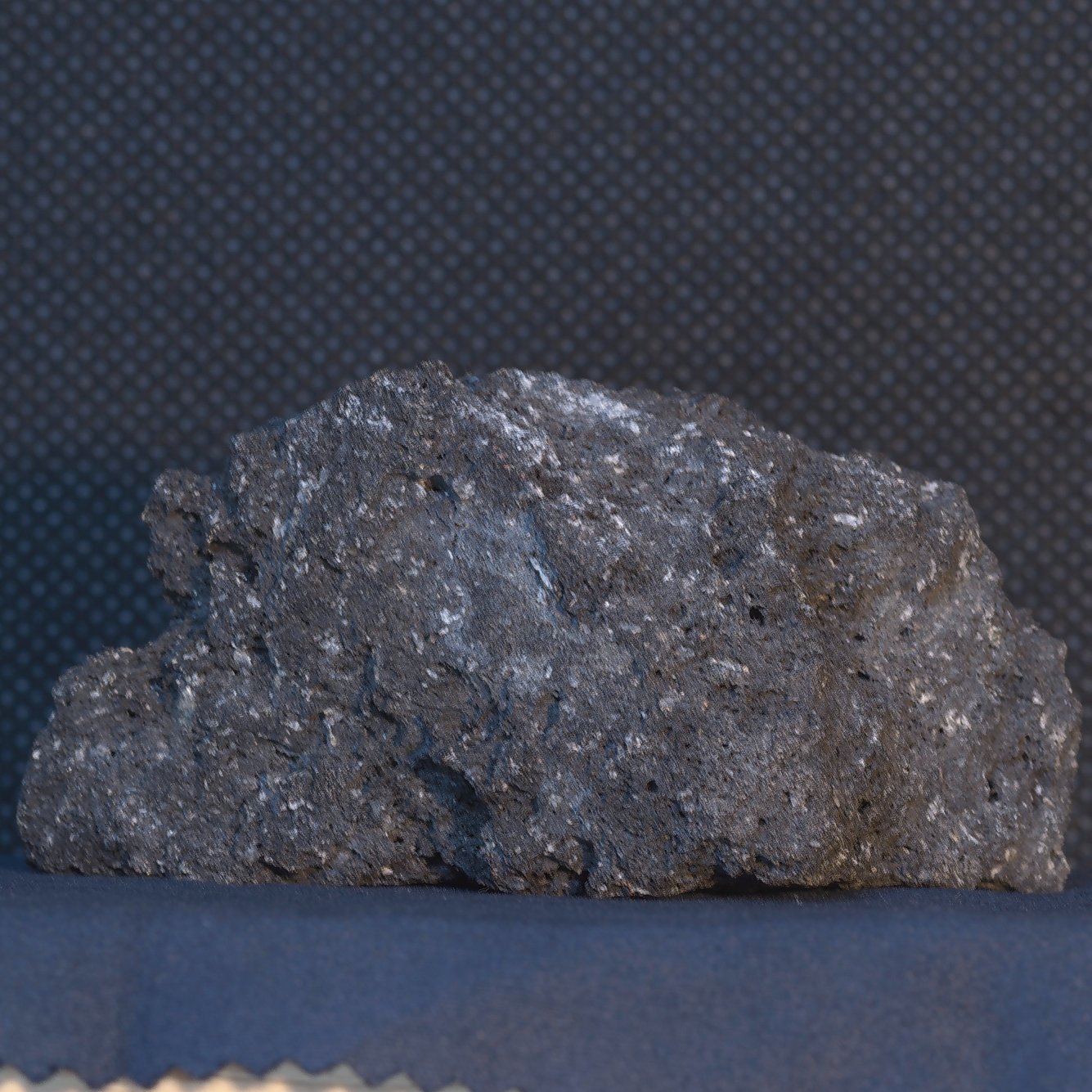
Specimen Qualities
- ID: #40
- Species: Basalt
- Weight: Unknown
- Locality: Unknown
- Age: Unknown
General Qualities
- Type: Igneous
- Composition: Mafic
- Depth: Extrusive
- Texture: Fine-grained with vesicles
- Other: Major component of ocean crust, which is almost entirely volcanic in origin

Specimen Qualities
- ID: #10
- Species: Quartz Geode
- Weight: Unknown
- Locality: Canary Islands
- Age: Unknown
General Qualities
- Type: Sedimentary
- Composition: Limestone(?) infilled with Quartz
- Other: In two unequal halves
Notes
Geodes form when minerals, in this case quartz, precipitate out of a solution that enters or passes through a hollow rock or cavity. I'm not entirely certain of what the original rock in this sample is, but who cares we're here to look at it's innards.
An incredibly funny specimen I was given once is another geode, but the rock was cheaply painted black and the crystals dyed a comically piss-yellow neon.

Specimen Qualities
- ID: #2
- Species: Quartz Monzonite
- Weight: Unknown
- Locality: Shap Fell, Cumbria, UK
- Age: Devonian
General Qualities
- Type: Igneous
- Composition: Felsic
- Depth: Intrusive
- Texture: Porphyritic crystalline
- Other: N/A
Notes
I originally mistook this specimen for a pink granite, but the identification it came with describes it as a monzonite. It turns out it's a very similar rock in terms of formation, texture and composition that has a lower proportion of quartz. Granite has 20% quartz or more, a monzonite only has 5-20%.

Specimen Qualities
- ID: #4
- Species: Quartz Monzonite
- Weight: Unknown
- Locality: Hebei, China
- Age: Unknown
General Qualities
- Type: Igneous
- Composition: Ultramafic
- Depth: Mantle
- Texture: Coarse-grained
- Other: Greer
Notes
Peridotite dominates the composition of the upper regions of Earth's mantle and is thus directly inaccessible to us. So, the reason samples of it are even obtainable is because peridotite is often brought up to the surface as an inclusion in basalt lavas, as partial melting of the mantle results in a mafic magma. The black at the top of the sample (not the small crystals) is basalt.

Specimen Qualities
- ID: #6
- Species: Anthracite Coal
- Weight: Unknown
- Locality: South Wales
- Age: Carboniferous
General Qualities
- Type: Sedimentary
- Composition: 86-97% Carbon
- Other: The purest form of coal and thus highest density of energy
Notes
Coal is formed from low-grade metamorphism (heat and pressure acting on a rock) of organic matter, the greater the degree of metamorphism the higher the "rank" of coal. The progression goes from peat to lignite to bituminous to anthracite.
Predominantly, coal is found in Carboniferous beds which is where the name is derived from (coal-bearing).

Specimen Qualities
- ID: #7
- Species: Basalt
- Weight: Unknown
- Locality: Nea Kameni, Greece
- Age: Unknown
General Qualities
- Type: Igneous
- Composition: Mafic
- Depth: Extrusive
- Texture: Fine-grained with vesicles
- Other: Major component of ocean crust, which is almost entirely volcanic in origin
Notes
Basalt is an extremely common volcanic rock with a low viscosity. This low visicosity allows for the formation of flood basalts which can form large igneous provinces such as the Deccan Traps of India.
I highlight this quality of basalts because the formation of LIPs is correlated with mass-extinction events throughout Earth's history. In particular I mentioned the Deccan Traps as it formed 66 million years ago, the same time as the end-Cretaceous extinction that is famous for wiping out non-avian dinosaurs. A meteorite impact (the Chixculub Impact) is popularly seen as the cause, however in reality it was likely a combination of the two.

Specimen Qualities
- ID: #8
- Species: Desert Sandstone
- Weight: Unknown
- Locality: Penrith, Cumbria
- Age: Permian
General Qualities
- Type: Sedimentary
- Composition: Quartz with hematite cement
- Texture: Very well sorted and rounded clasts
- Other: Horribly prone to leaving grains everywhere
Notes
Desert sandstone is the gift that keeps on giving, because if you don't secure it in some kind of container it will scatter grains of sand in every crevice nearby like there's no tomorrow.
Regardless, sandstones form from the cementation of sediments eroded out of an older parent rock, this process is the reason sands are dominated by quartz and feldspar. The composition of those two minerals make them the most resistant to weathering, while their siblings are essentially completely worn away.
Fossils
Count: 6
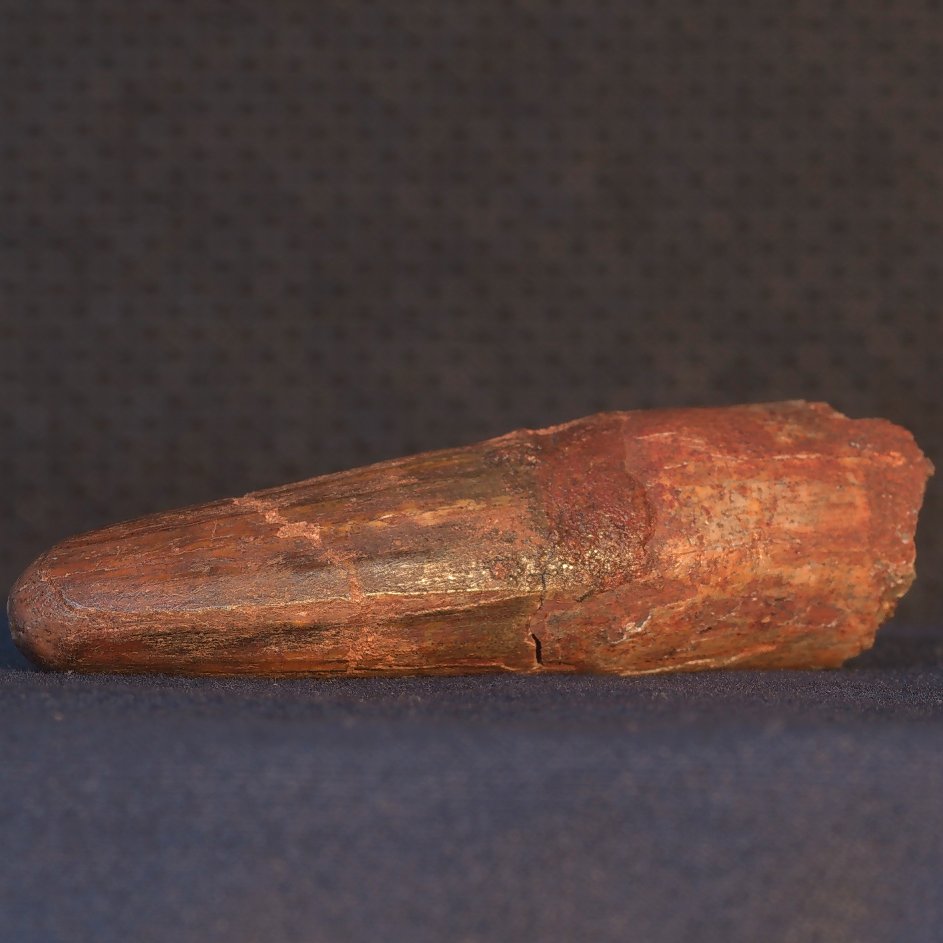
Specimen Qualities
- ID: #39
- Species: Spinosaurus Aegyptiacus
- Weight: Unknown
- Length: Unknown
- Width: Unknown
- Locality: Erfoud, Morocco
- Age: Late Jurassic
General Qualities
- Phylum: Chordata
- Clade: Dinosauria
- Temporal Range: Late Cretaceous
- Other: N/A
Notes
He was a semi-aquatic, egg-laying reptile of action!
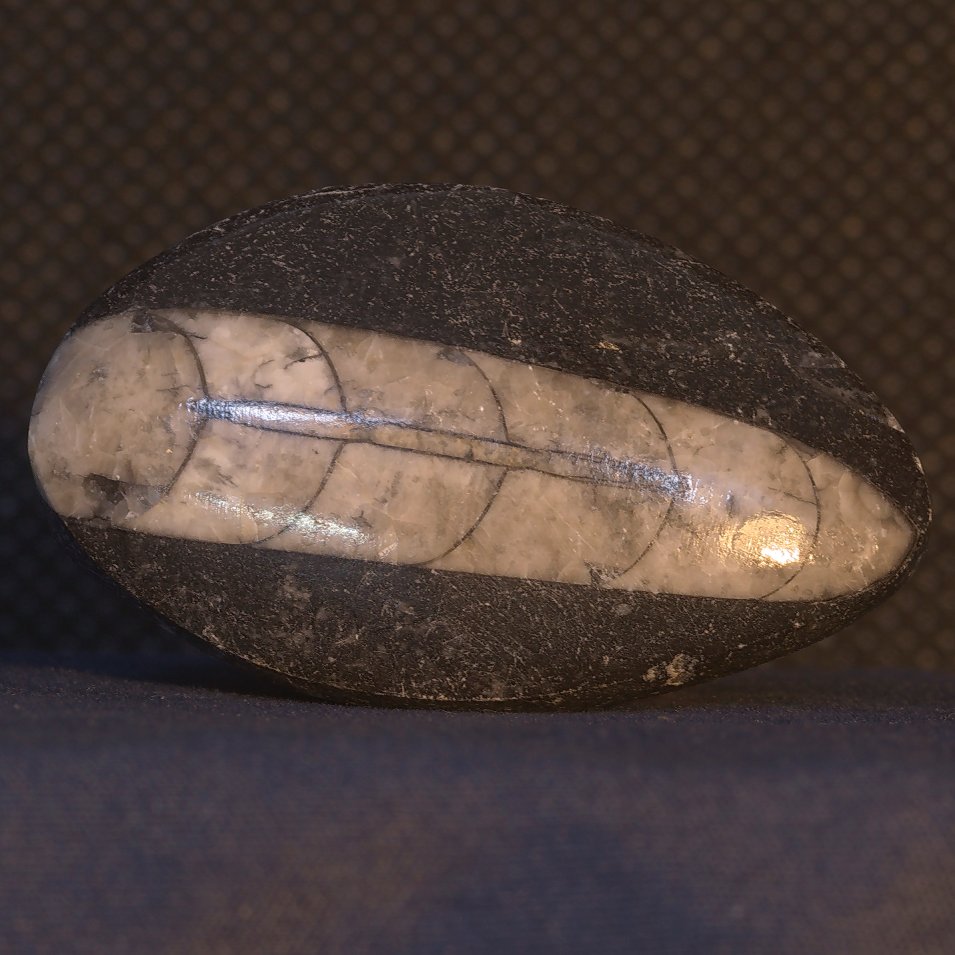
Specimen Qualities
- ID: #38
- Species: Nautiloid
- Weight: Unknown
- Length: Unknown
- Width: Unknown
- Locality: Unknown
- Age: Unknown
General Qualities
- Phylum: Mollusca
- Class: Cephalopoda
- Temporal Range: Cambrian-Recent
- Other: N/A
Notes
These guys have been around for 495 million years now, they've seen everything; Trilobites, the Great Ordovician Biodiversity Event, the P-T extinction, Pangaea, Pangaea's breakup, the Chicxulub Impact, the Holocene, 9/11, the iPhone.
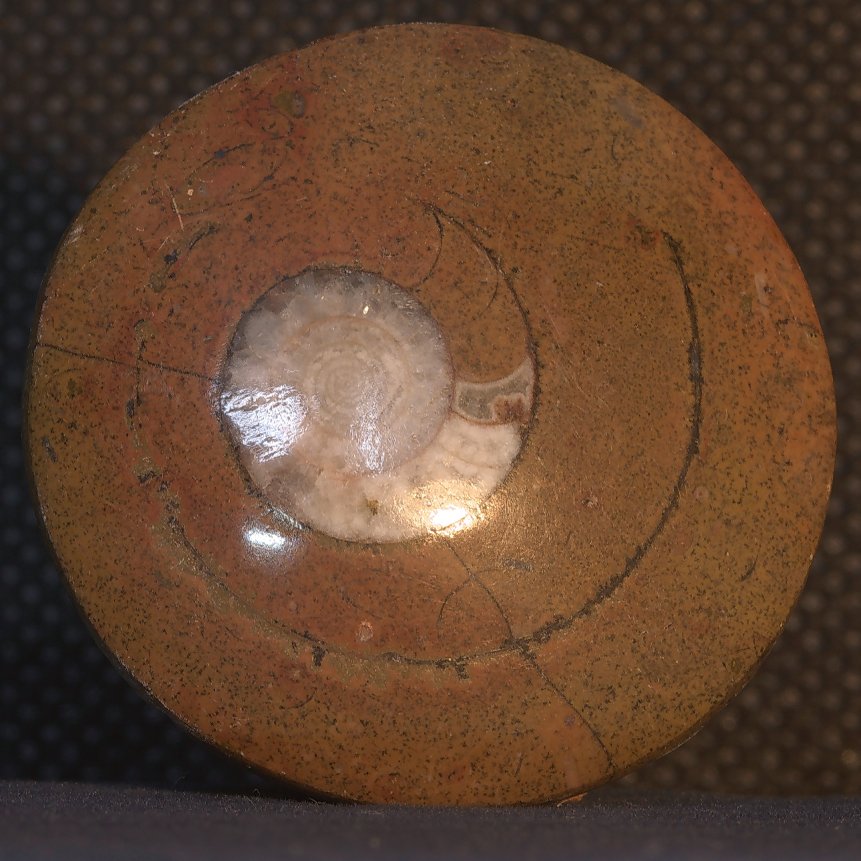
Specimen Qualities
- ID: #37
- Species: Ammonoid
- Weight: Unknown
- Circumference: Unknown
- Locality: Unknown
- Age: Unknown
General Qualities
- Phylum: Mollusca
- Class: Cephalopoda
- Temporal Range: Devonian-Cretaceous
- Other: More closely relates to squids than modern nautiloids
Notes
I won this in a university meme contest.
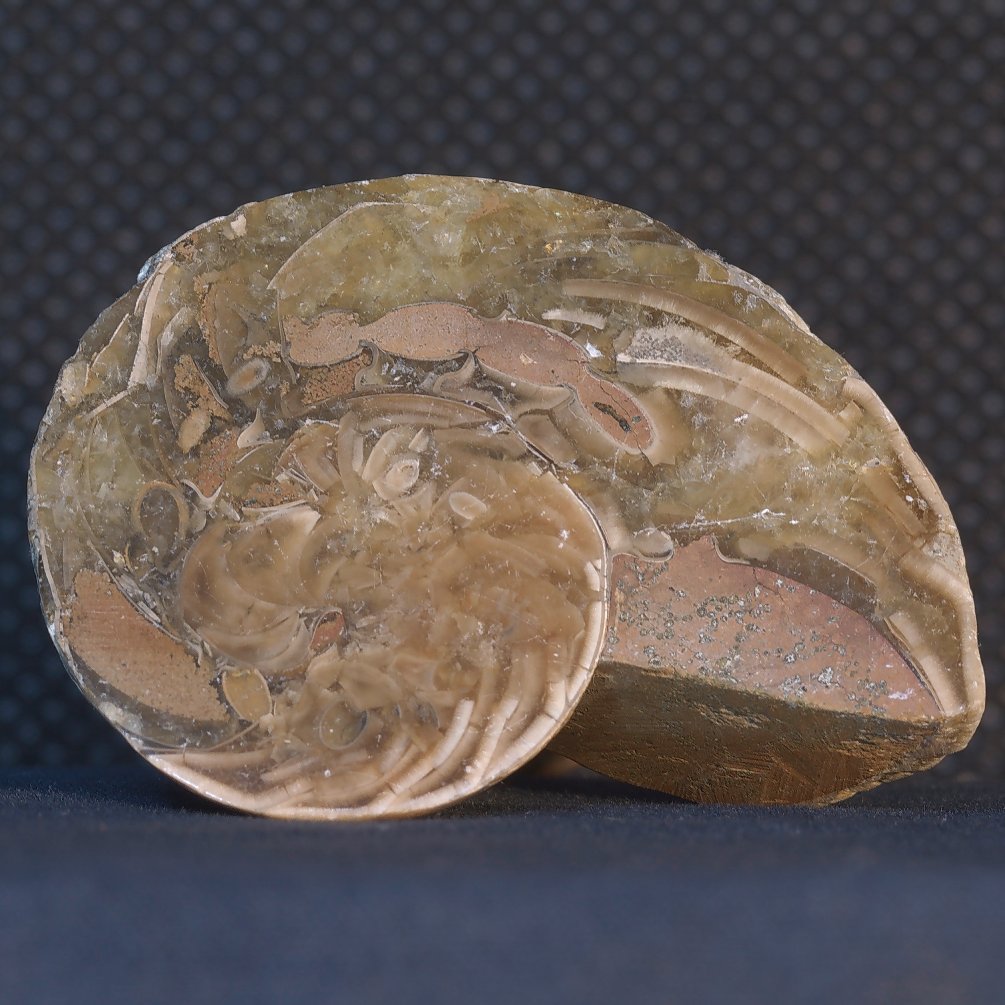
Specimen Qualities
- ID: #36
- Species: Ammonoid
- Weight: Unknown
- Length: 6.5cm
- Width: 4.5cm
- Locality: Unknown
- Age: Unknown
General Qualities
- Phylum: Mollusca
- Class: Cephalopoda
- Temporal Range: Devonian-Cretaceous
- Other: More closely relates to squids than modern nautiloids
Notes
Later ammonoids began to exhibit "unrolled" morphologies, which resulted in some specimens living their entire life staring at their backside.
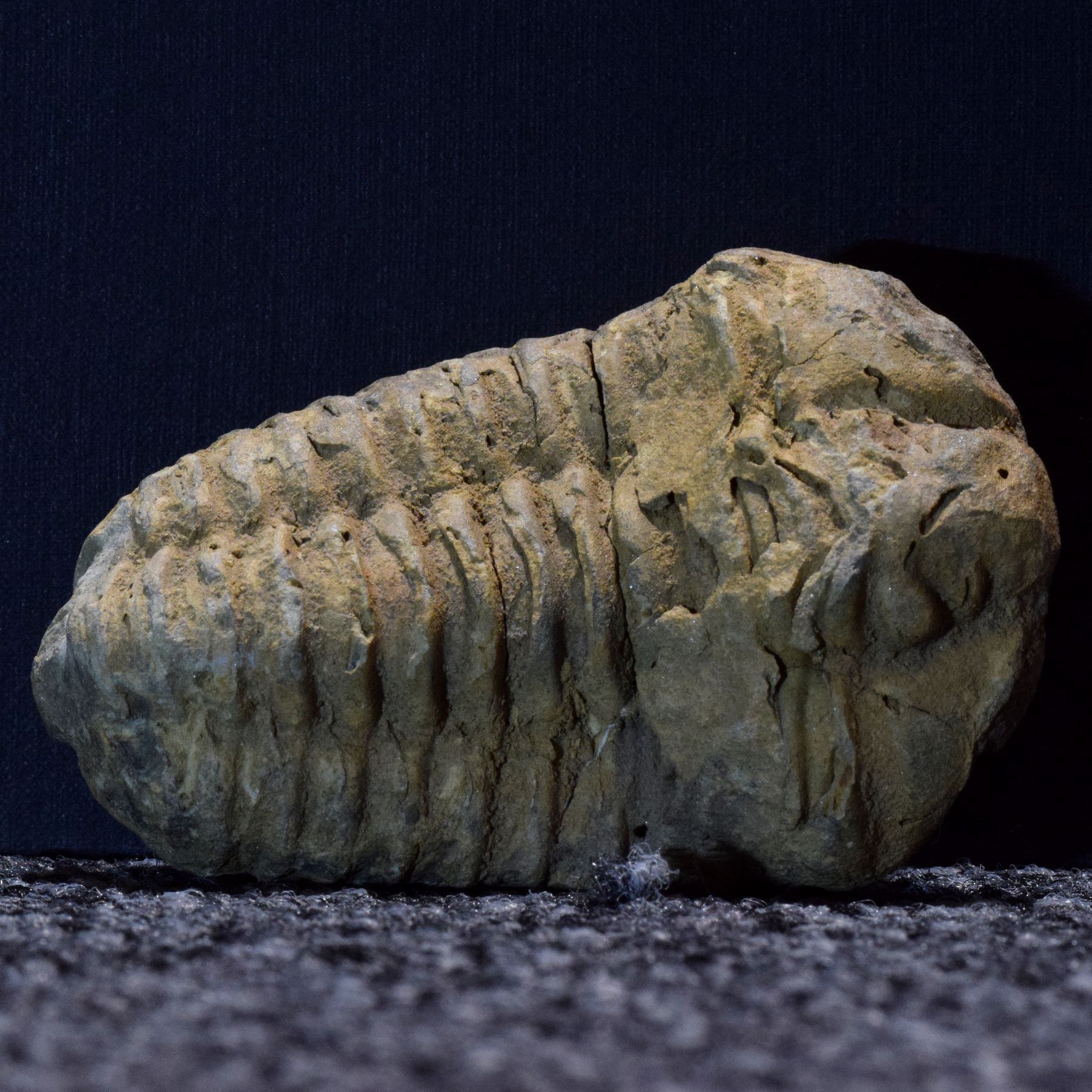
Specimen Qualities
- ID: #5
- Species: Flexicalymene Trilobite
- Weight: Unknown
- Length: 6.5cm
- Width: 4.5cm
- Locality: Erfoud, Morocco
- Age: Ordovician
General Qualities
- Phylum: Arthropod
- Class: Trilobita
- Temporal Range: Mid-Ordovician - Mid-Silurian
- Other: Commonly found enrolled
Notes
Trilobites are probably my favourite animal and will be intensely familiar to anyone who's had a palaeontology lesson.
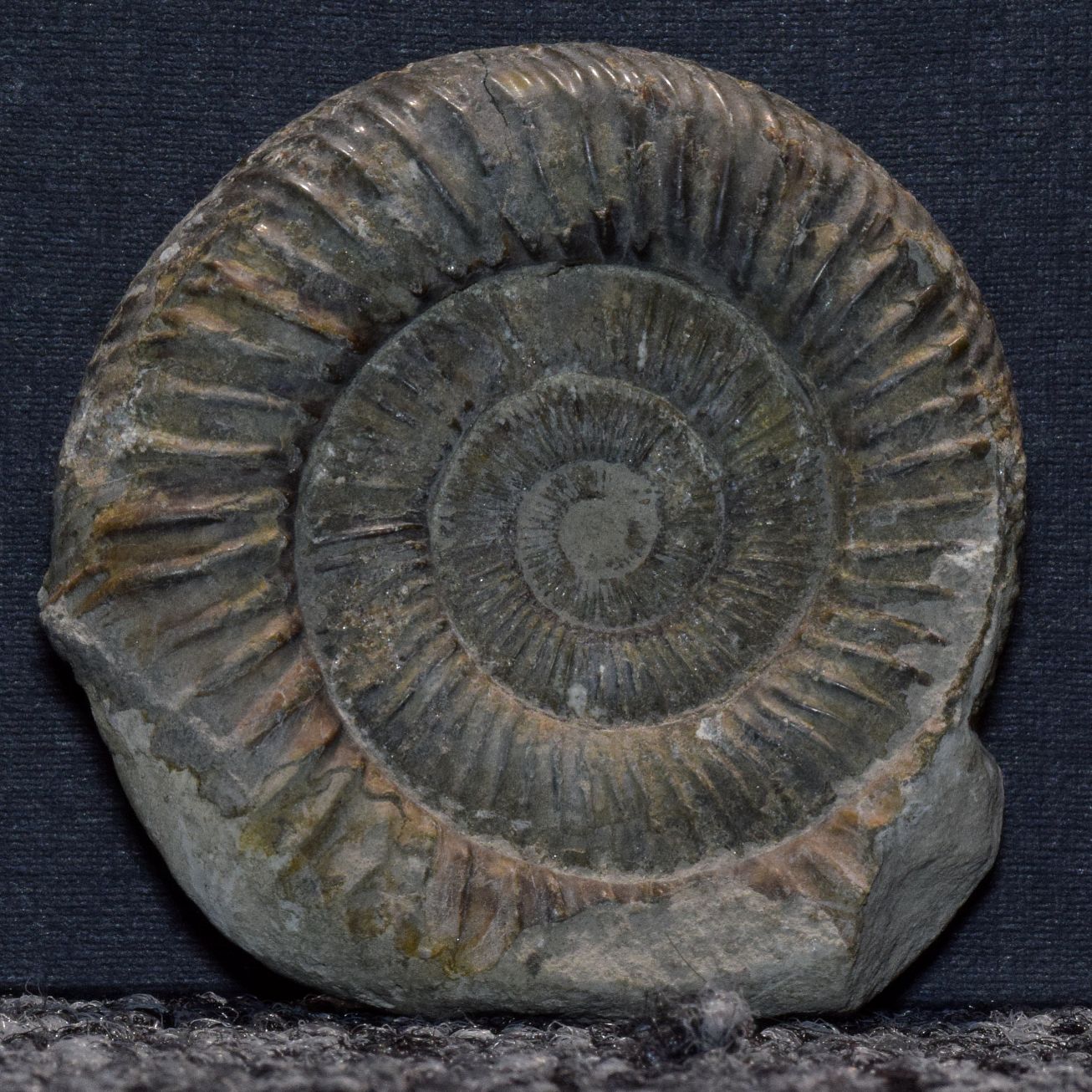
Specimen Qualities
- ID: #9
- Species: Ammonoid
- Weight: Unknown
- Circumference: 15.7cm
- Locality: Unknown
- Age: Unknown
General Qualities
- Phylum: Mollusca
- Class: Cephalopoda
- Temporal Range: Devonian-Cretaceous
- Other: More closely relates to squids than modern nautiloids
Notes
I'd argue ammonoids constitute the most "iconic" marine fossils, likely owing to their spiral morphology and common nature. Although they are incredibly important palaeontologically, serving as excellent index fossils or fossils characteristic of a specific geologic period that therefore help to easily identify the age of a bed.
Other
Count: 3
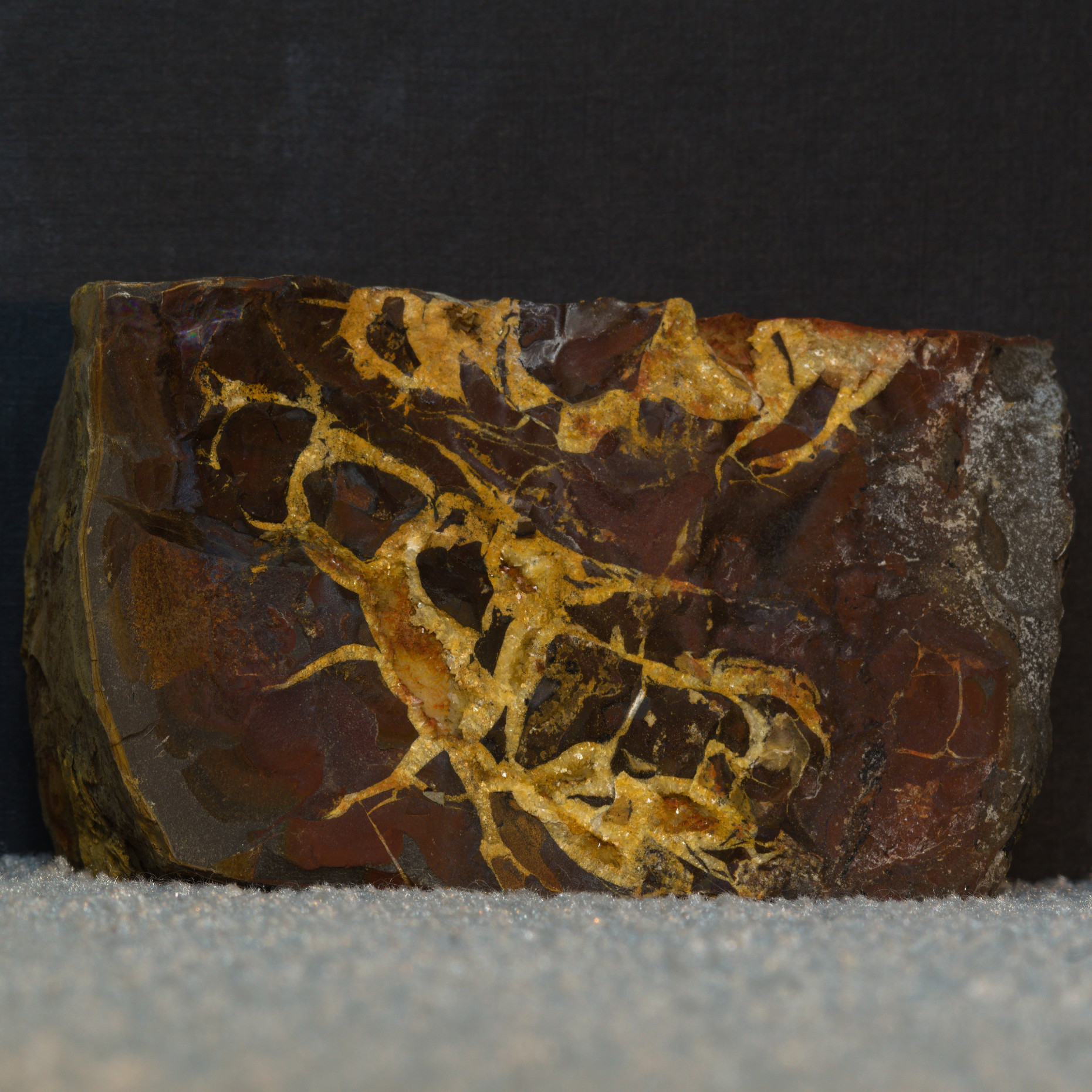
Specimen Qualities
- ID: #73
- Name: Septarian Nodule
- Type: Concretion
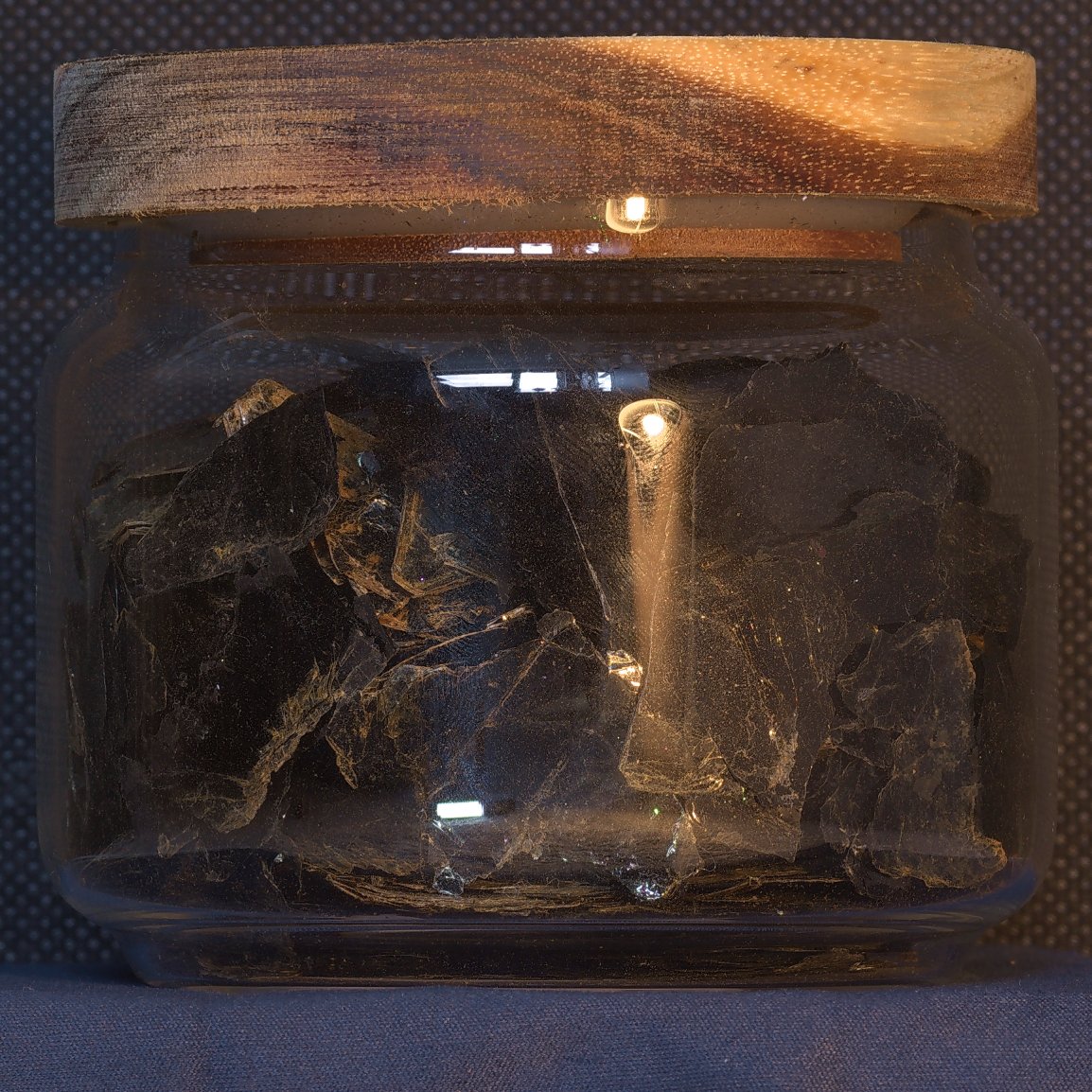
Specimen Qualities
- ID: #35
Notes
If you ever find yourself enticed by the offer of one kilogram of biotite mica for the low low price of five Great British pounds please consider the following questions; how much biotite actually is that, what use do I have for one kilogram of biotite and where do I keep one kilogram of biotite. I considered absolutely none of these questions when making my purchase.
The mica jar is one of my most prized possessions, but this jar doesn't even contain all of it, most of it remains in the original bag.
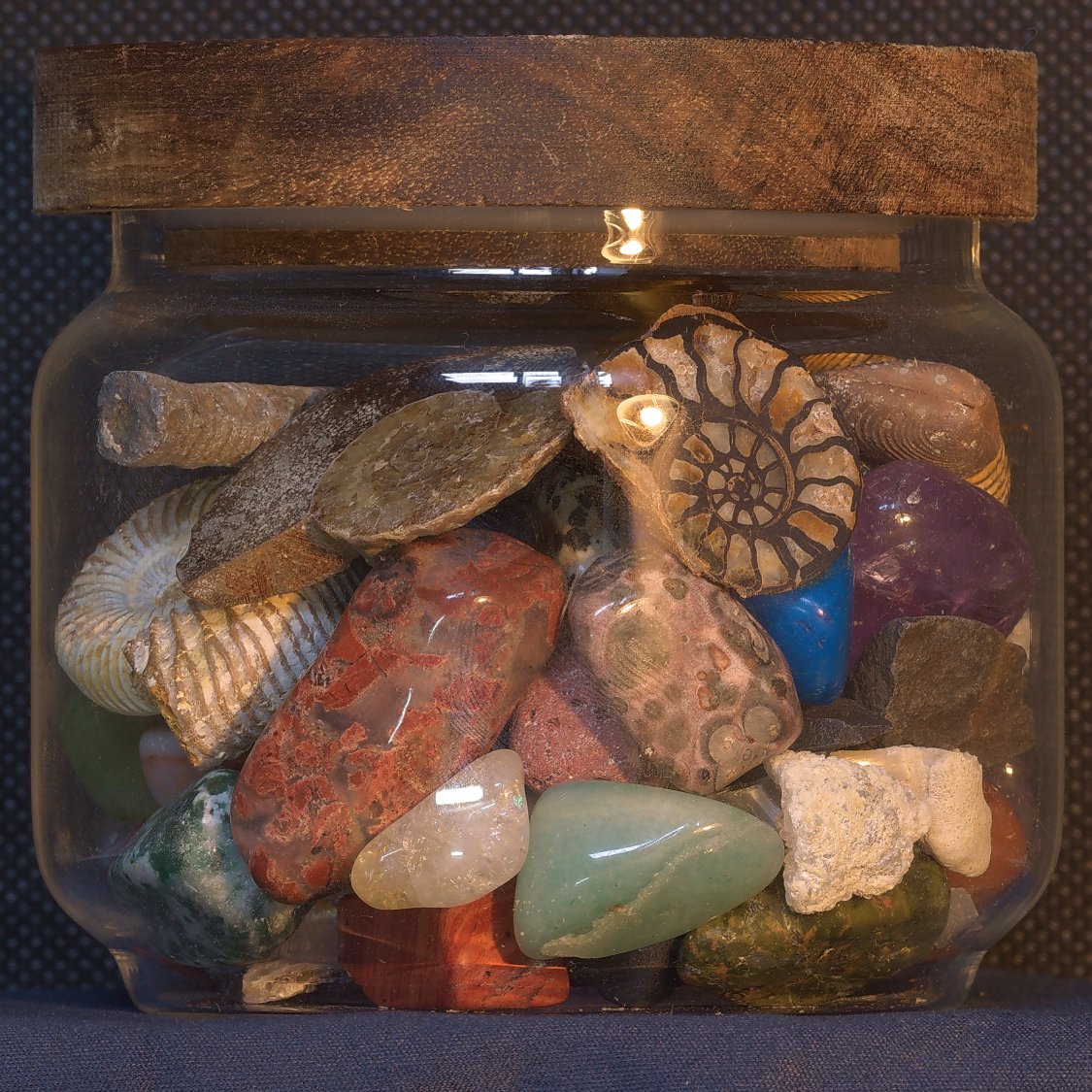
Specimen Qualities
- ID: #34
Notes
This jar contains all the smaller specimens and tumblestones from my collection. It contains gifts from an advent calendar, random fossils and stained glass.
